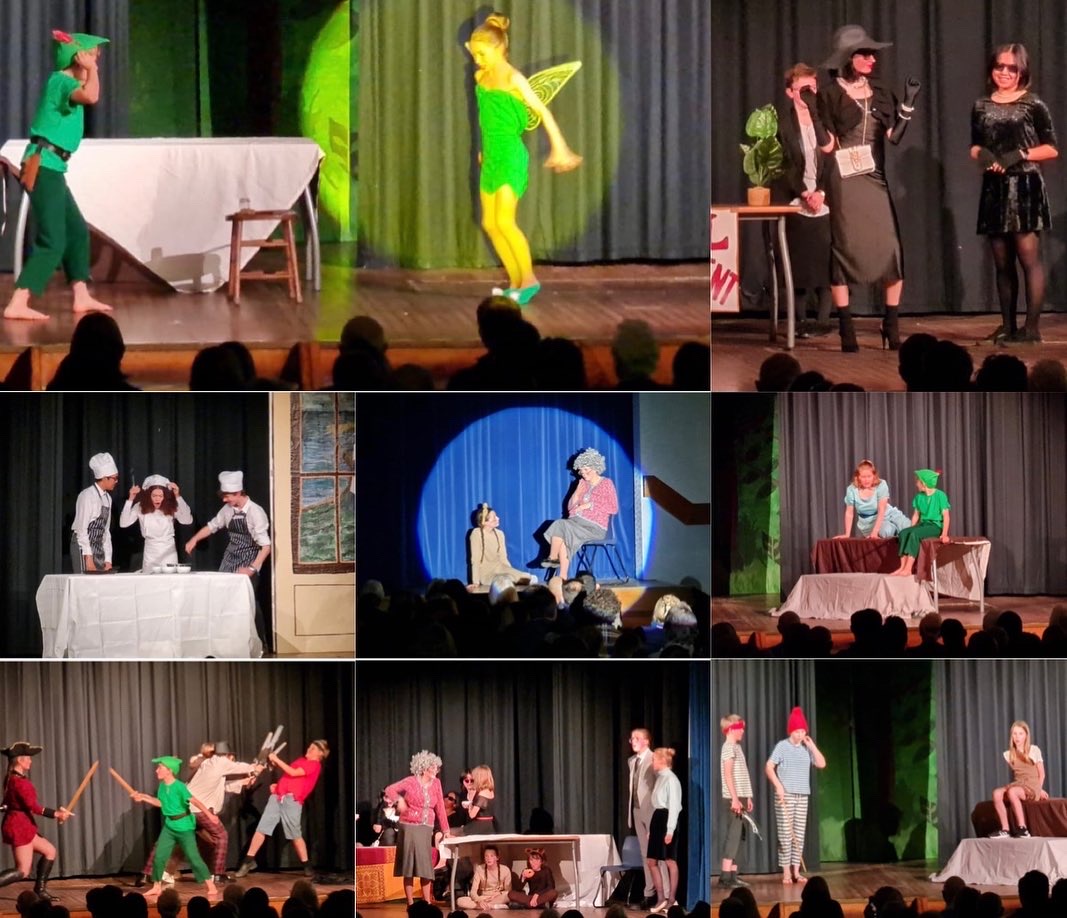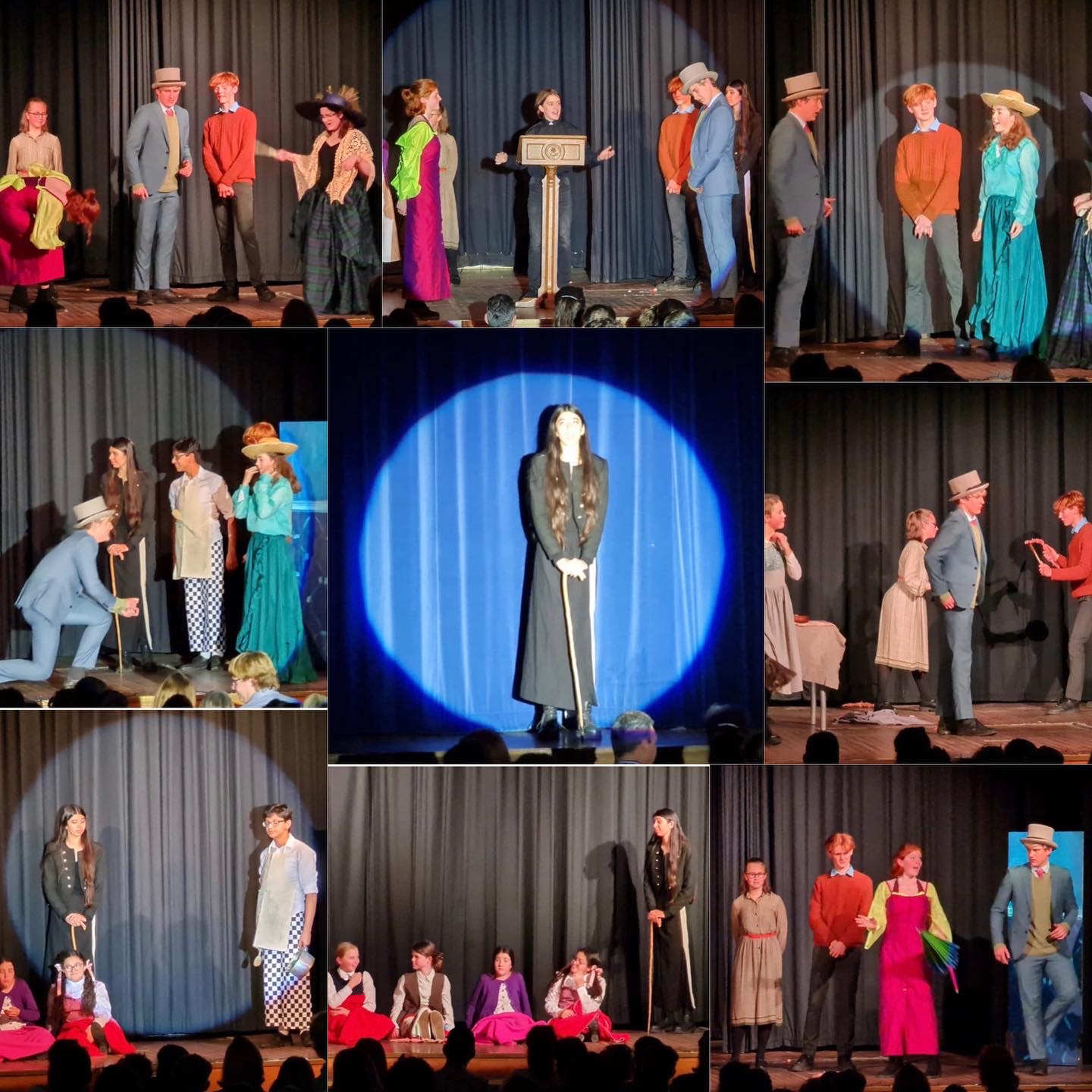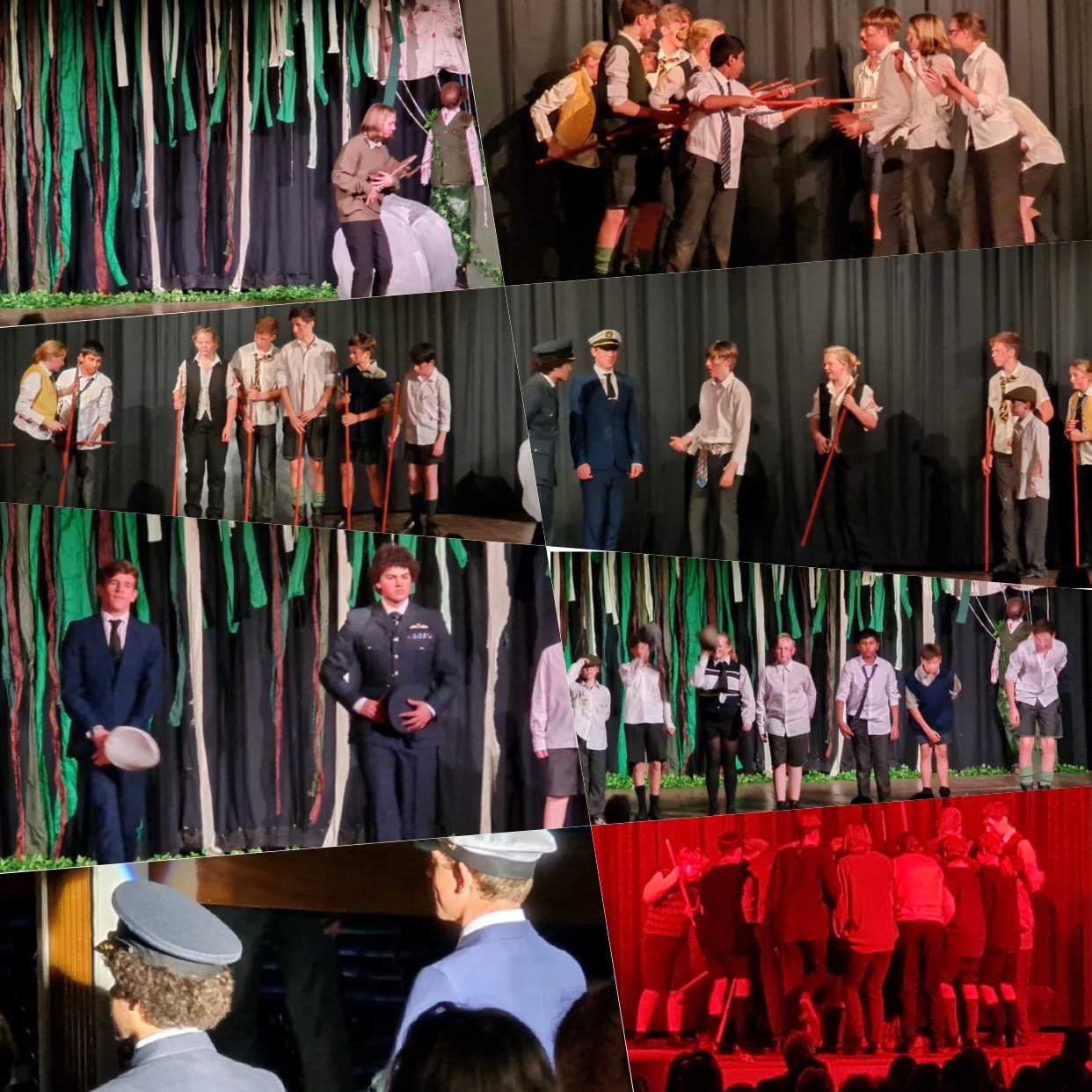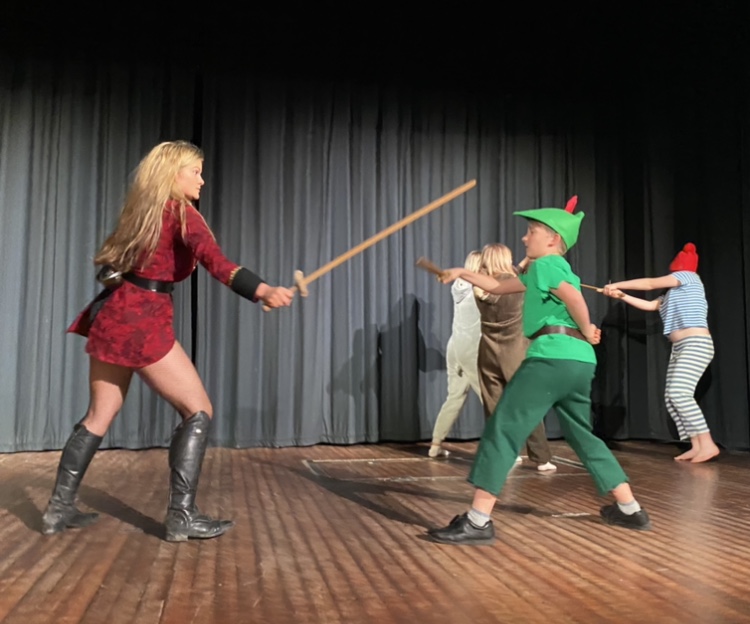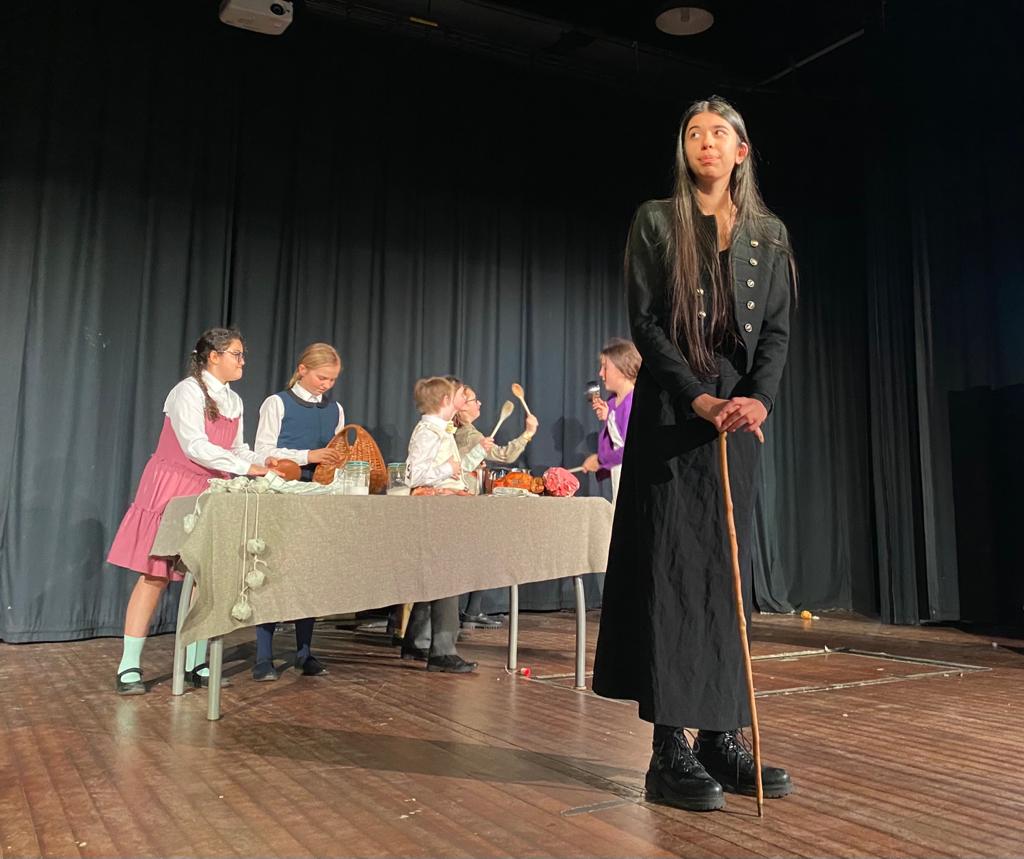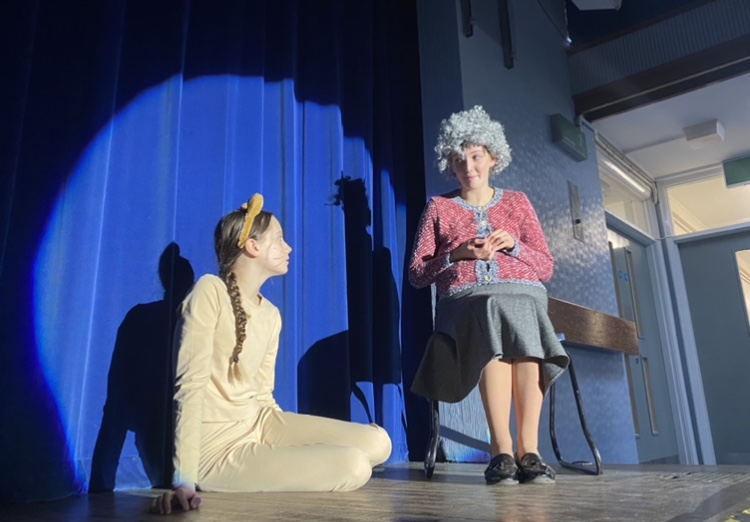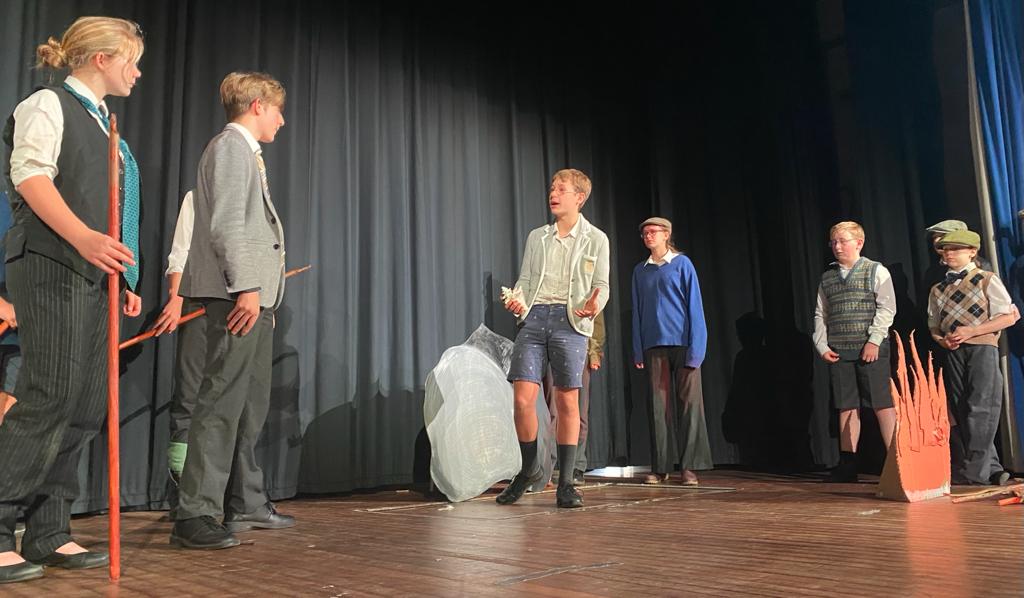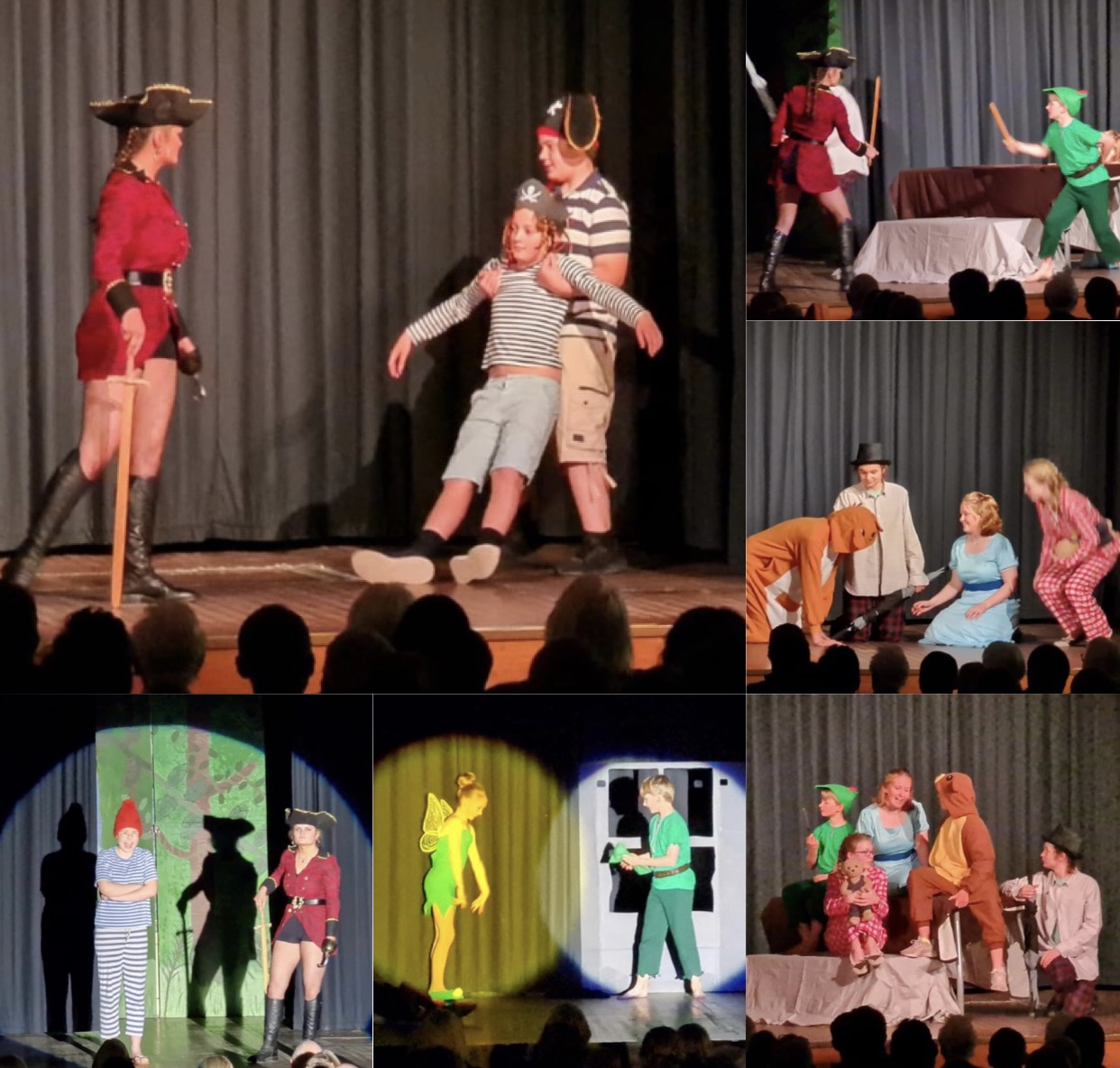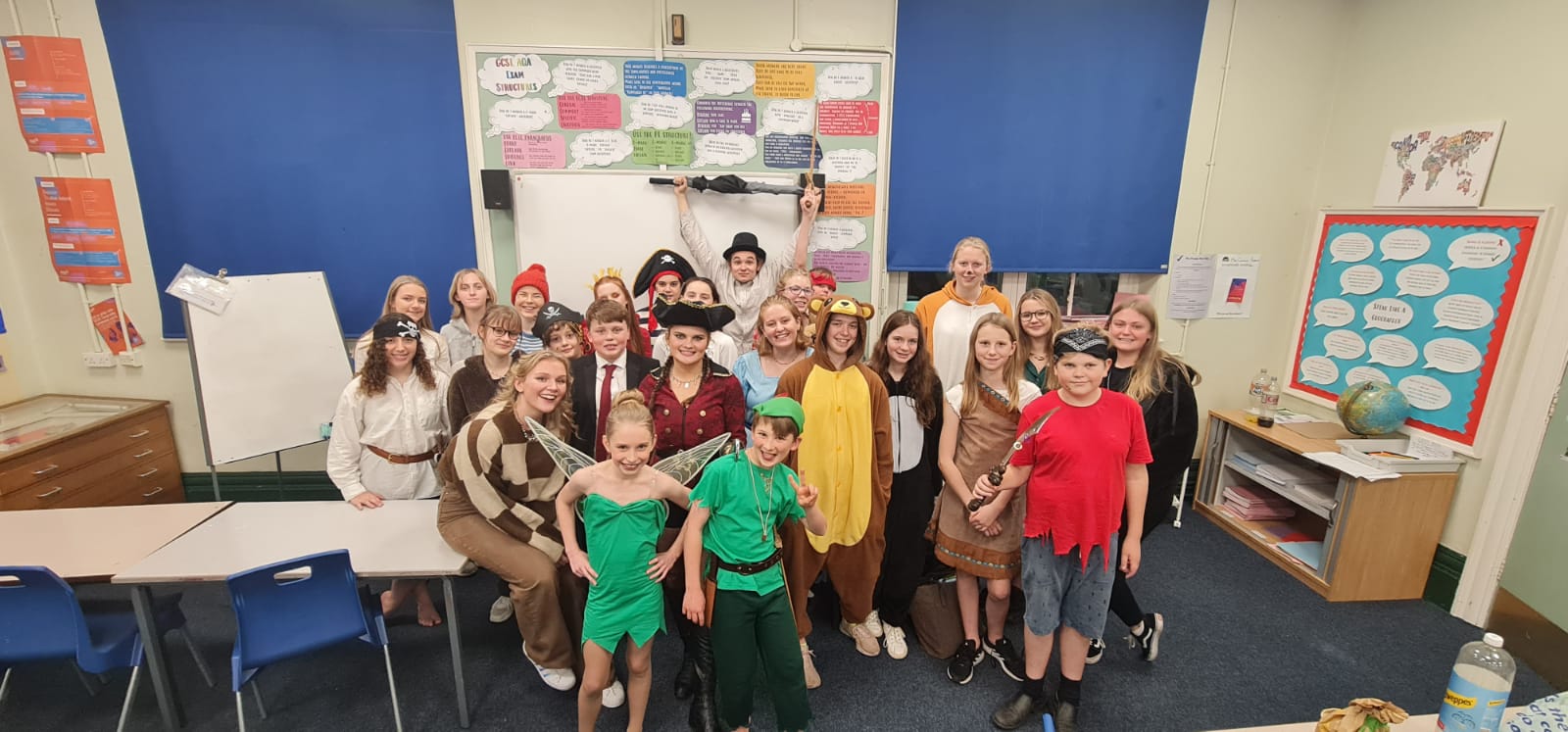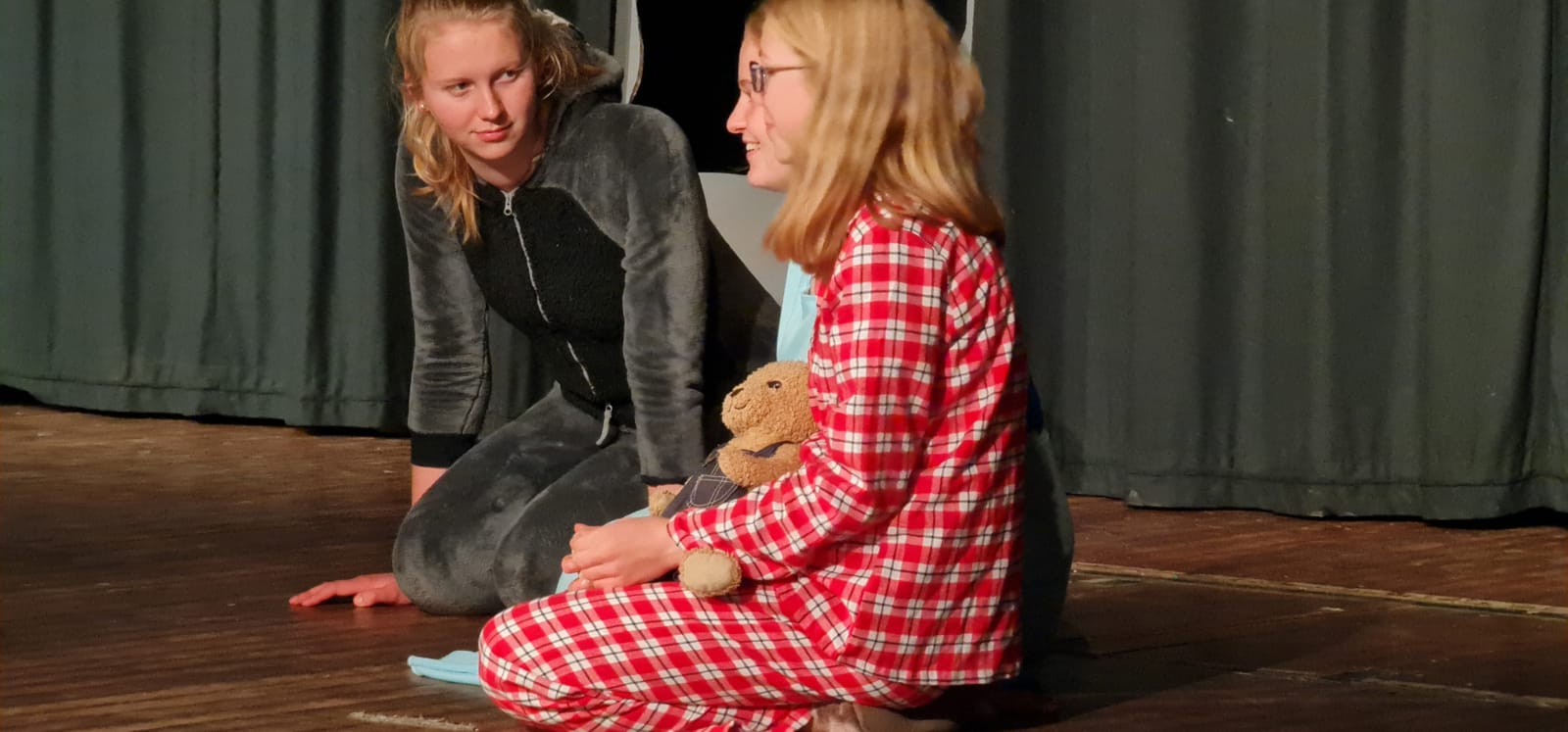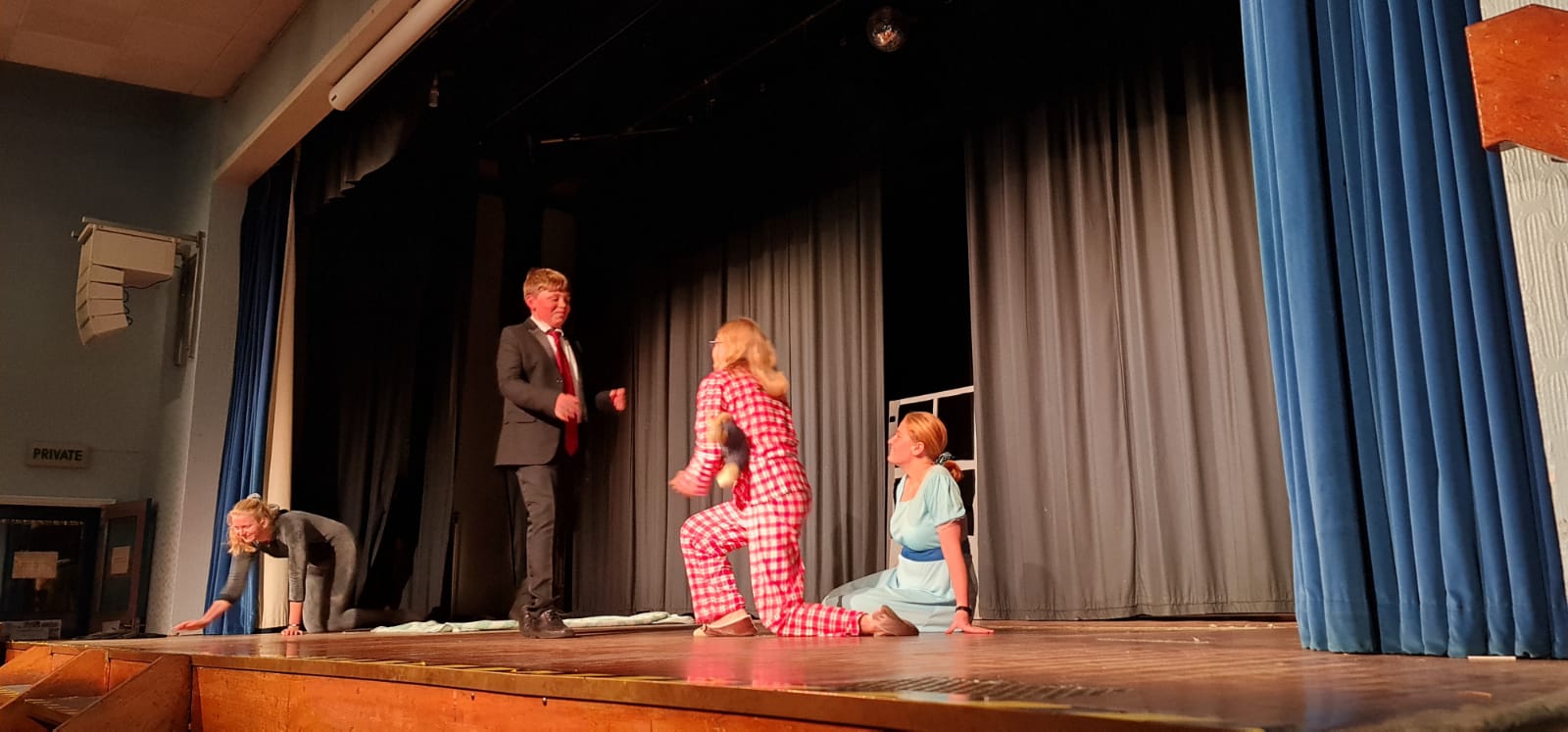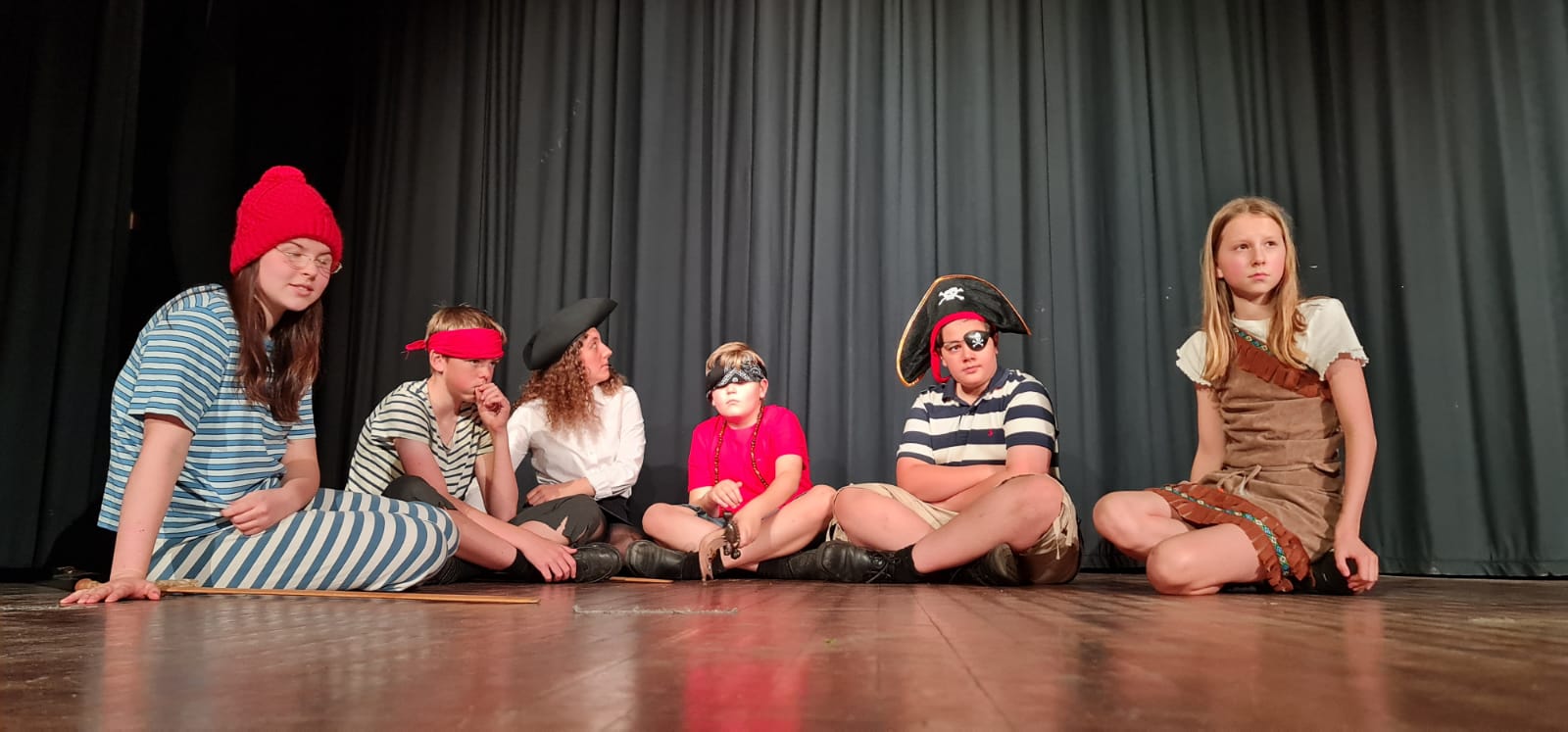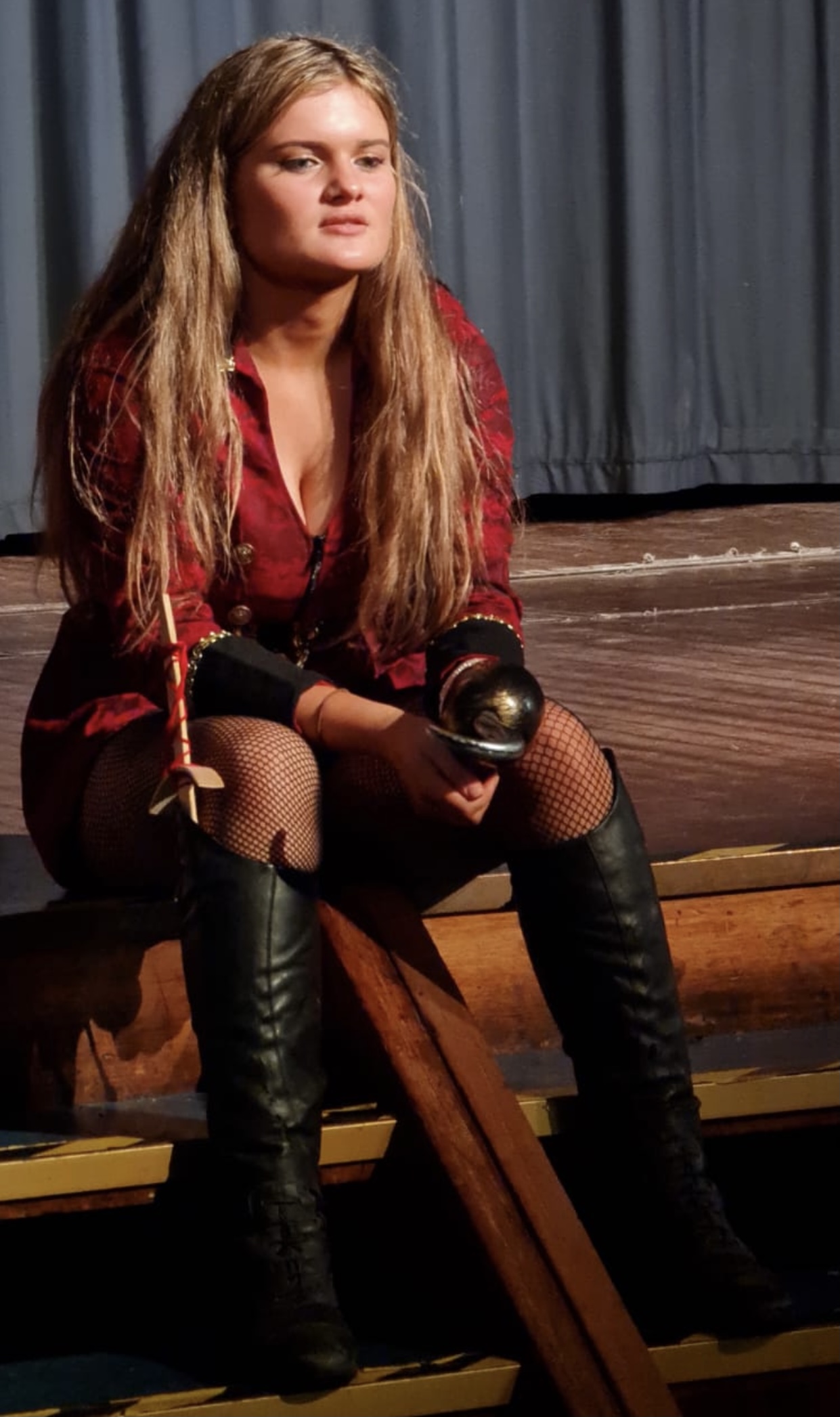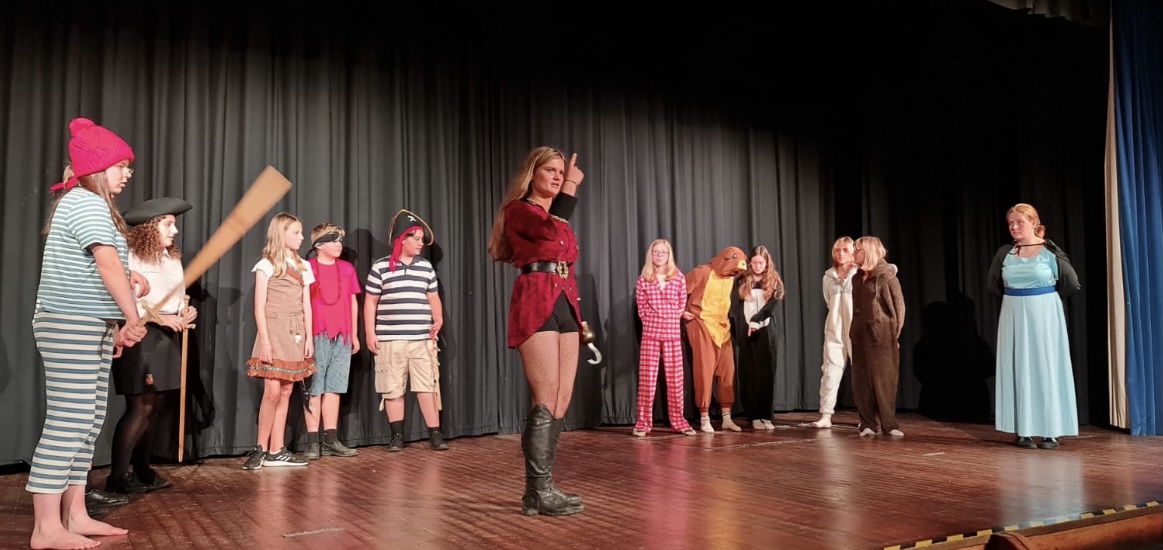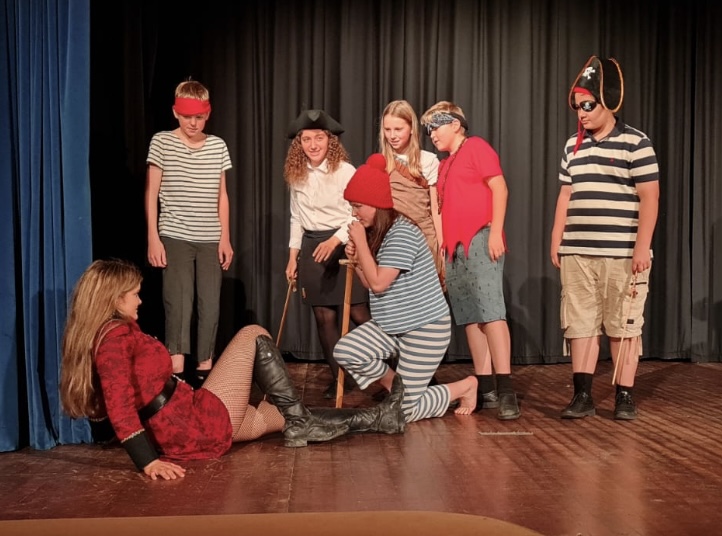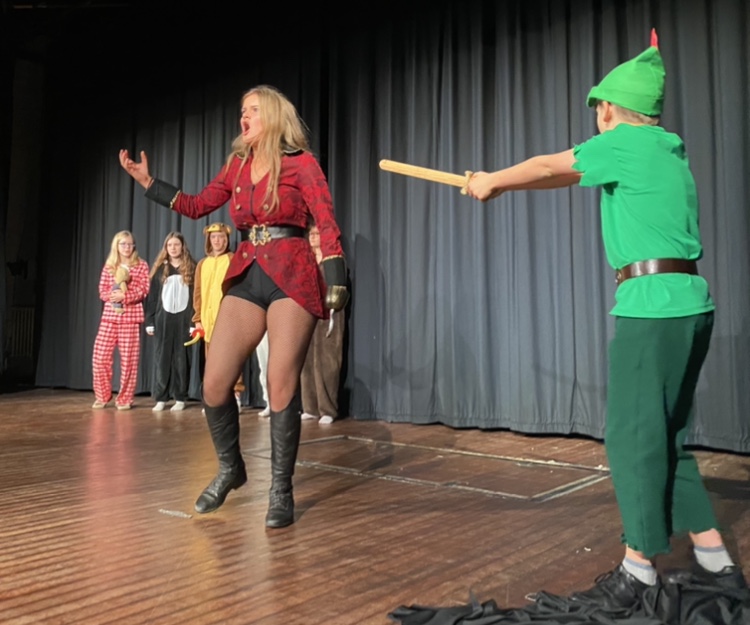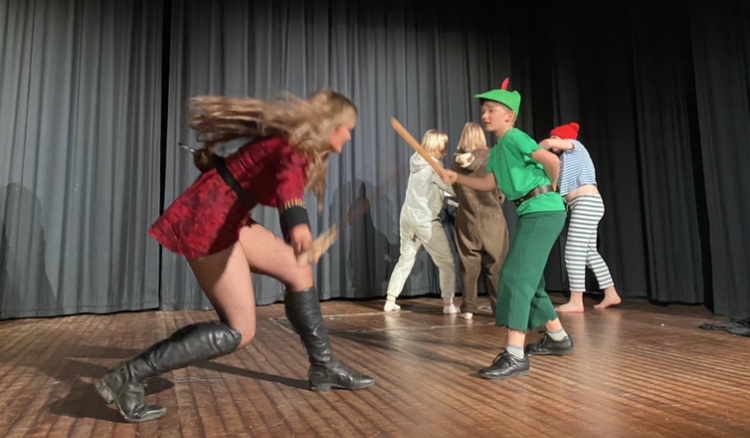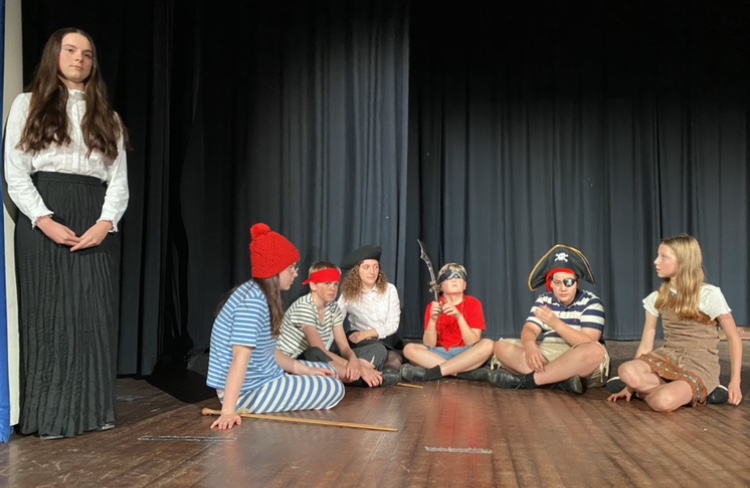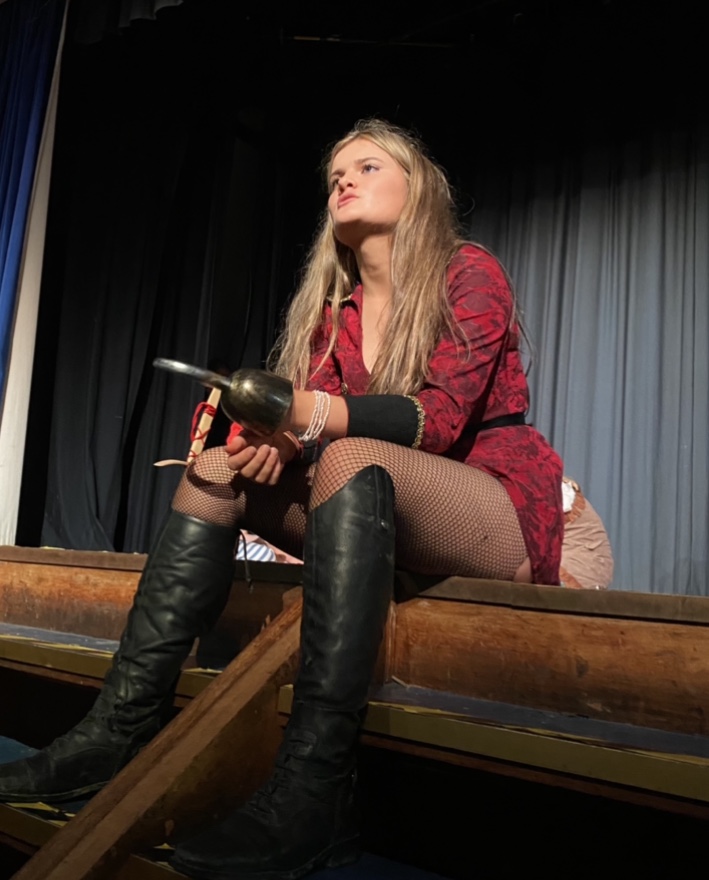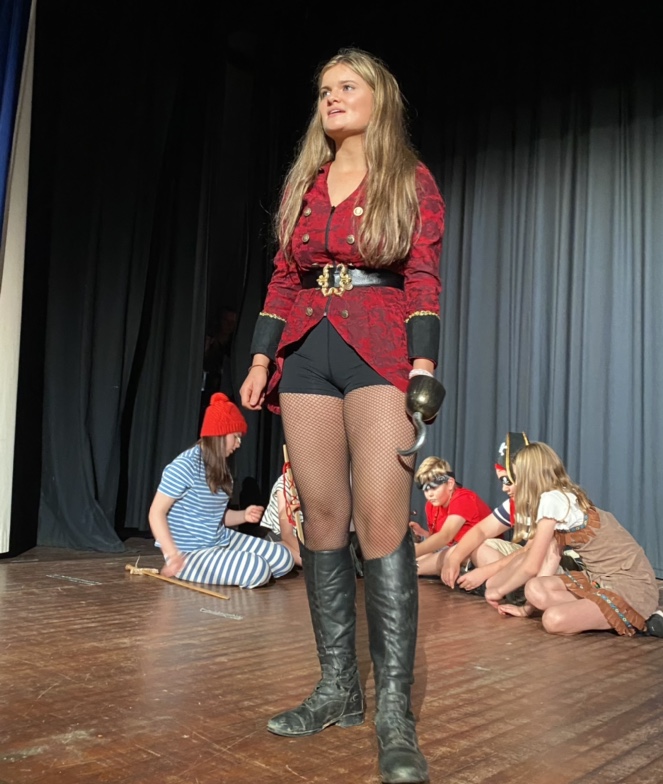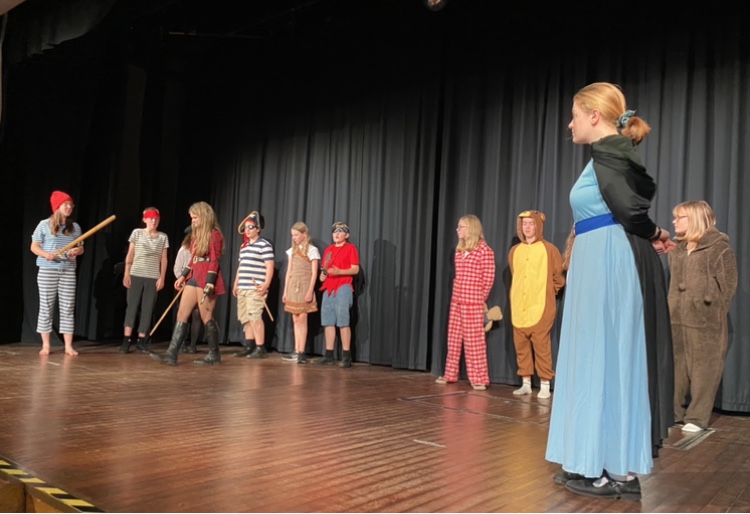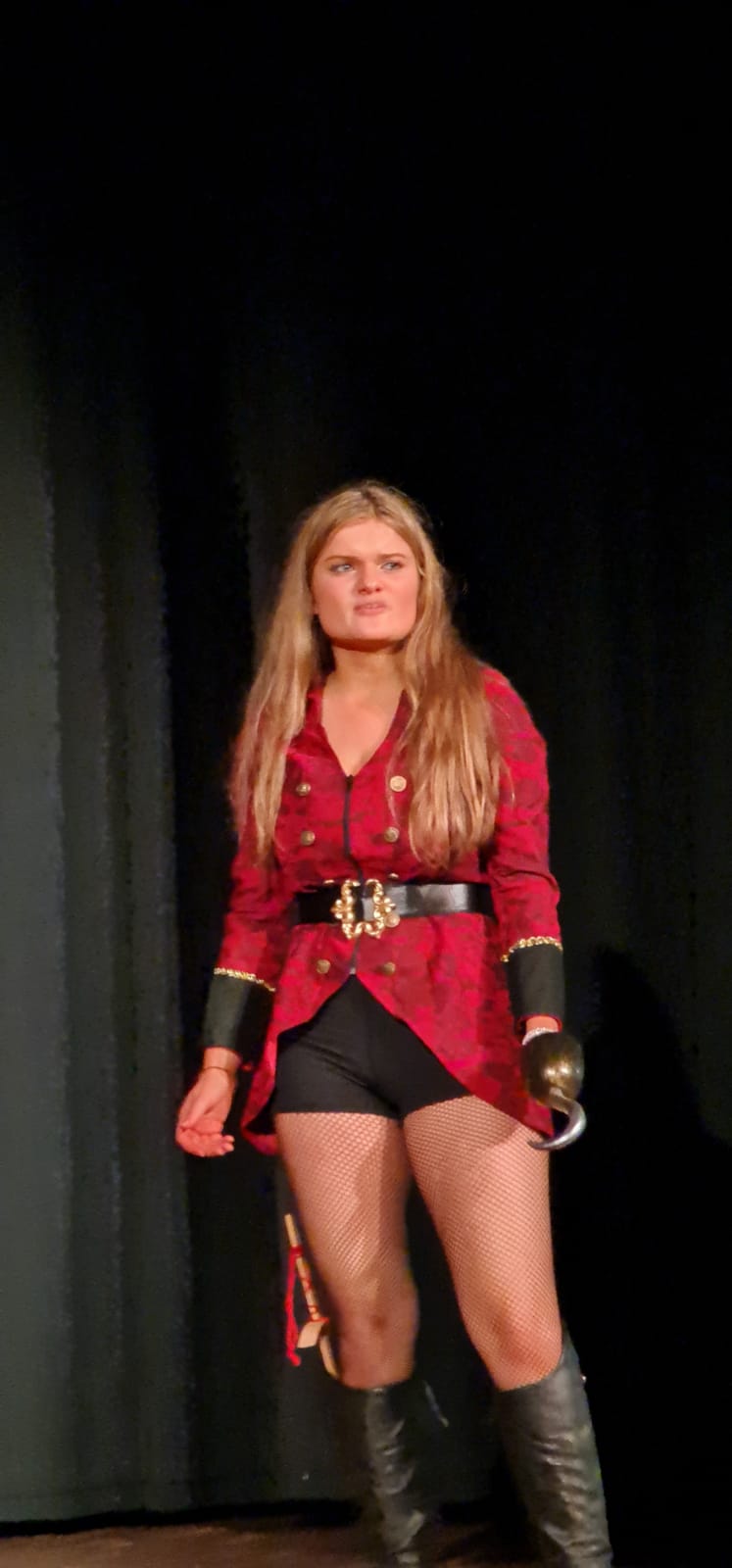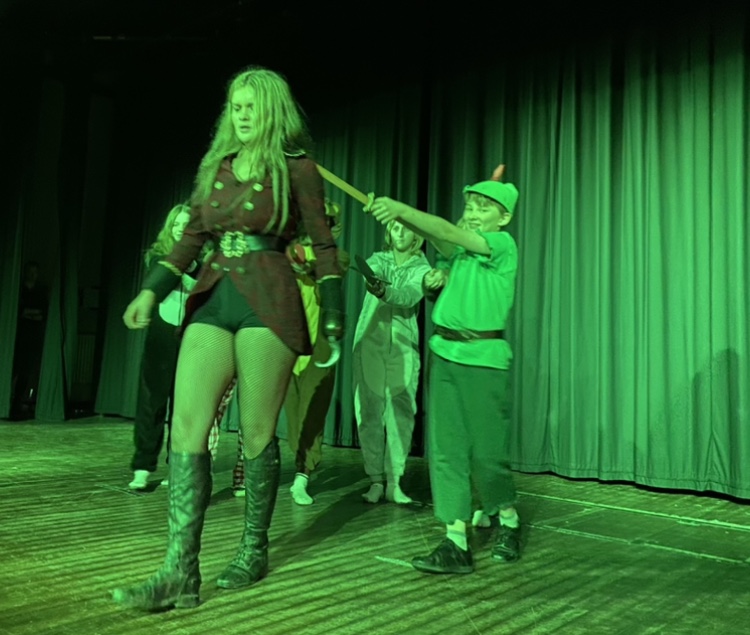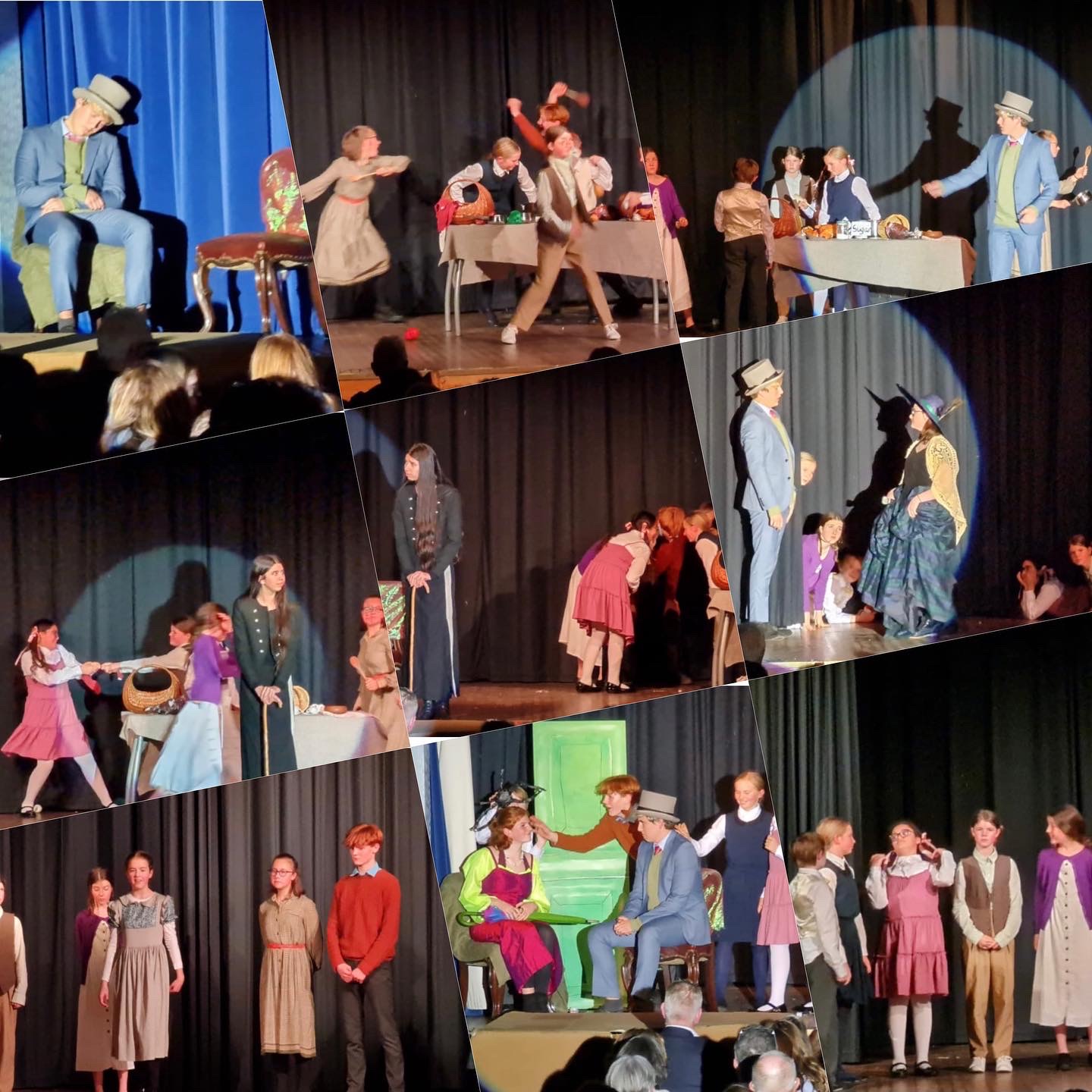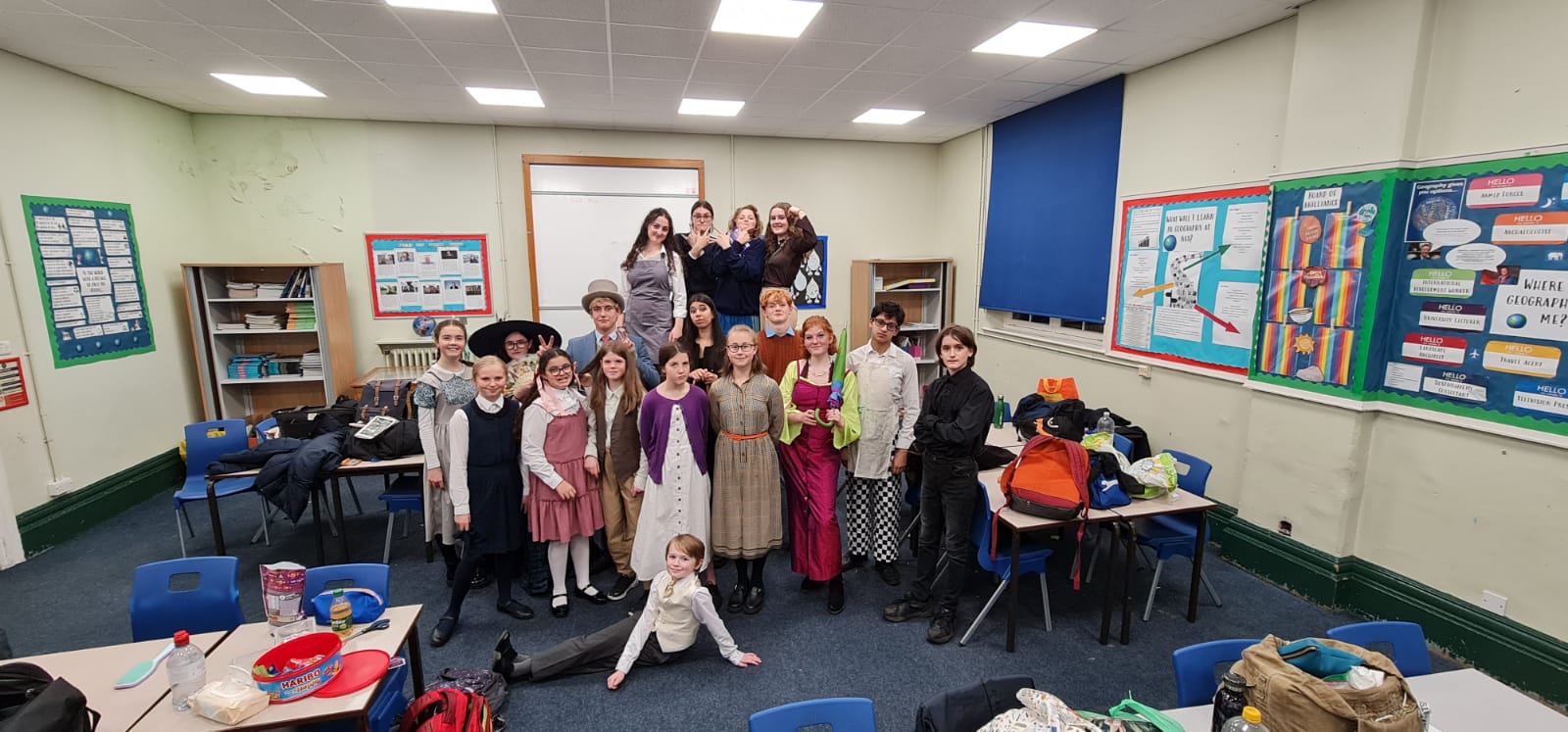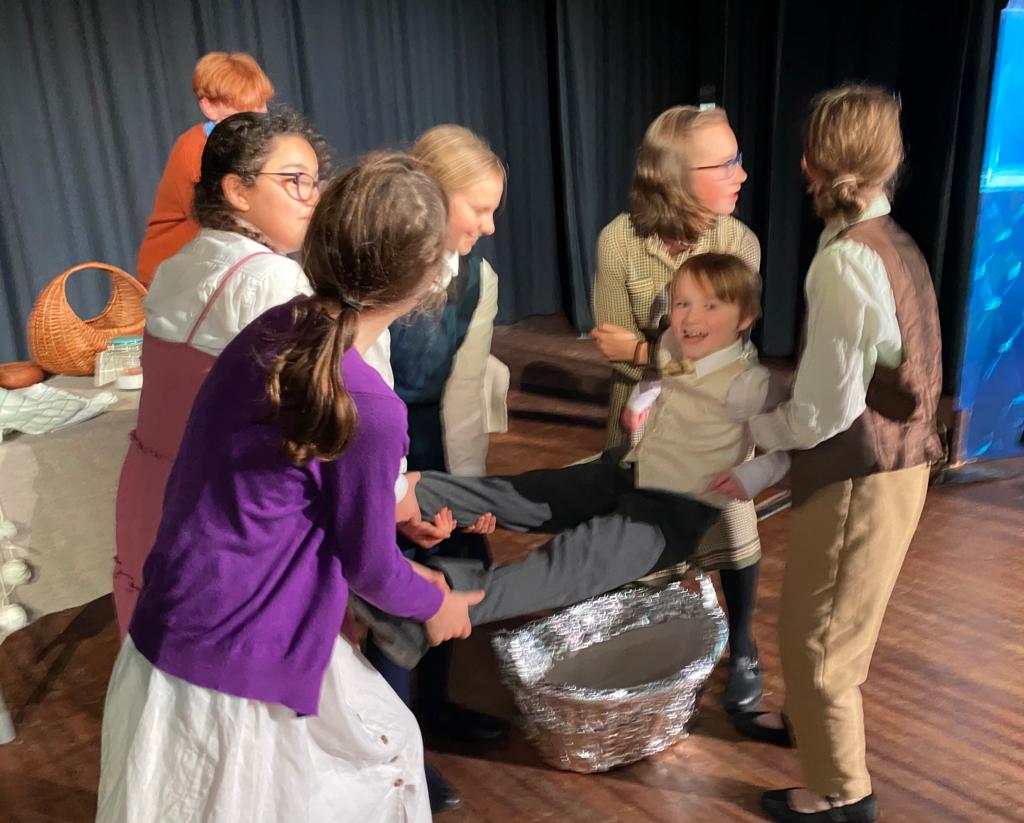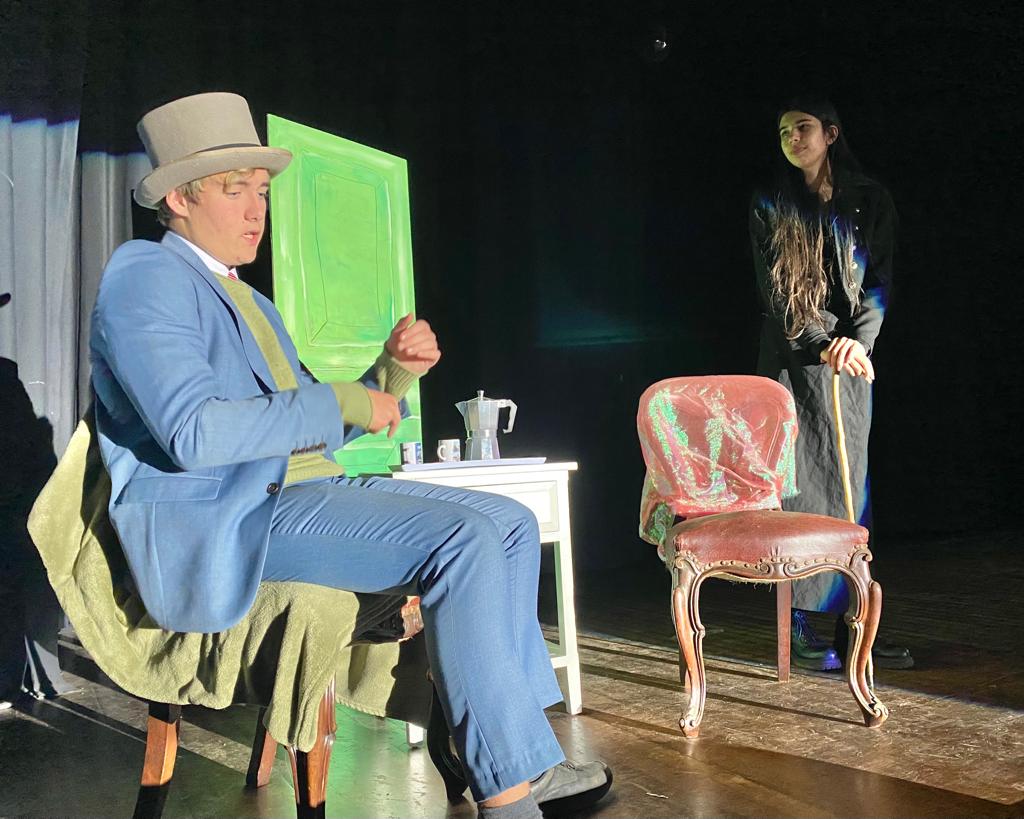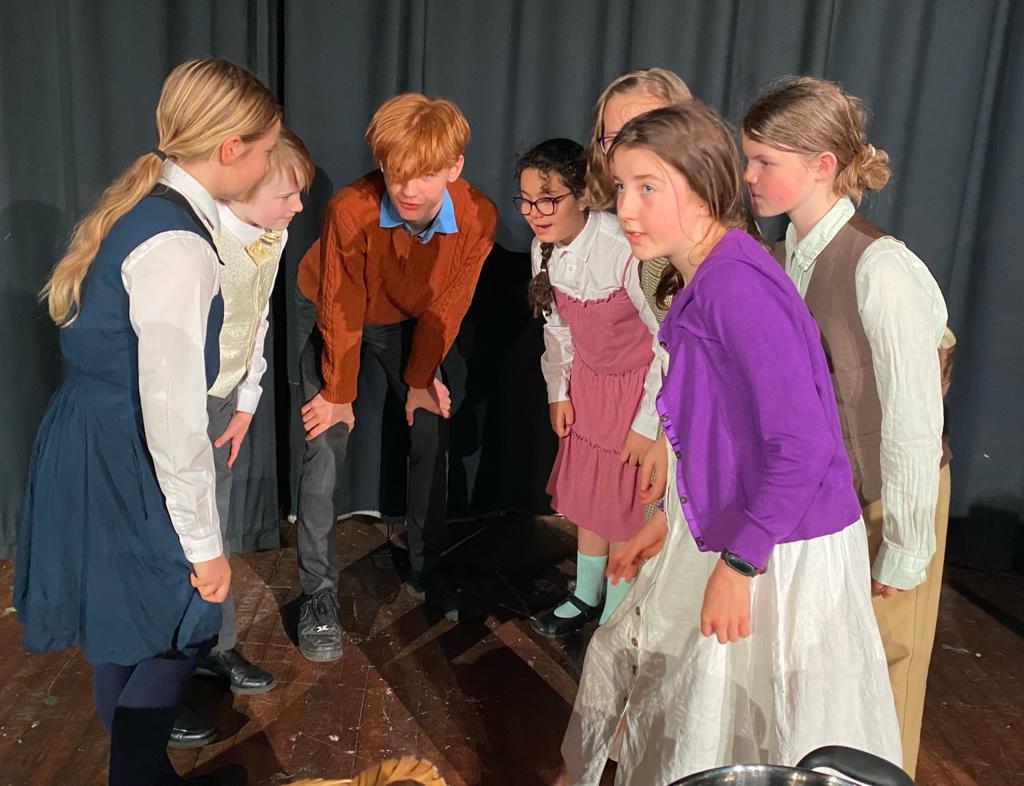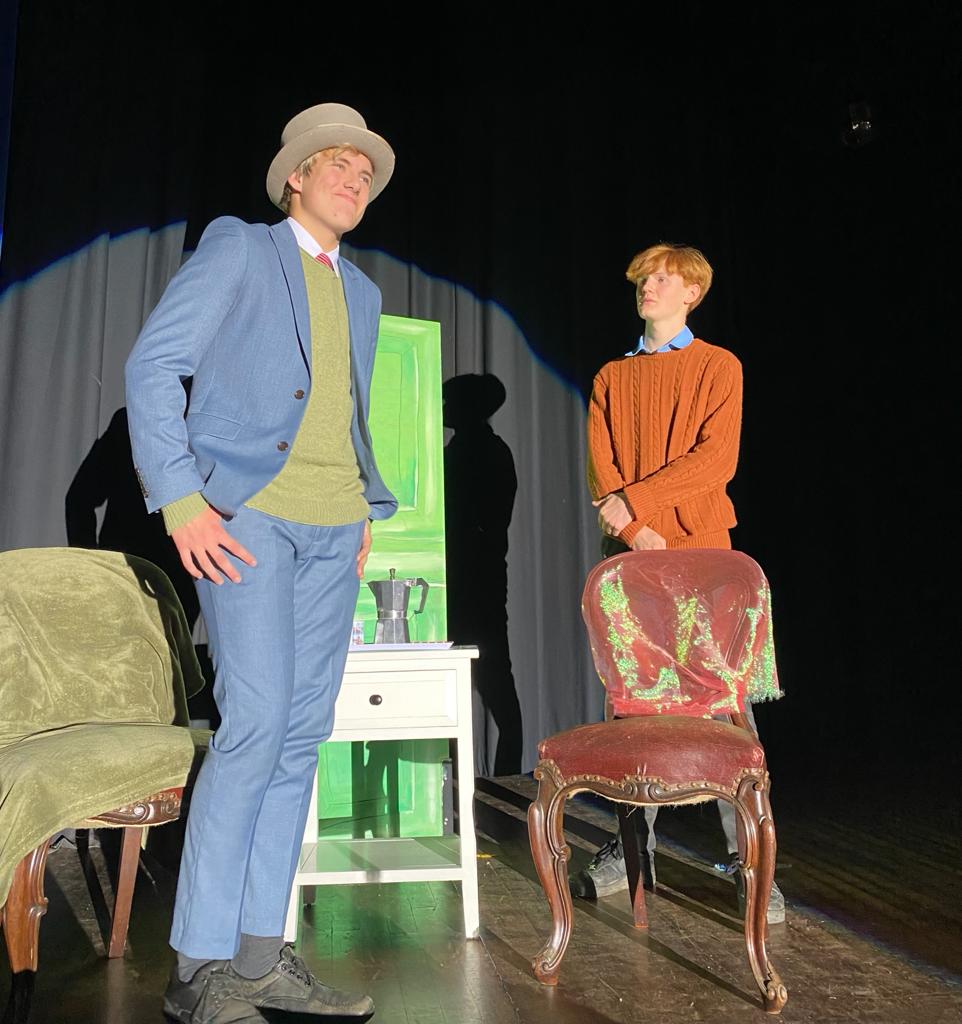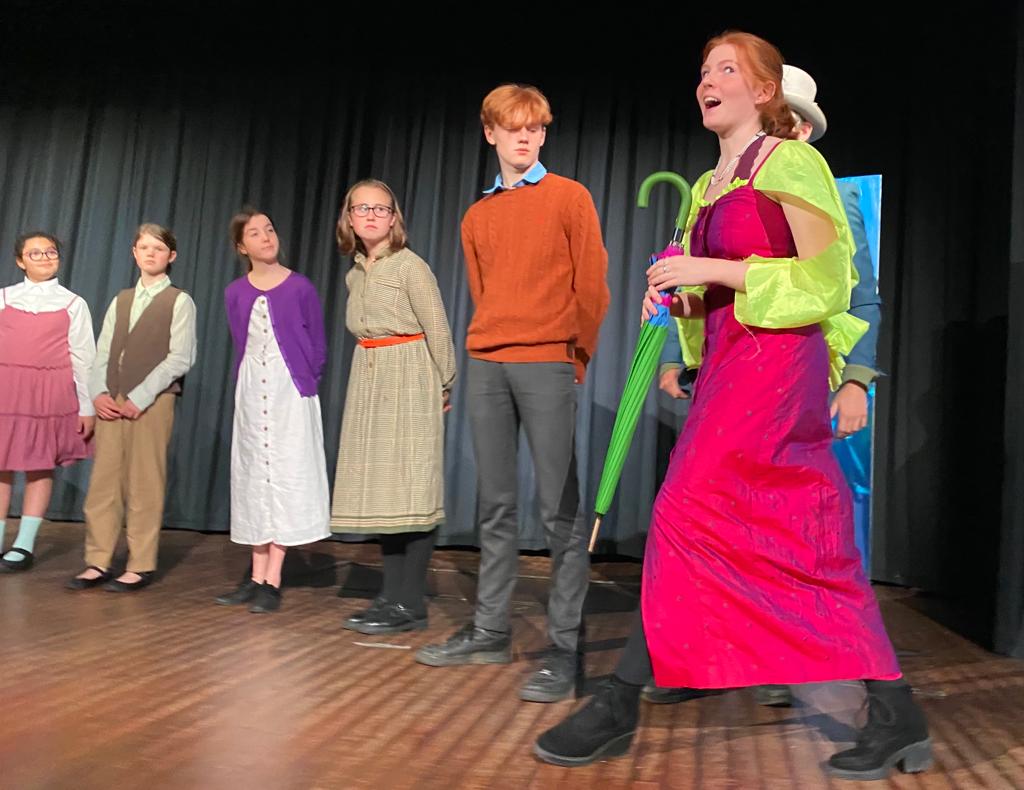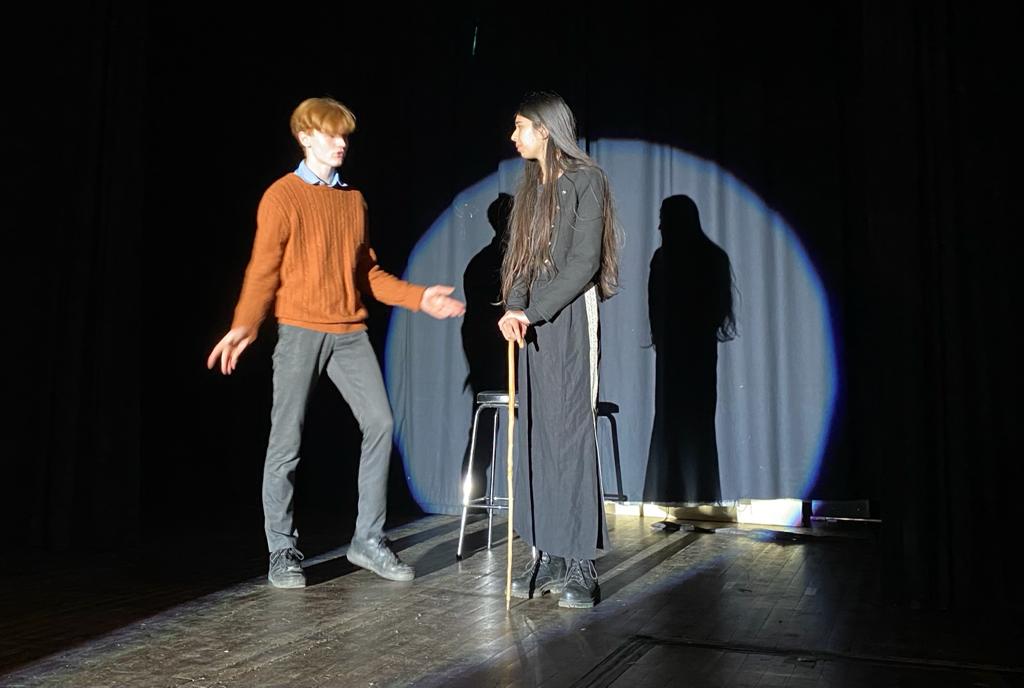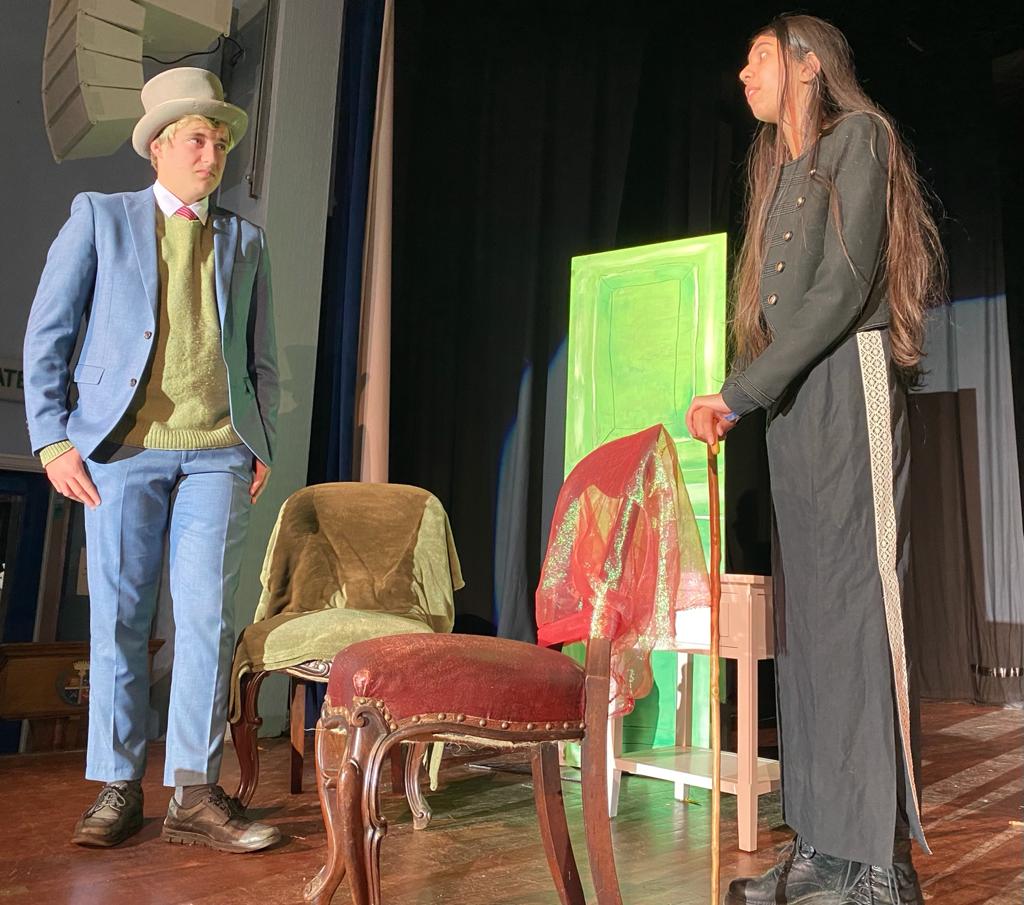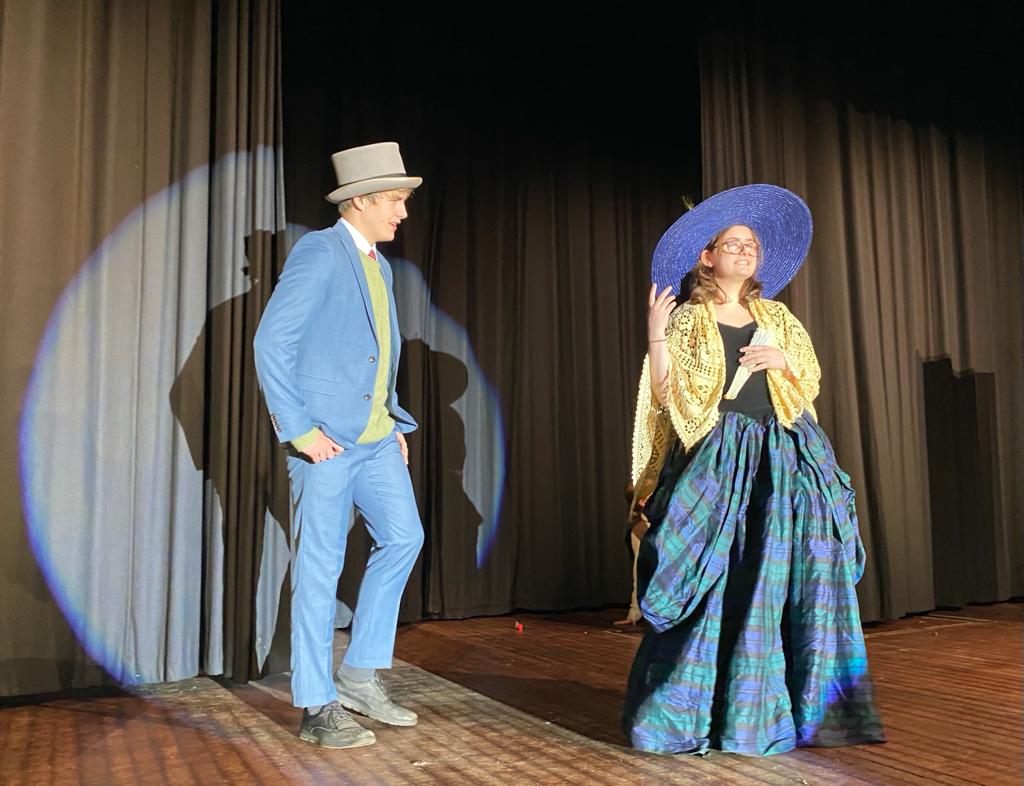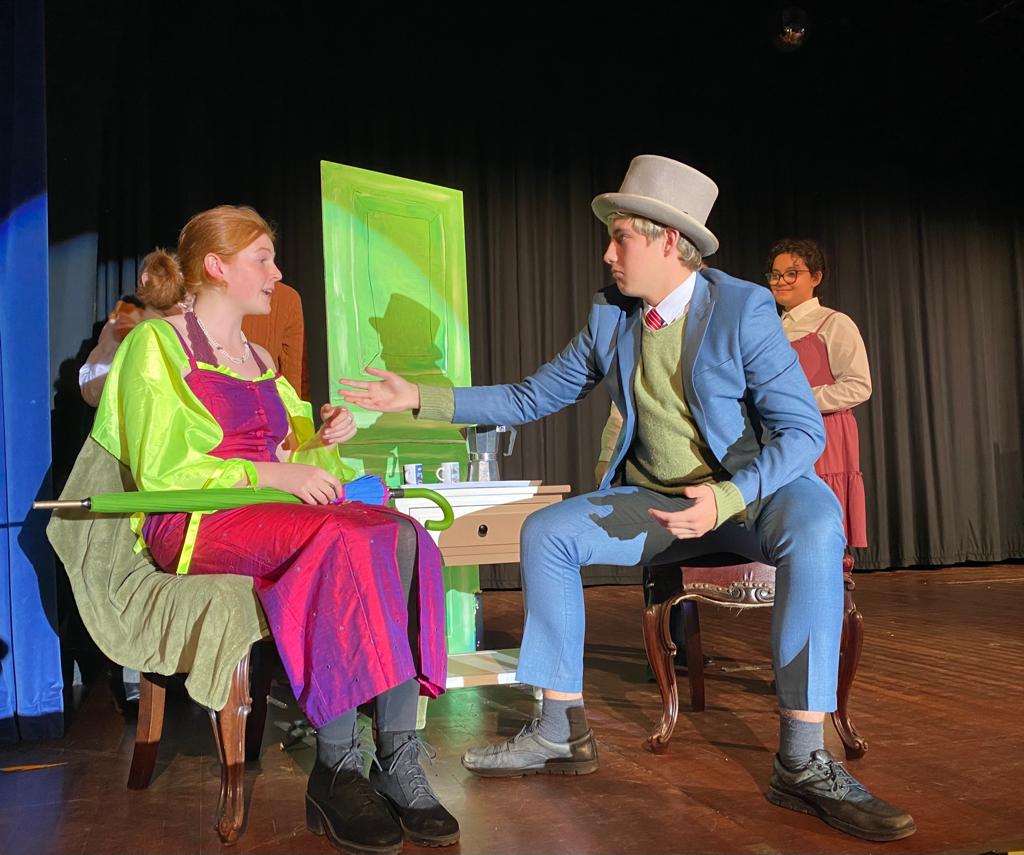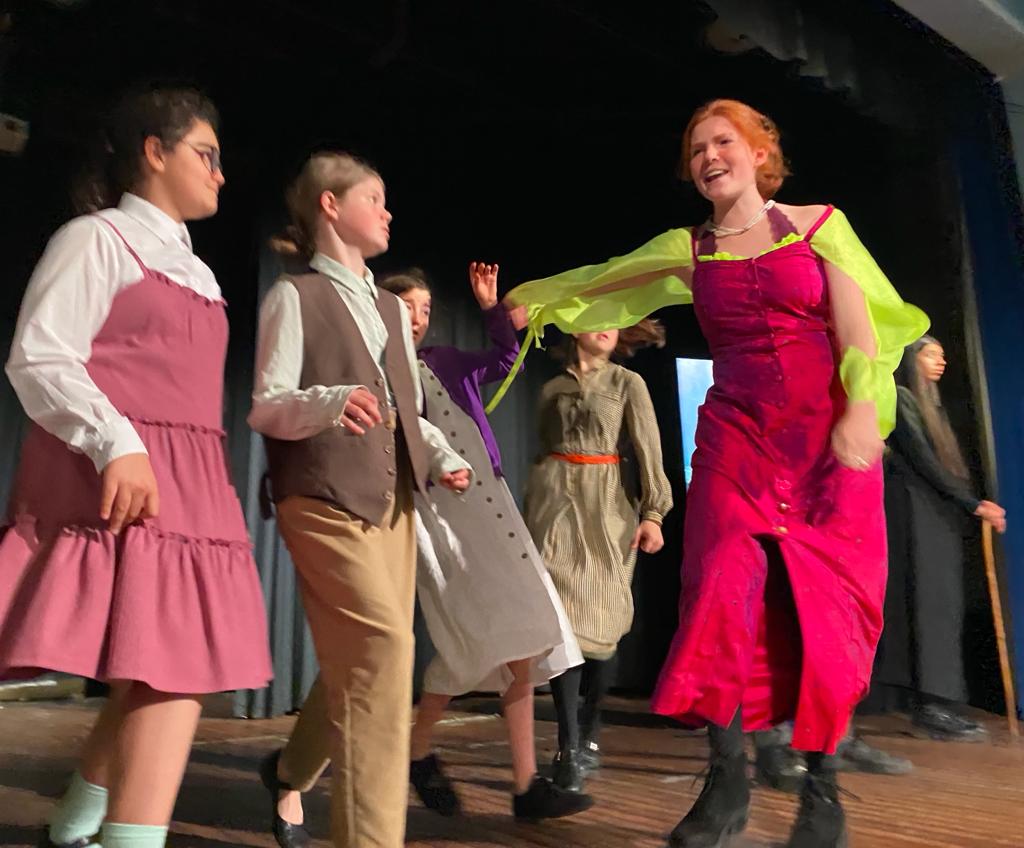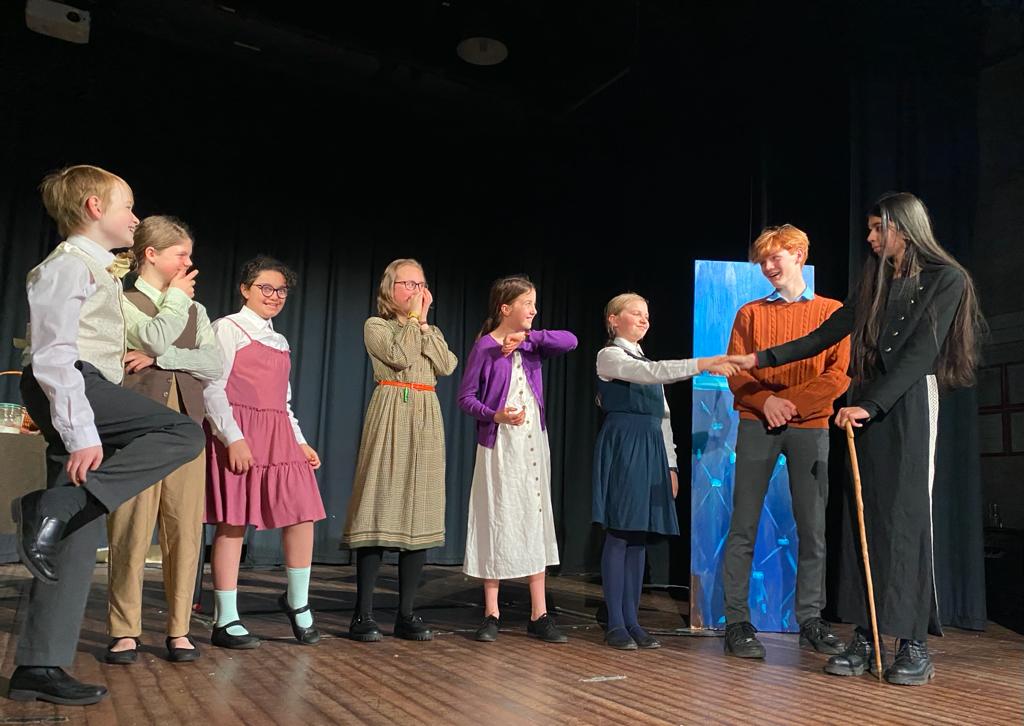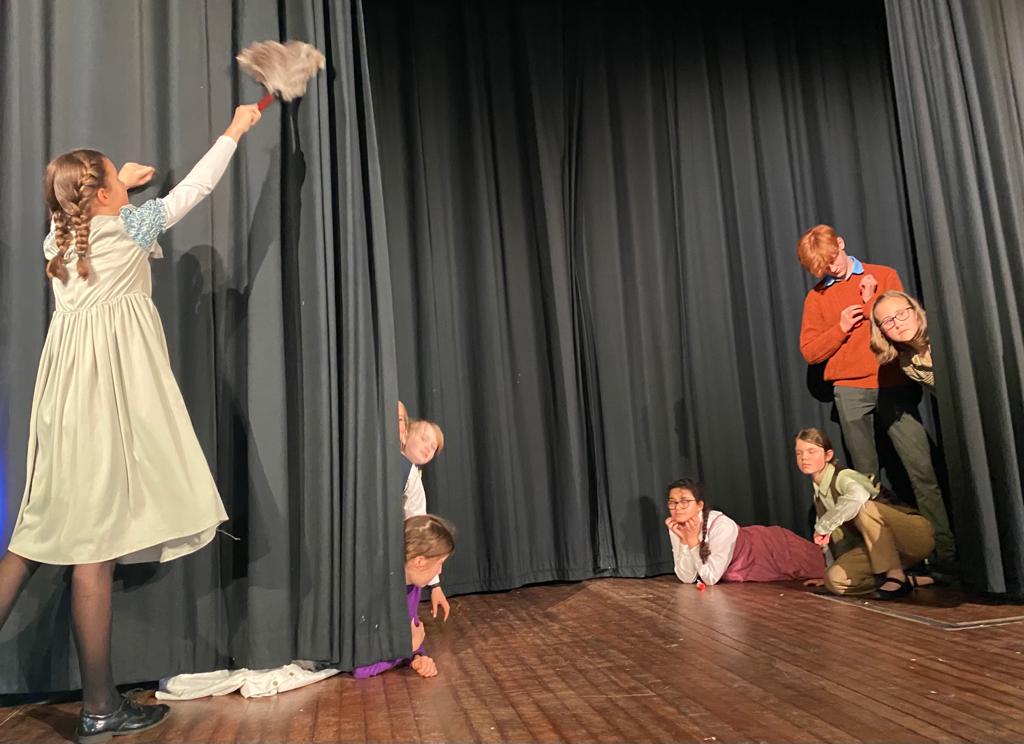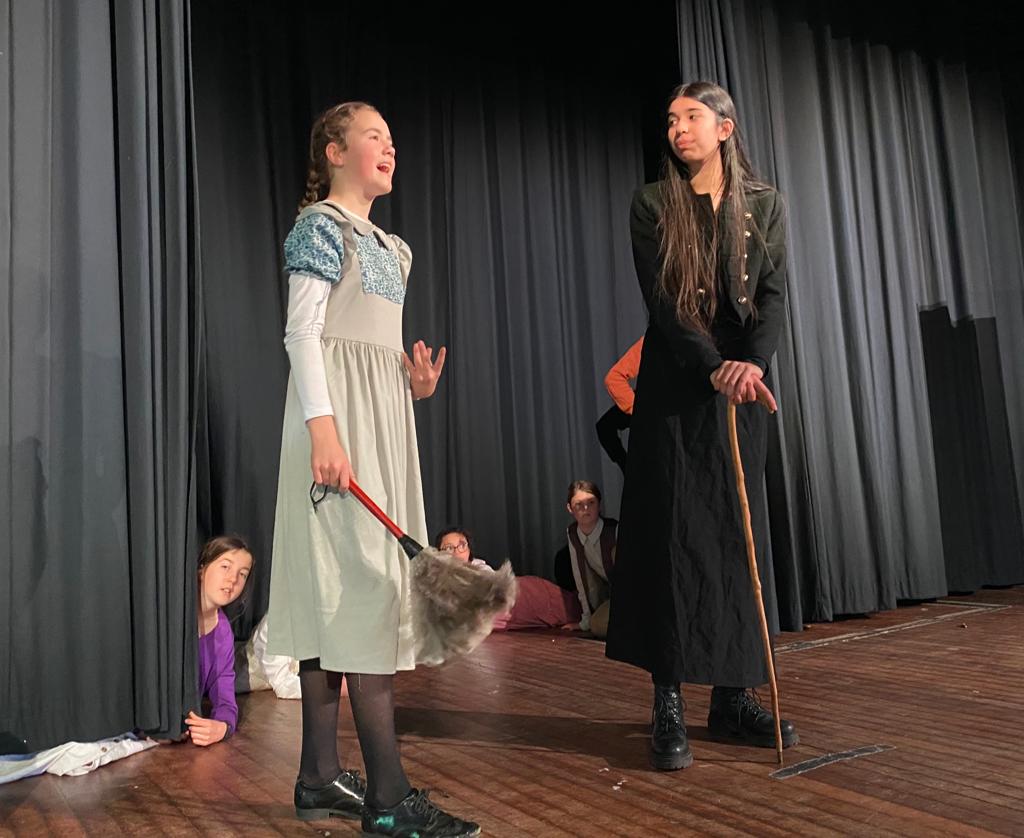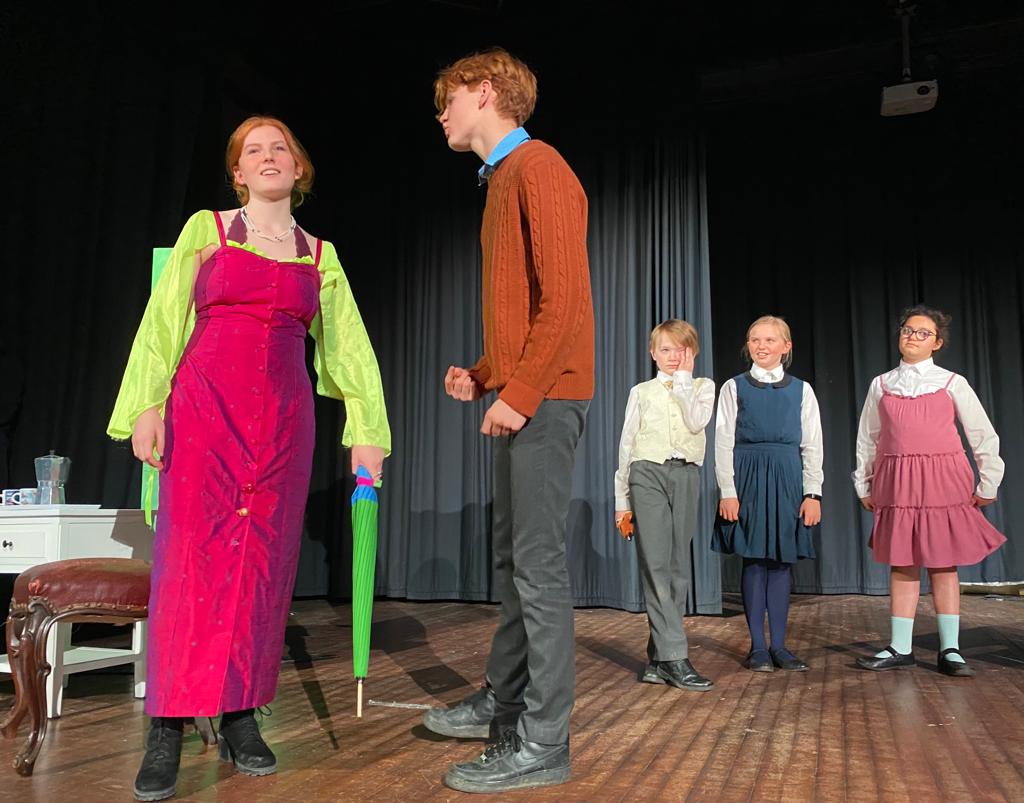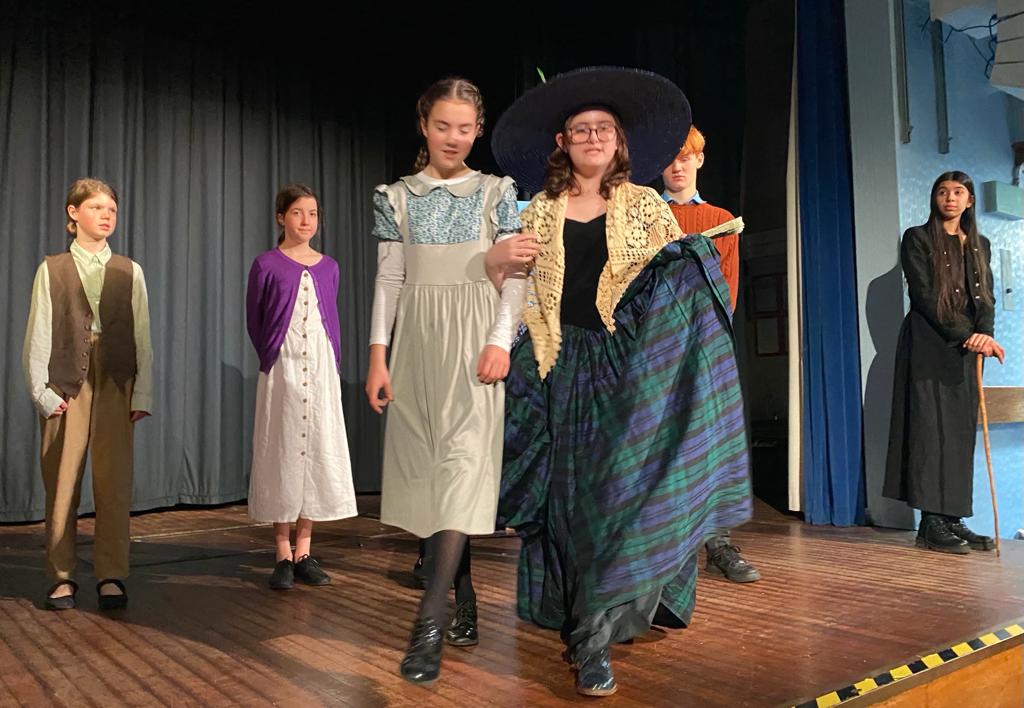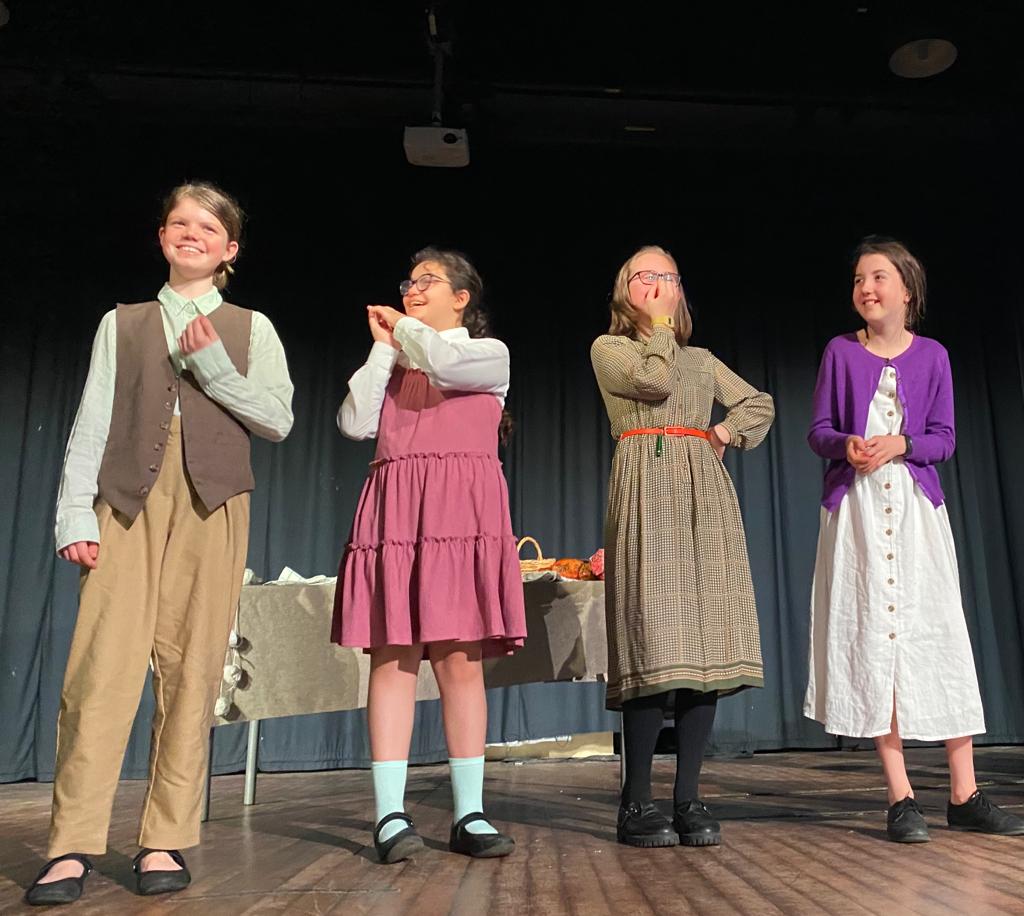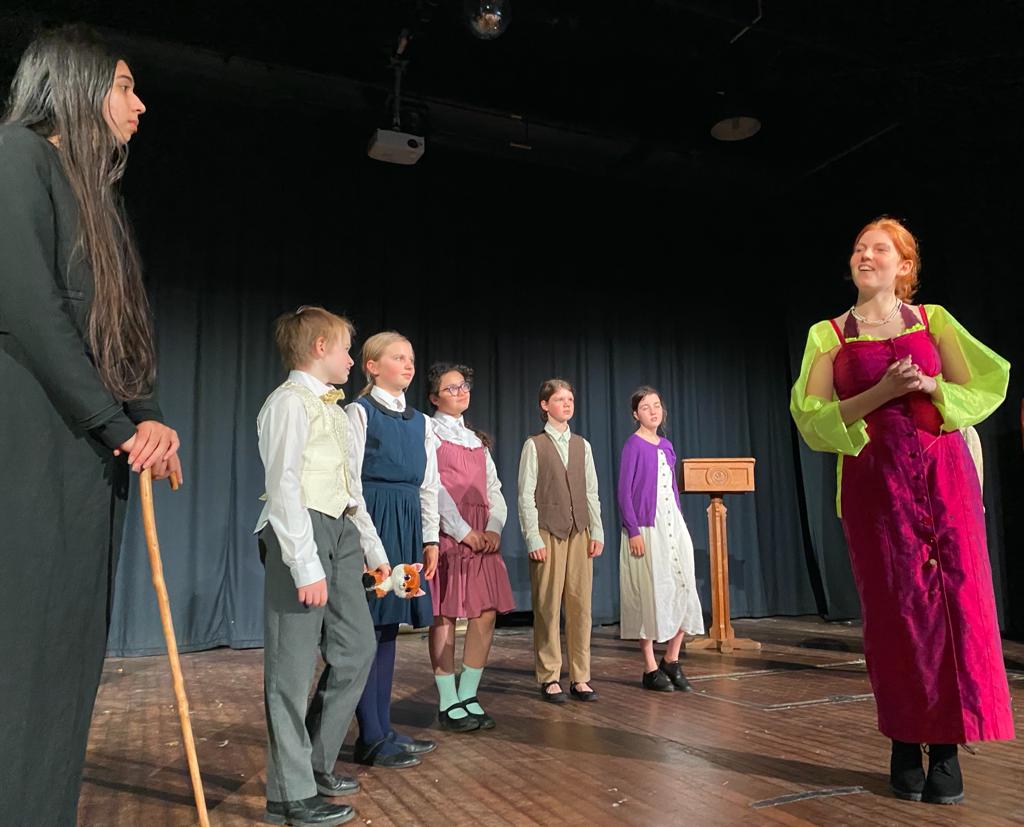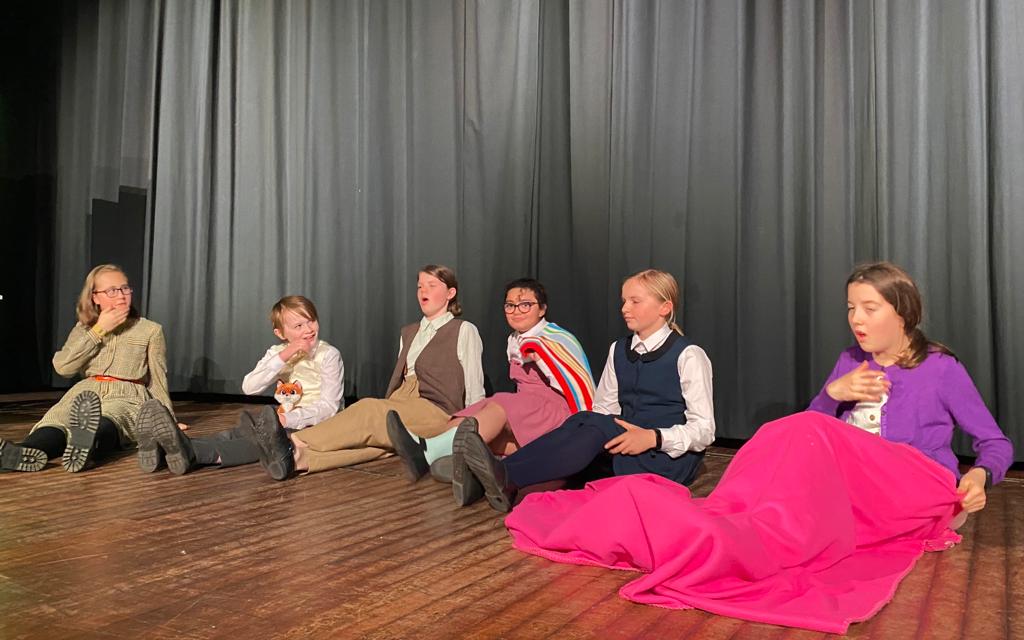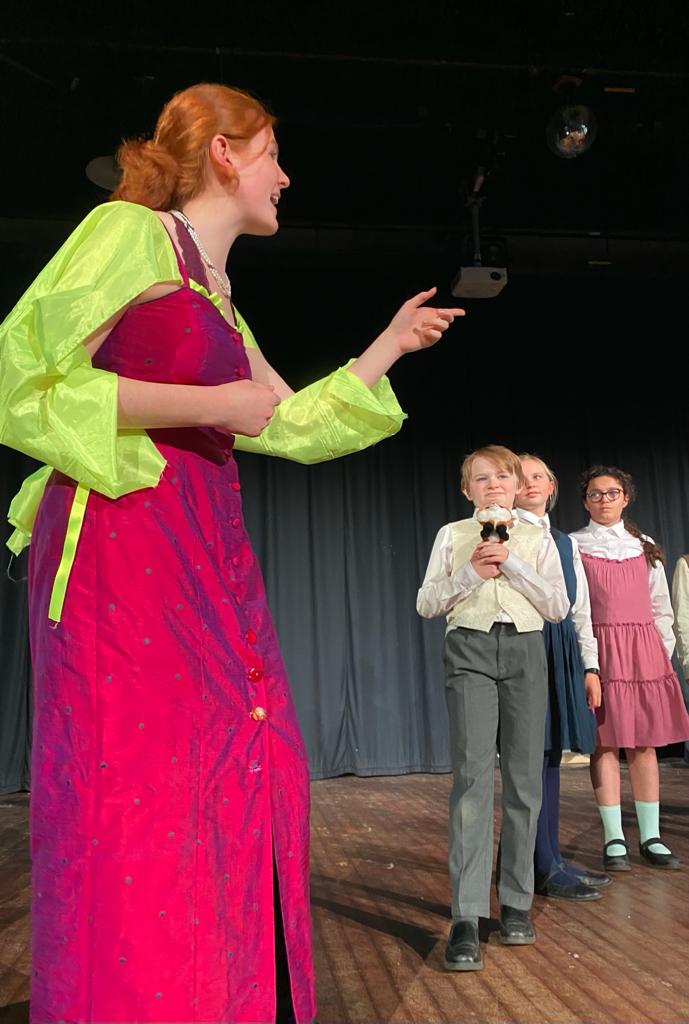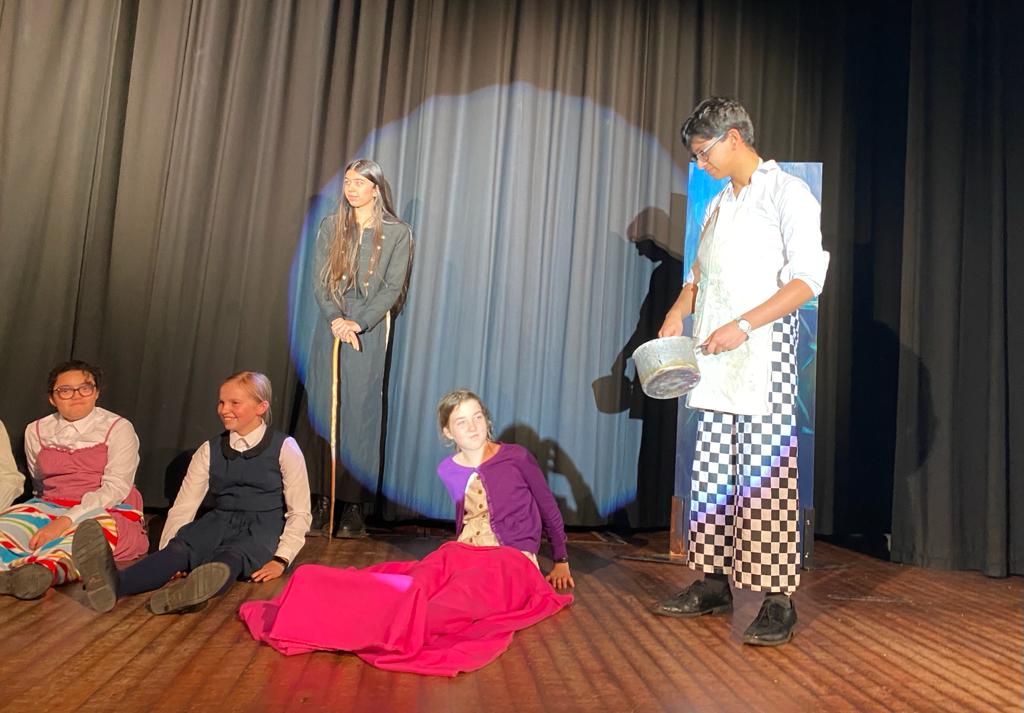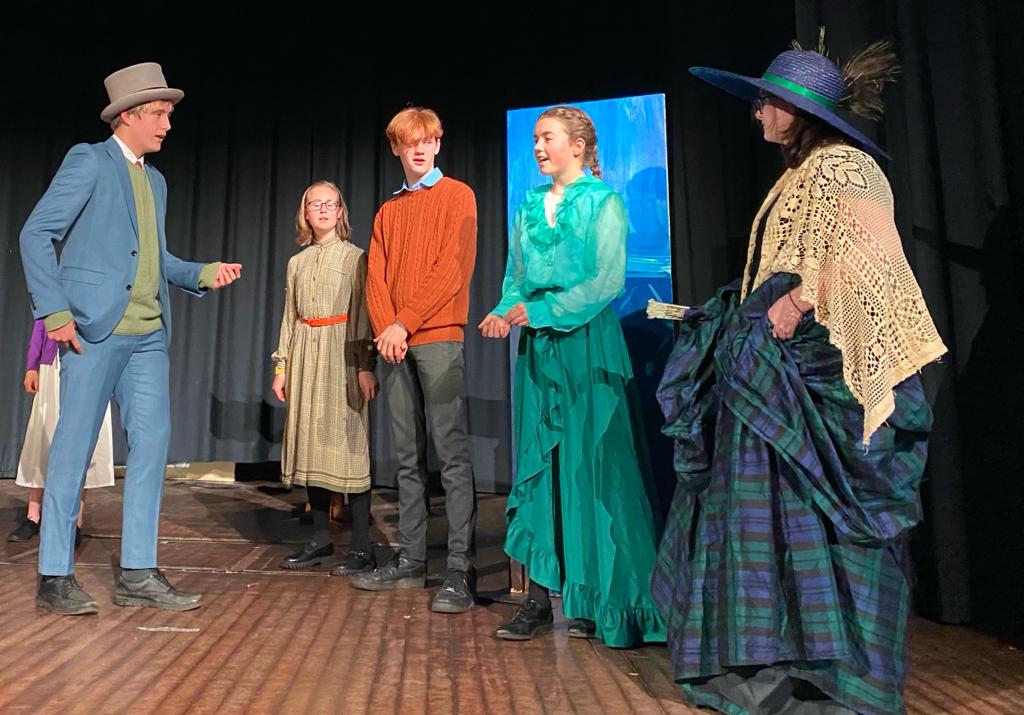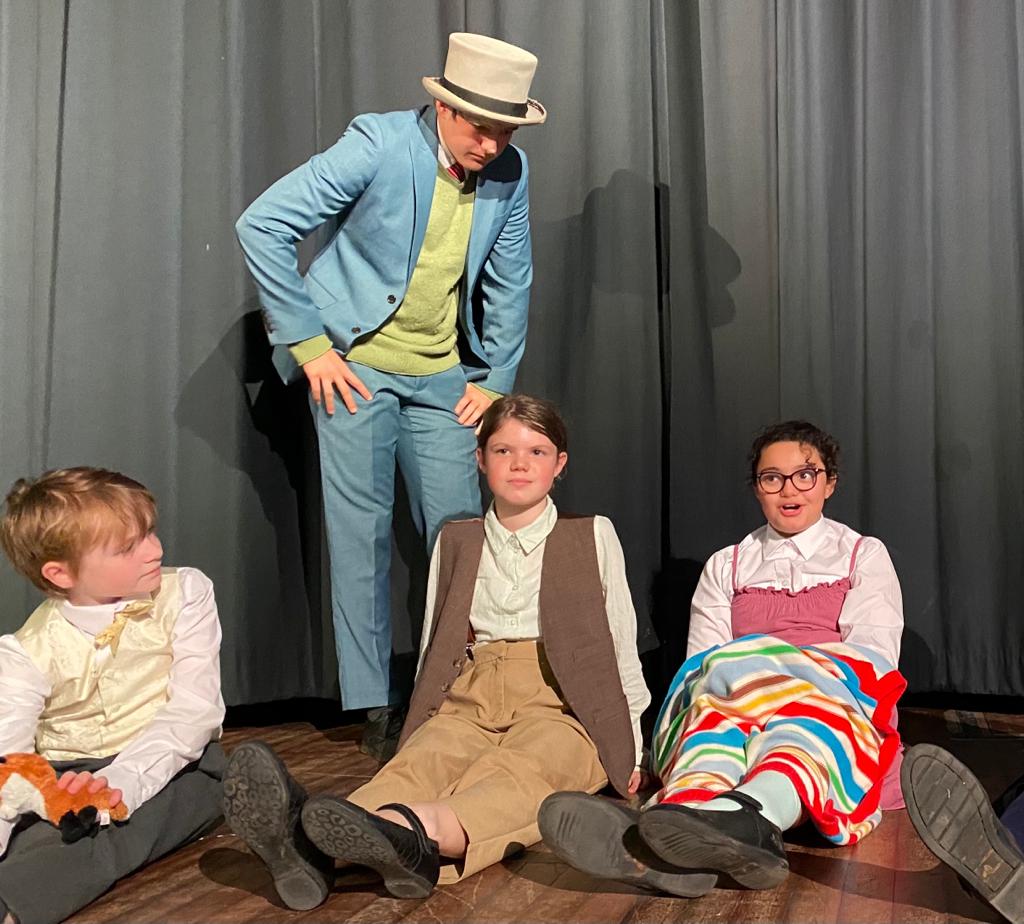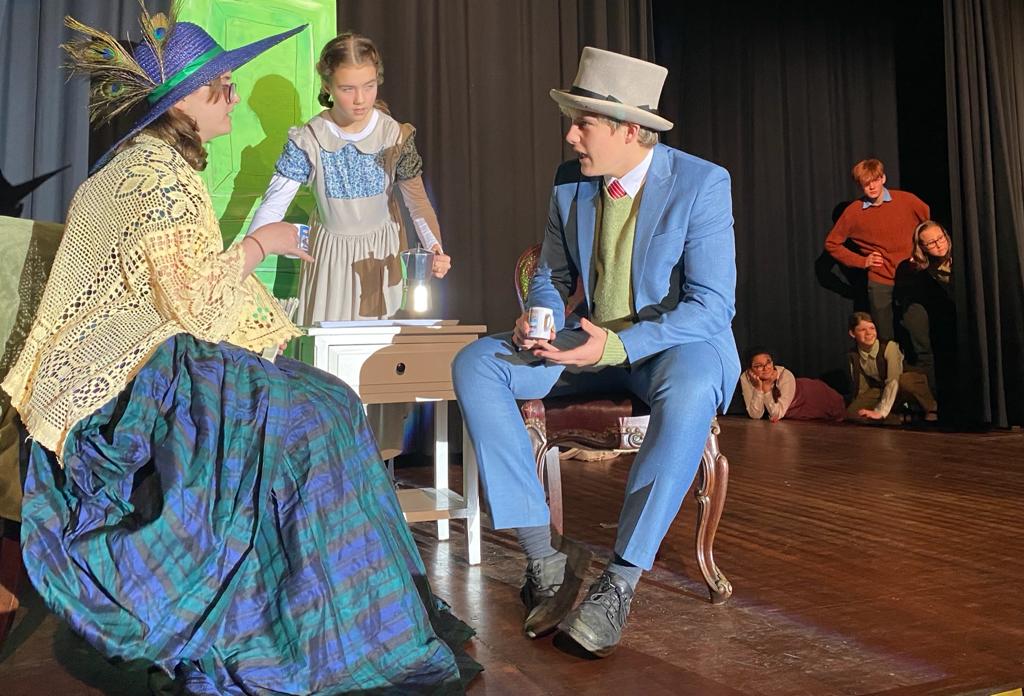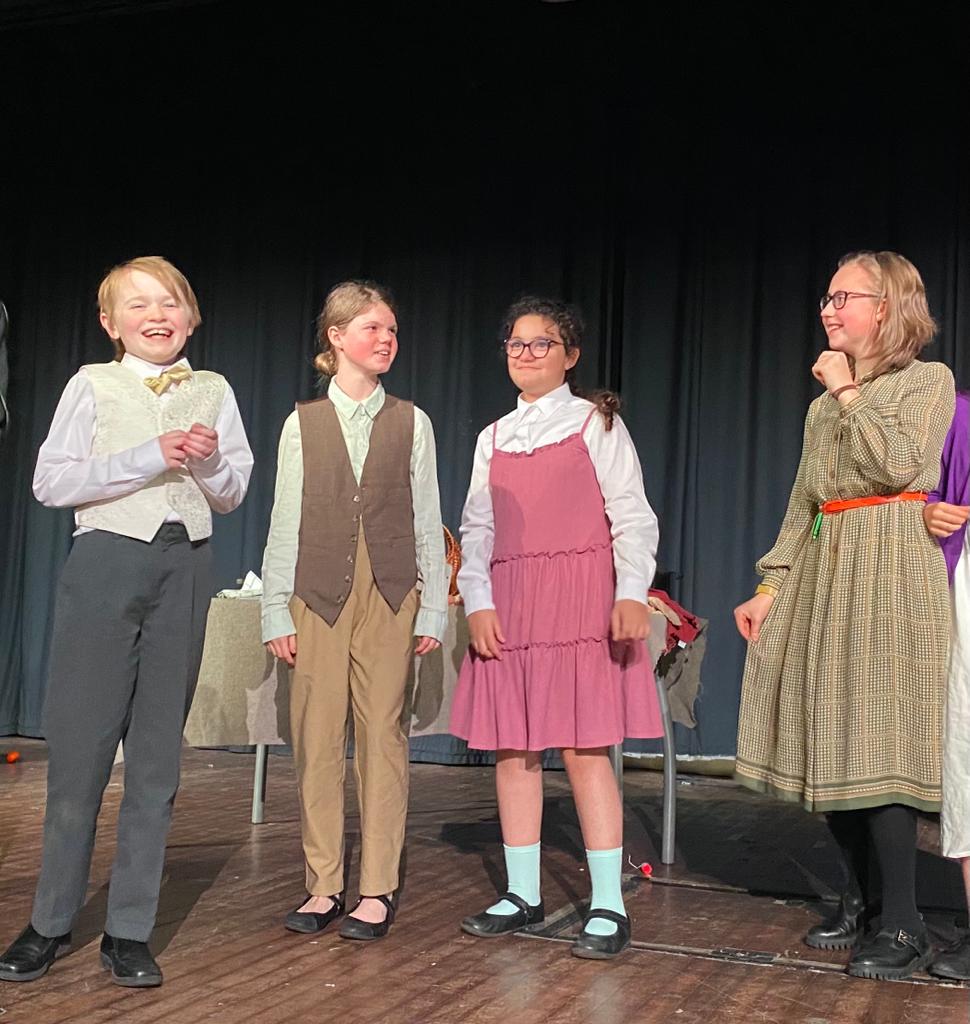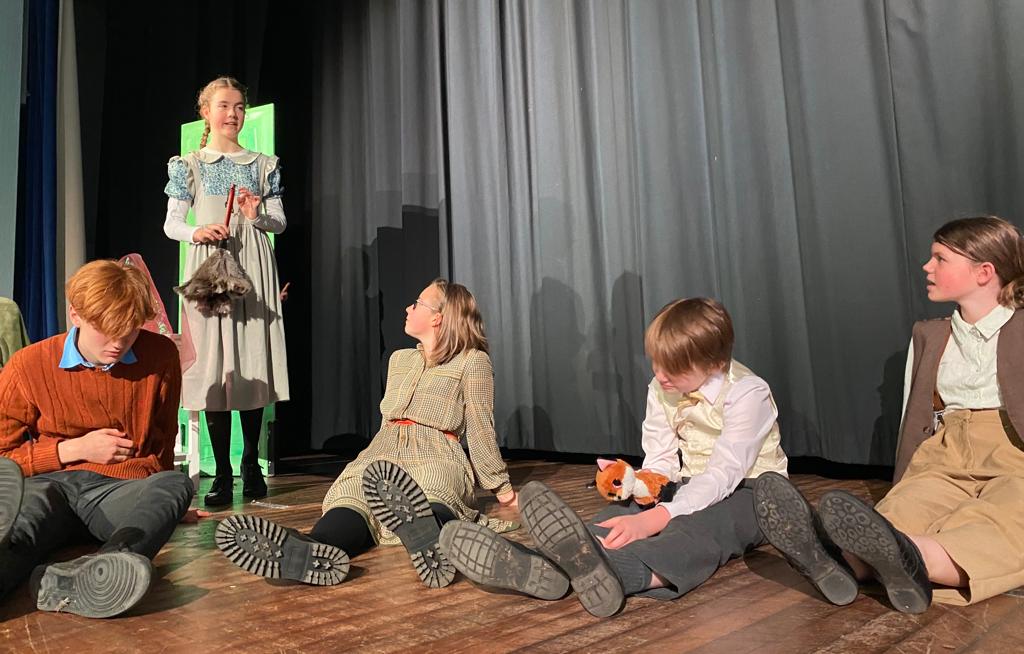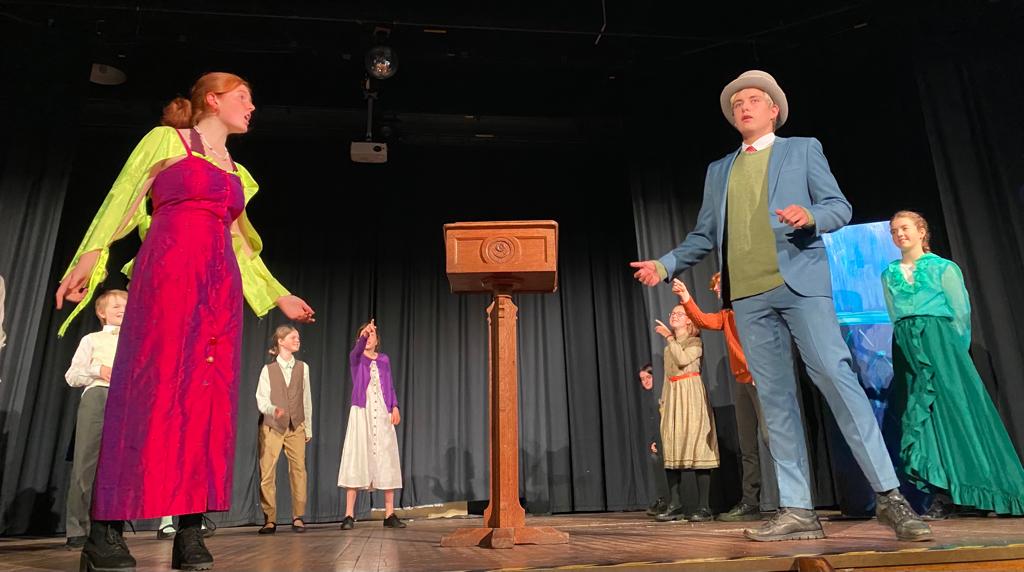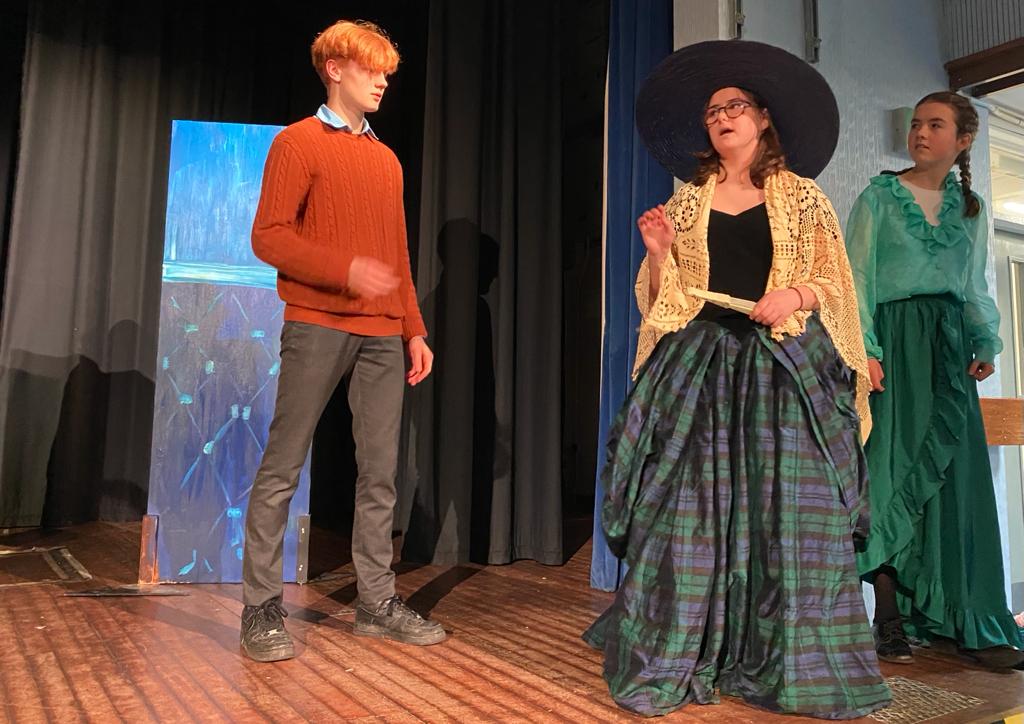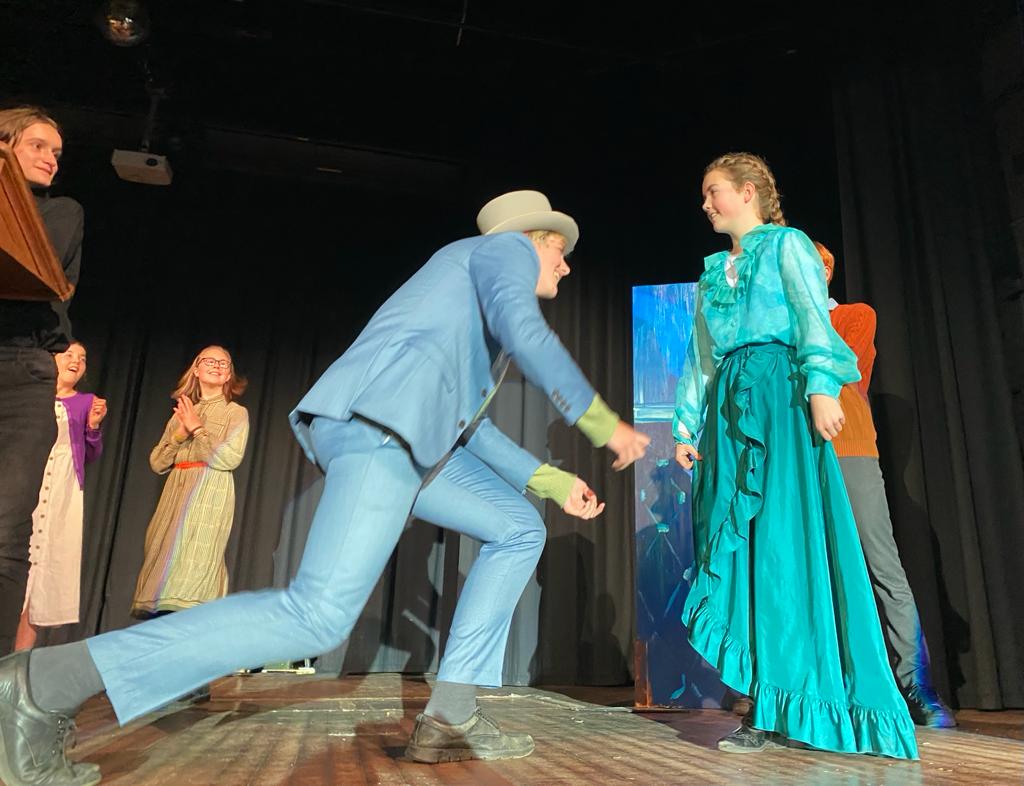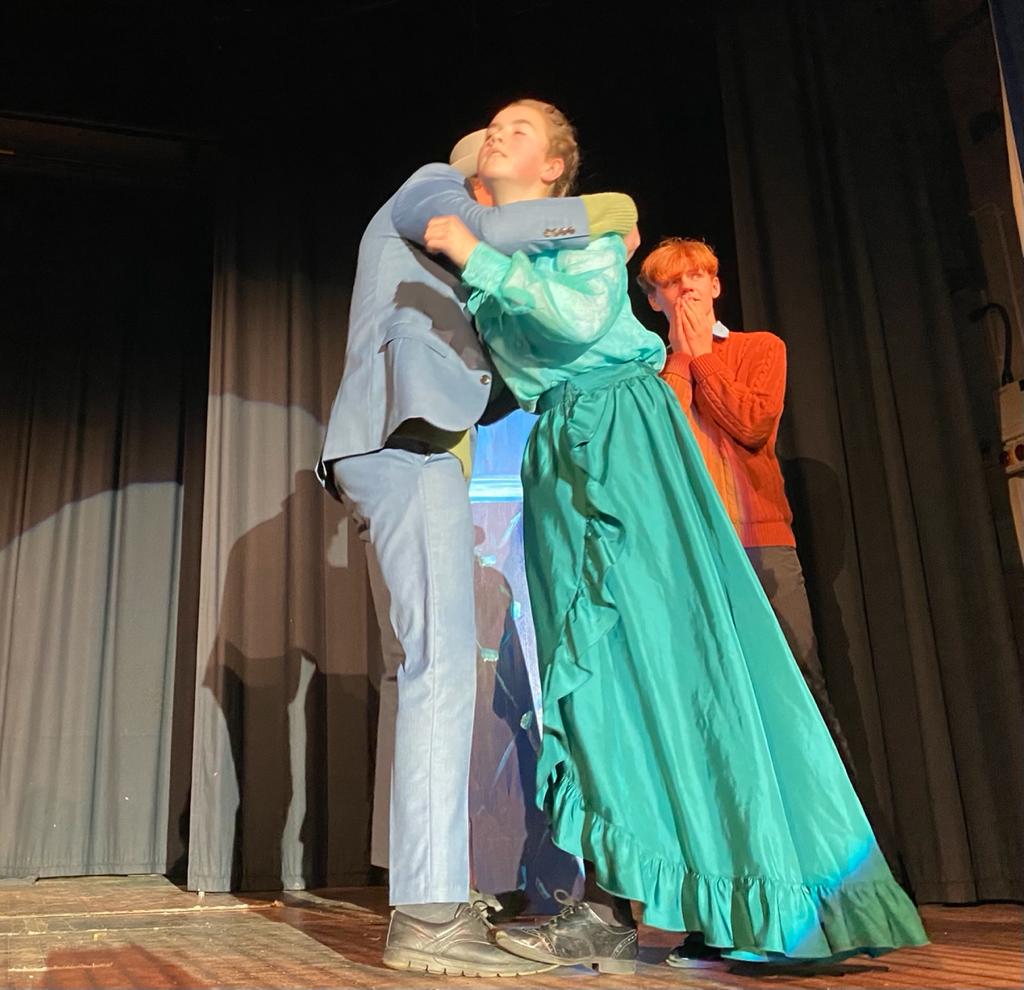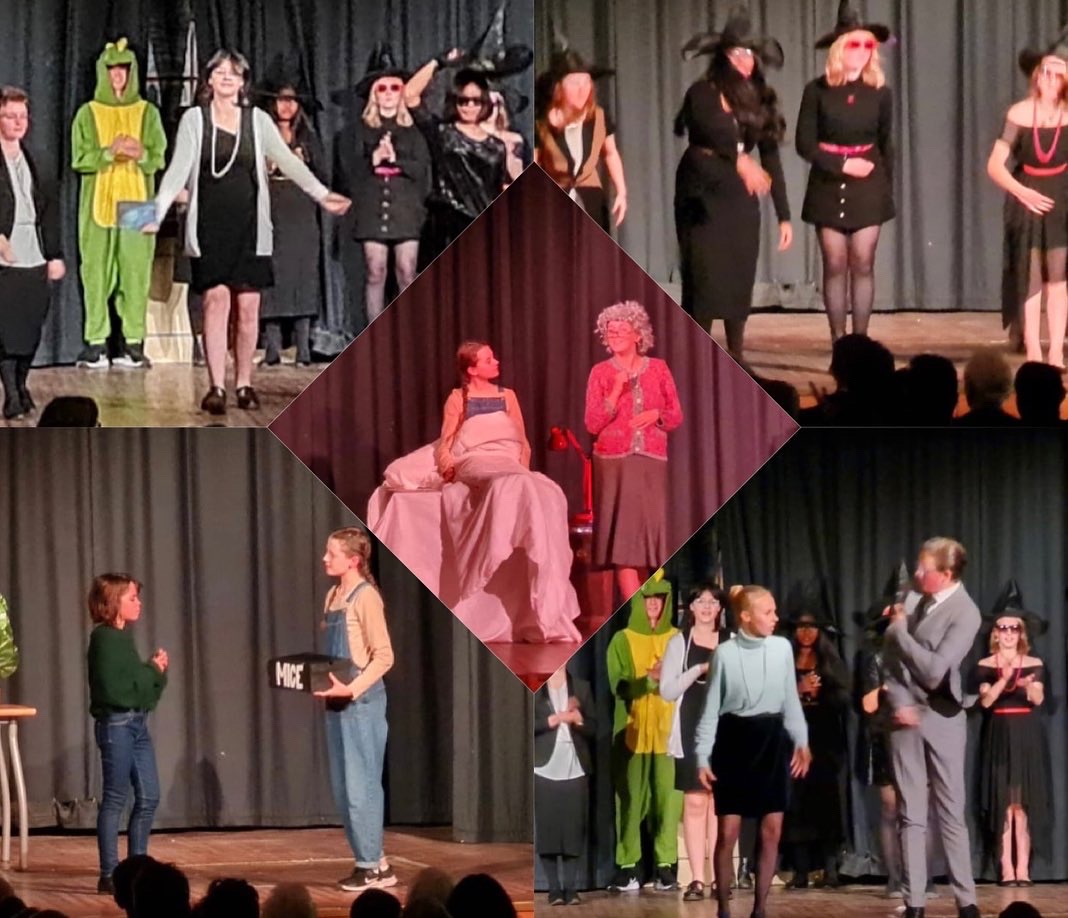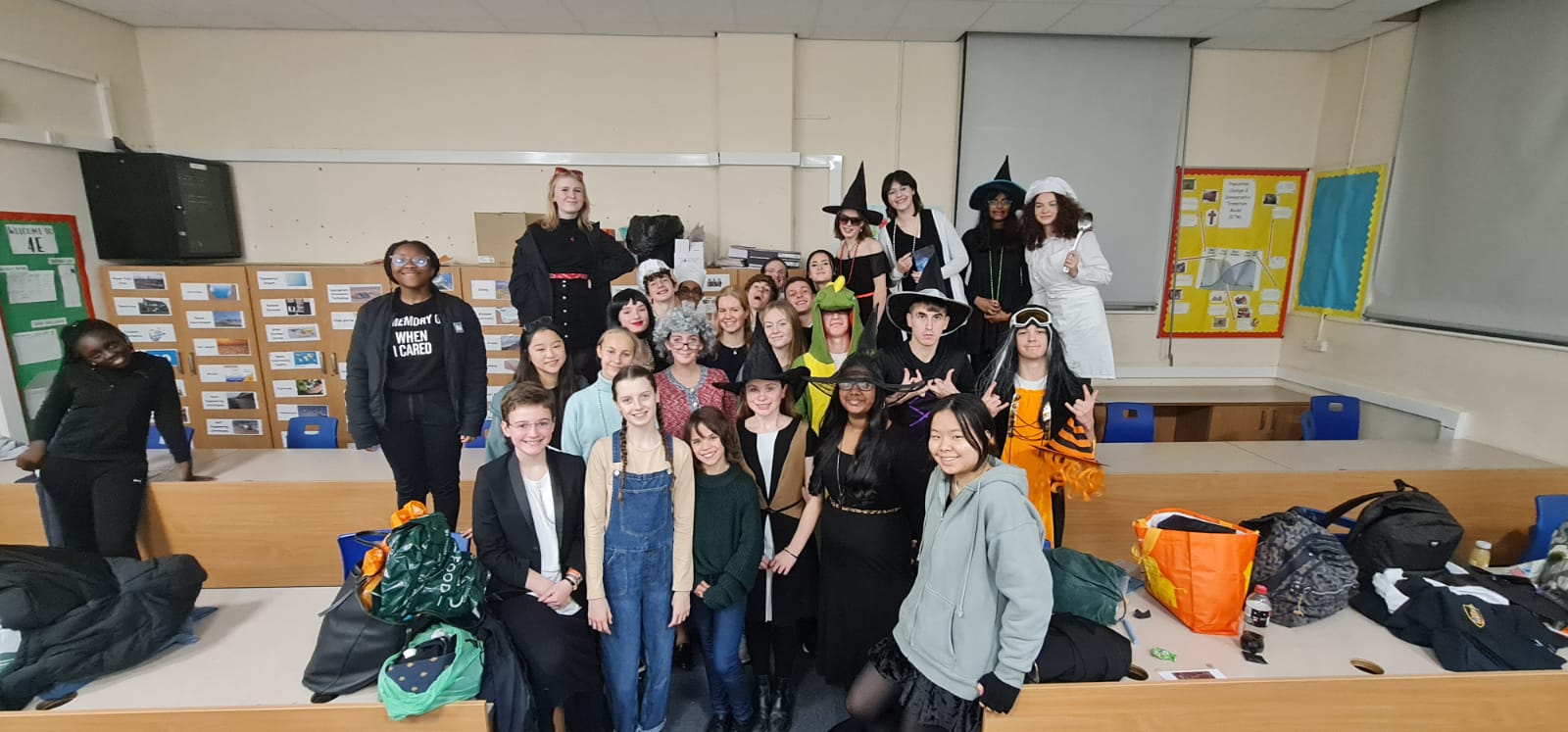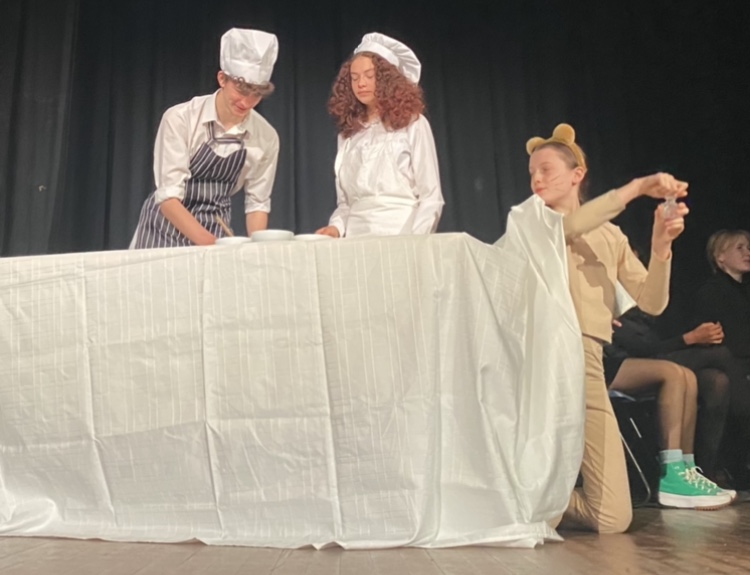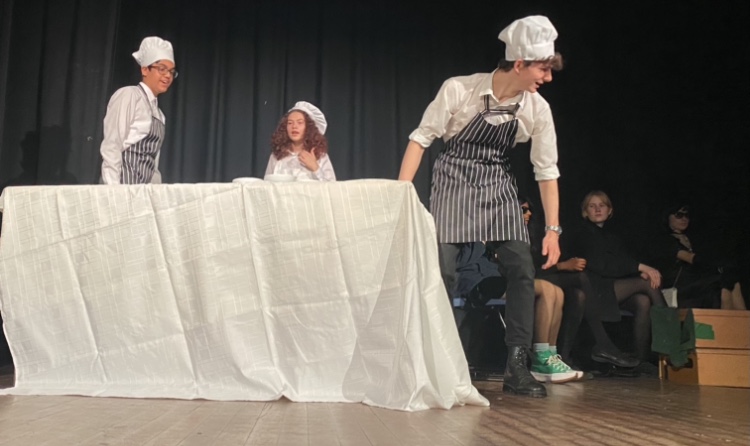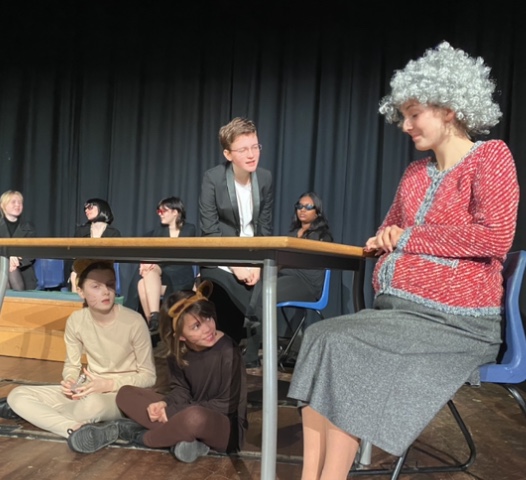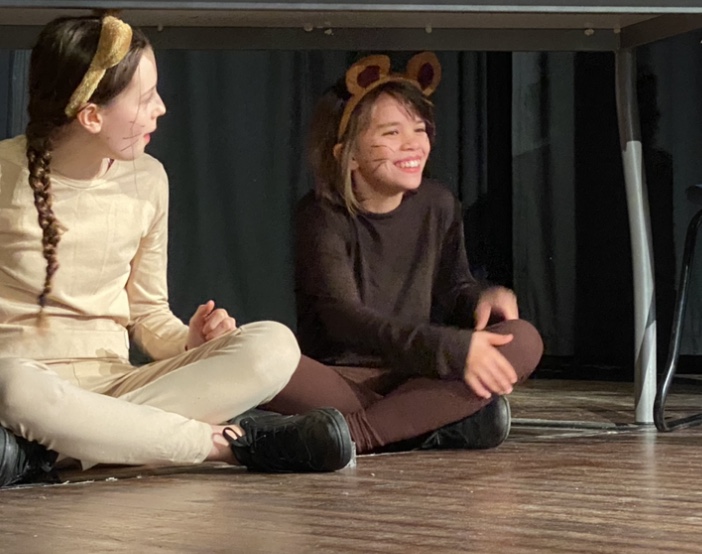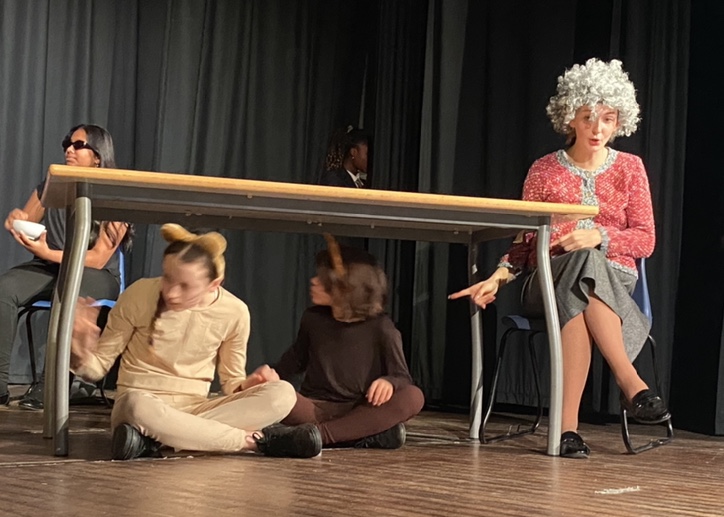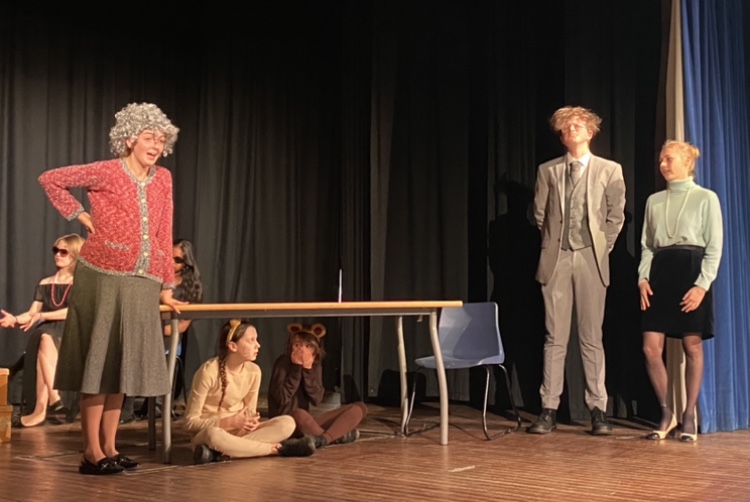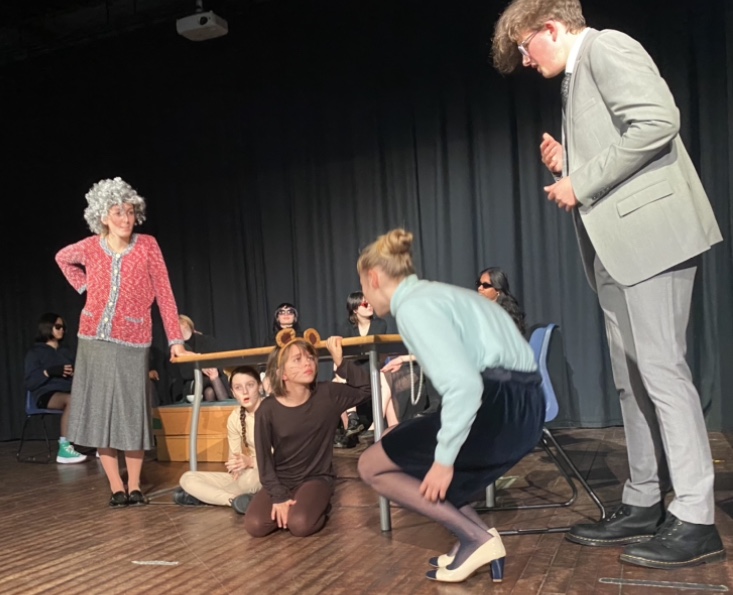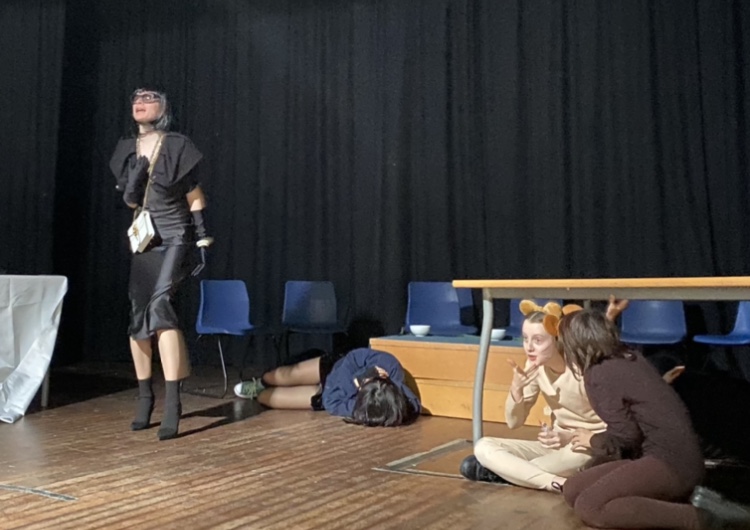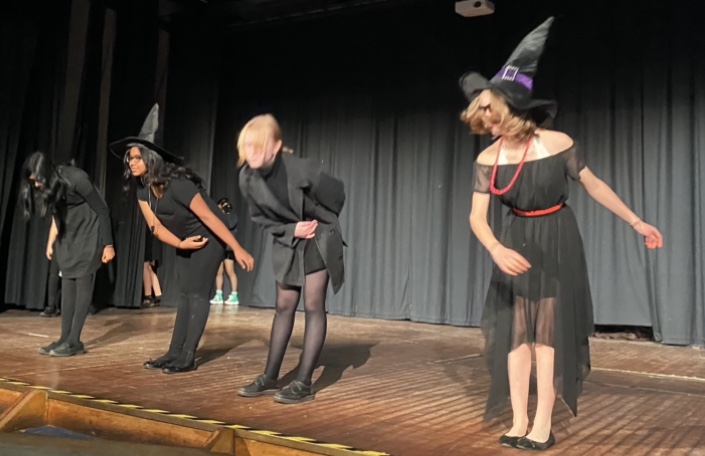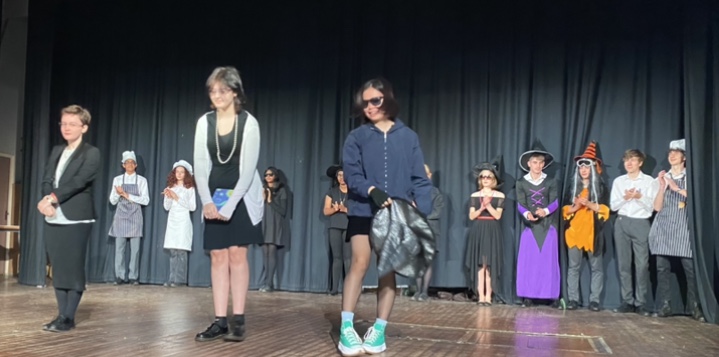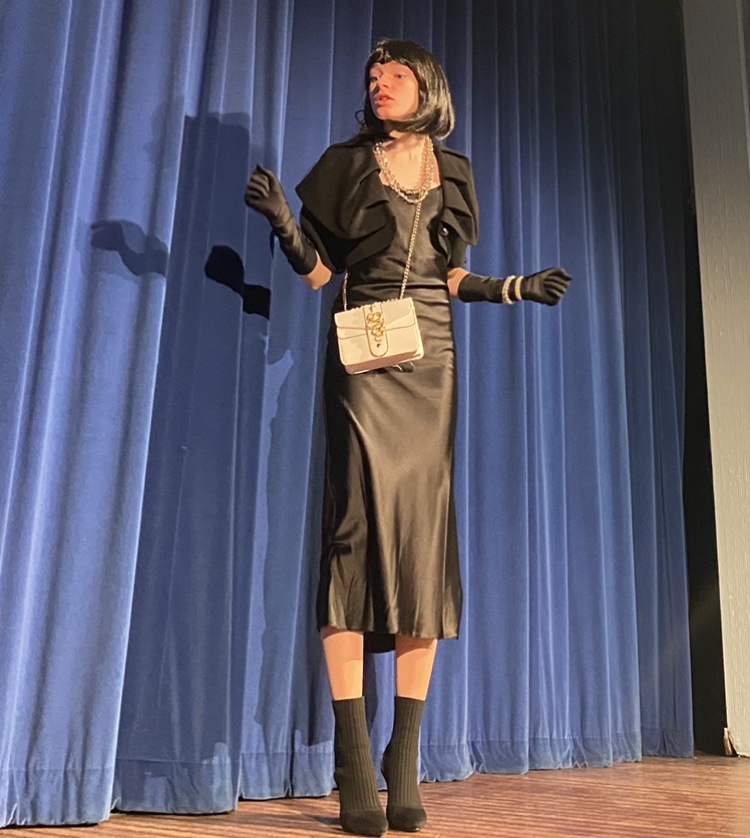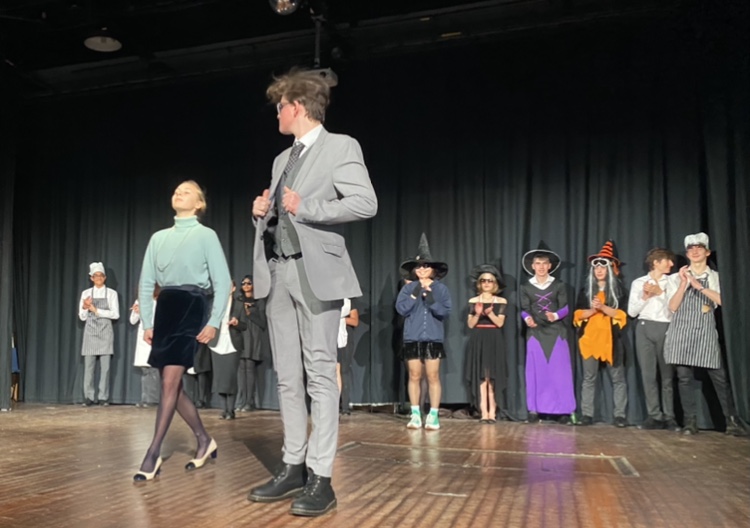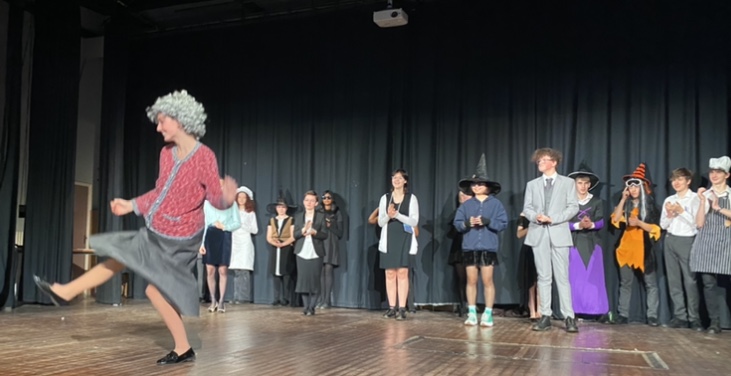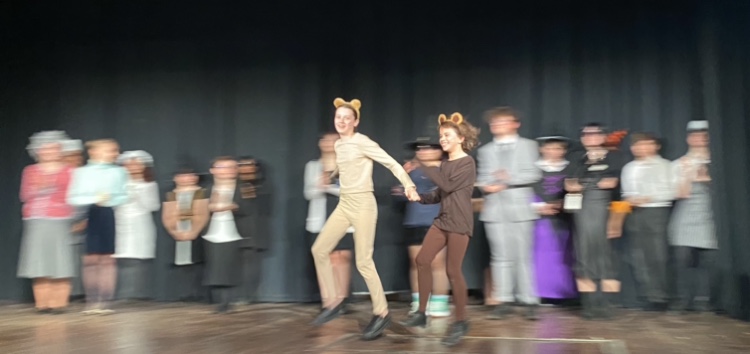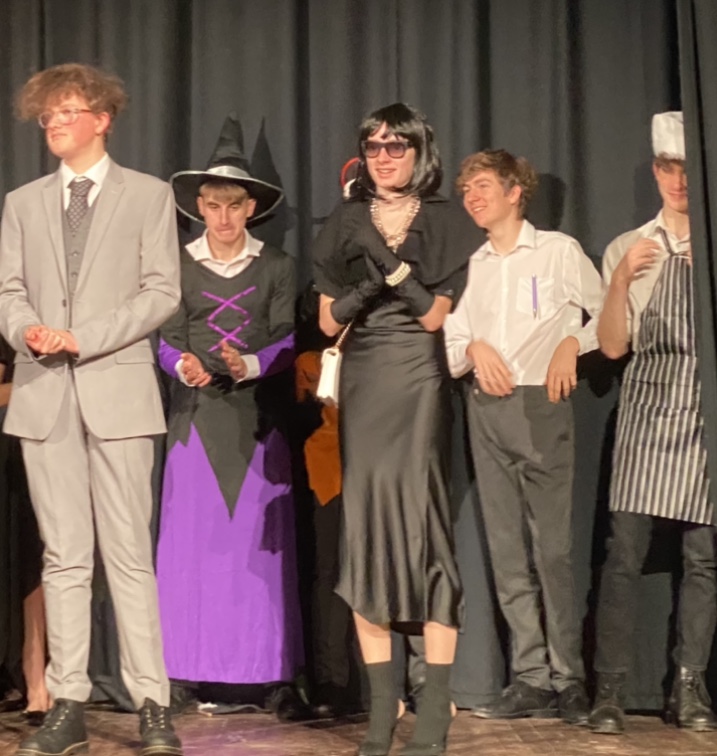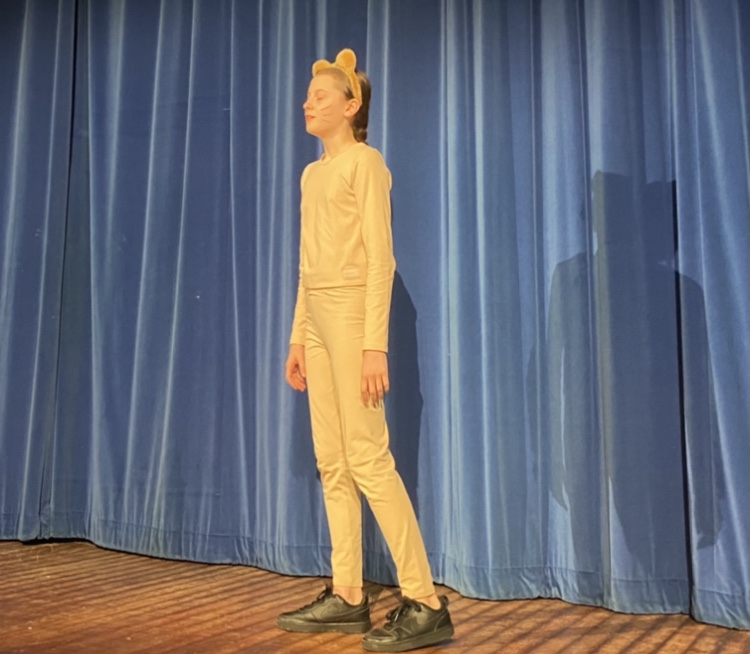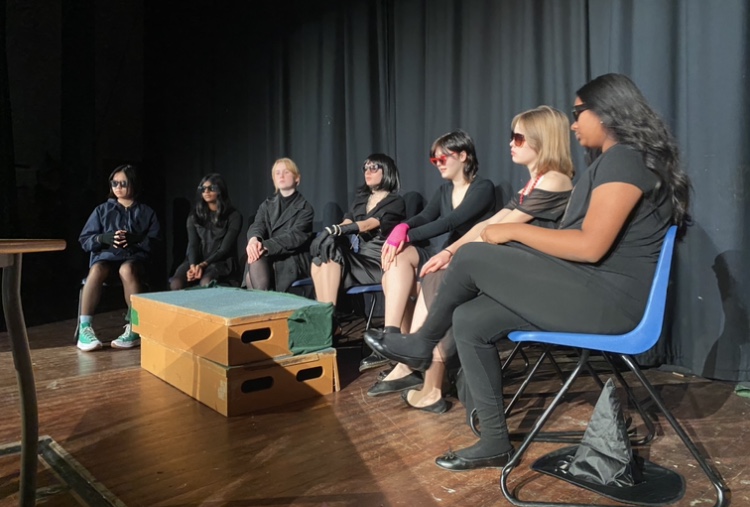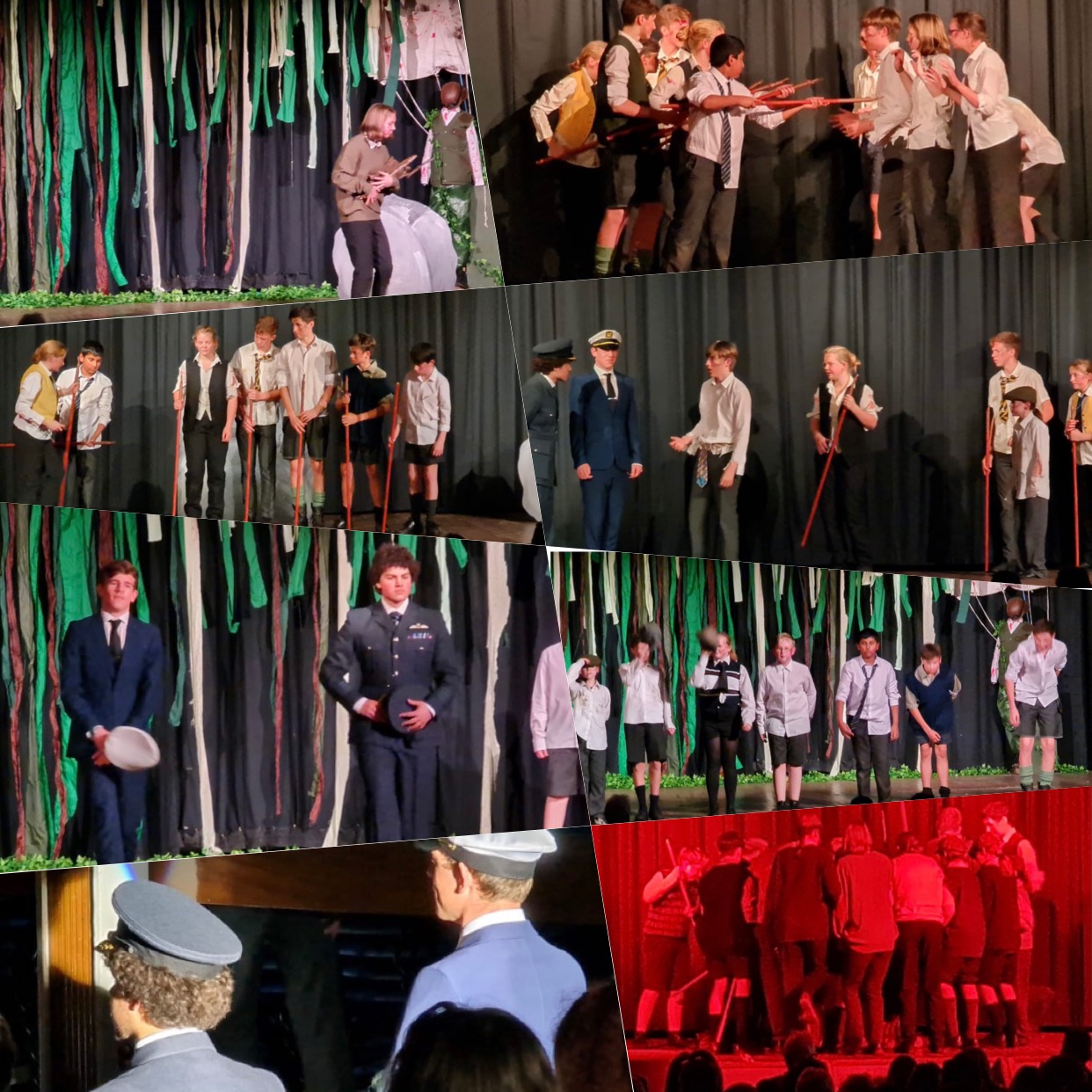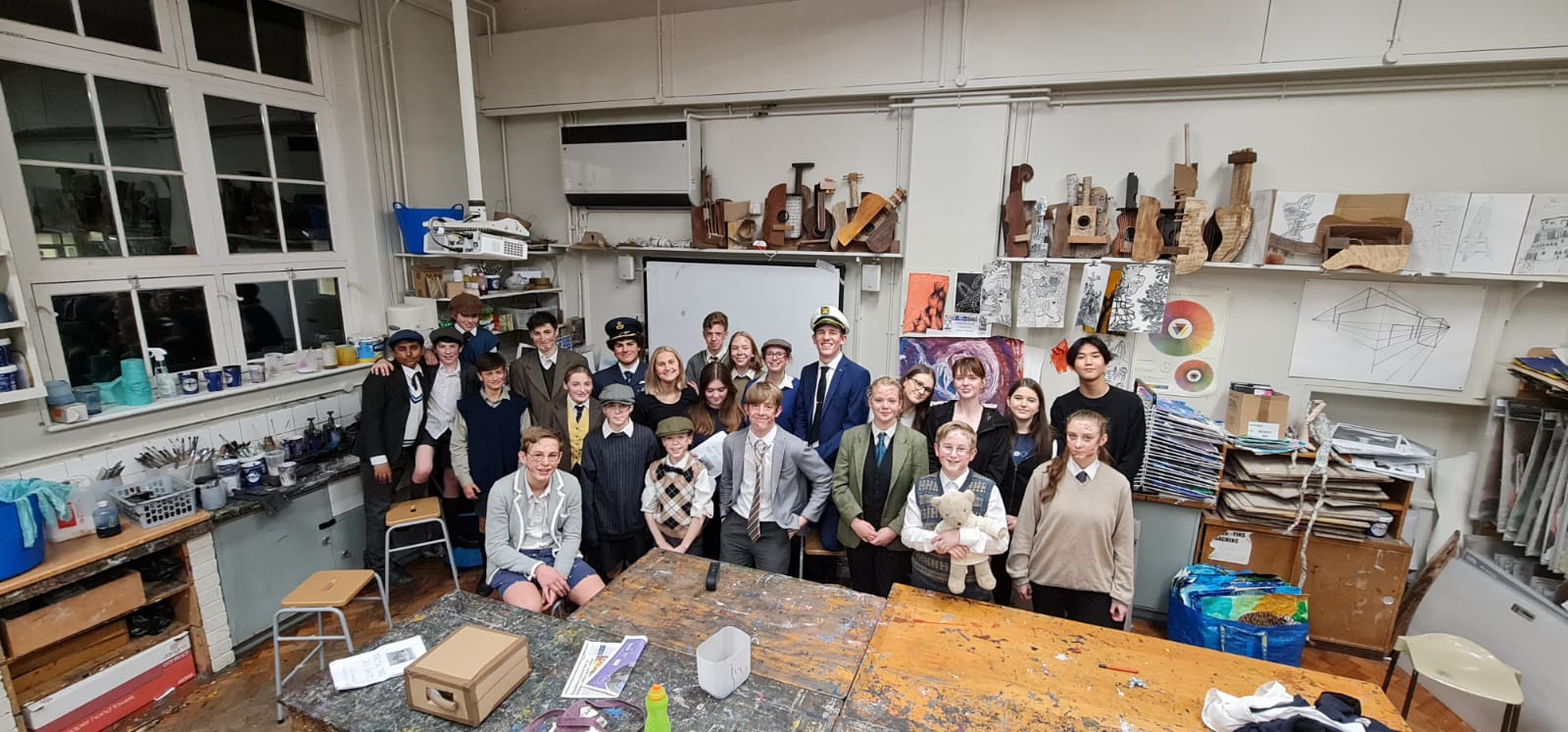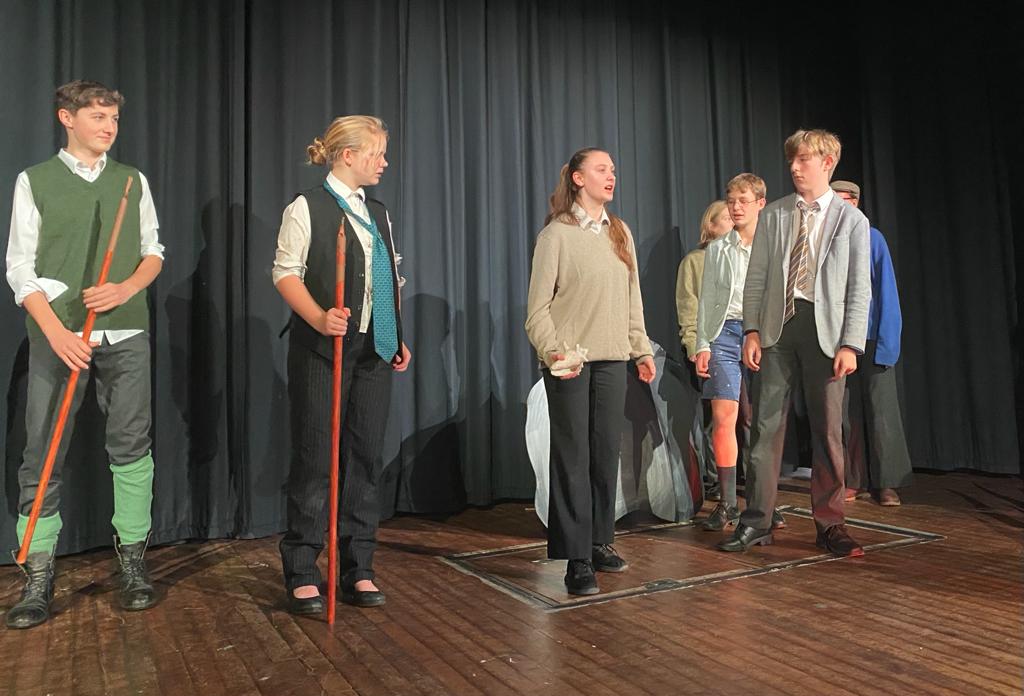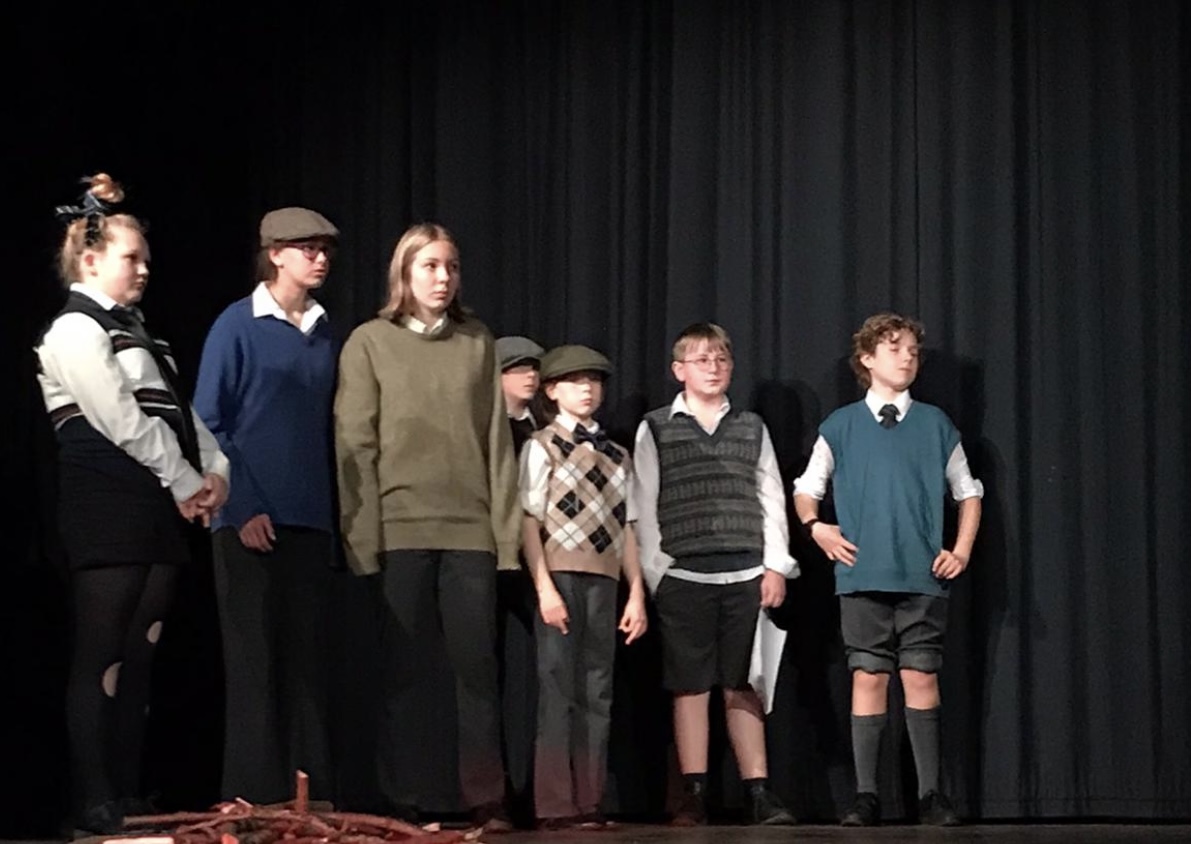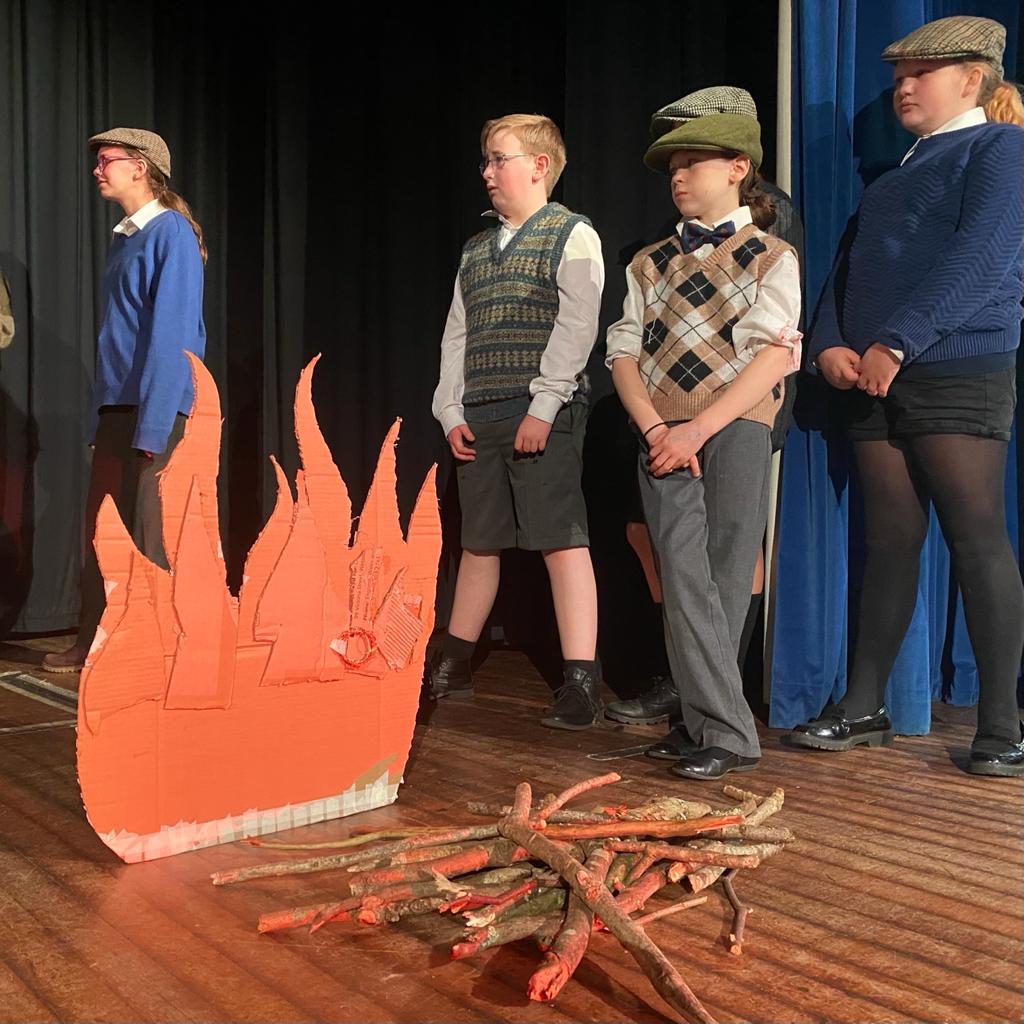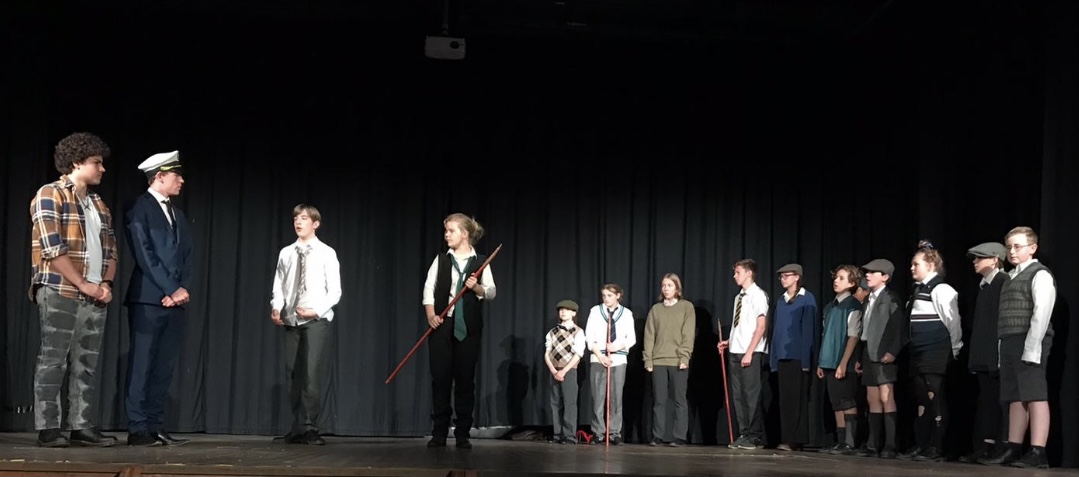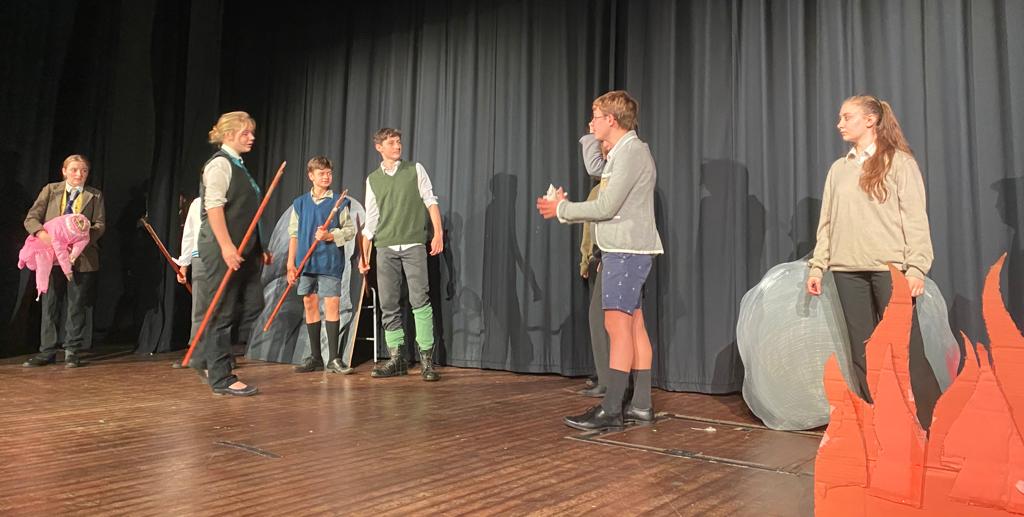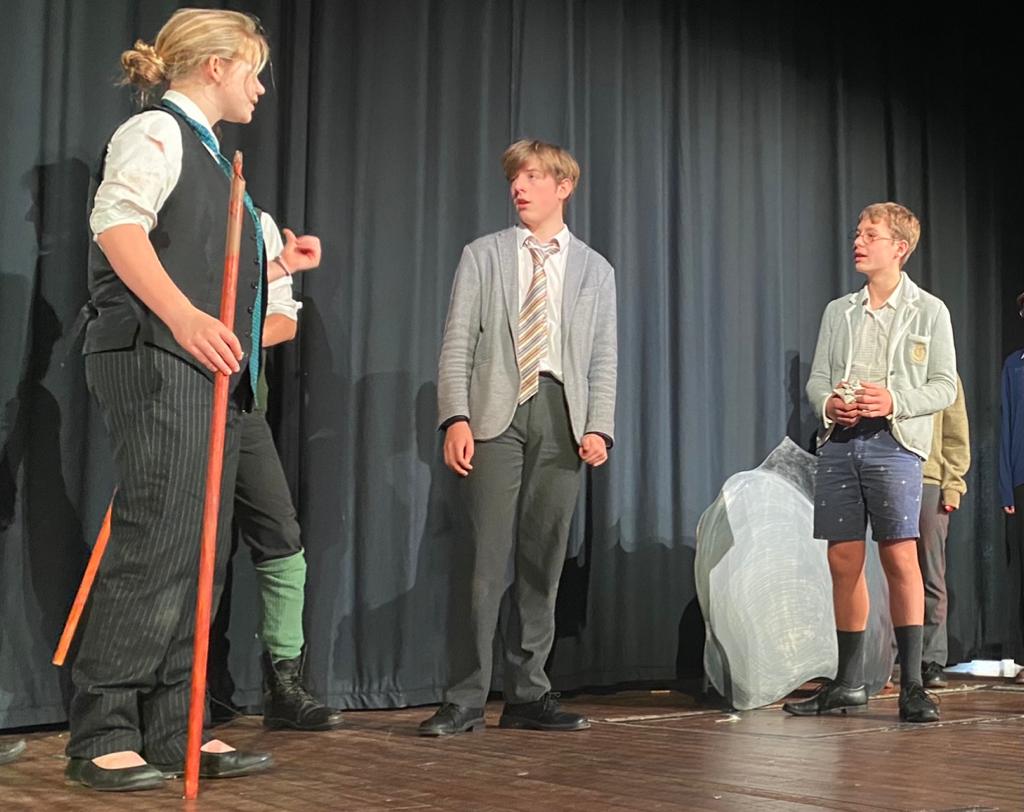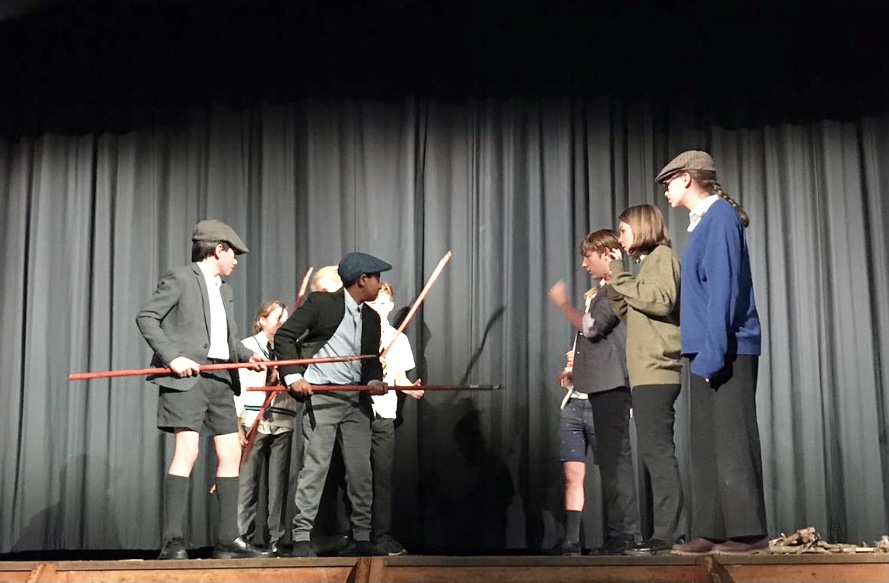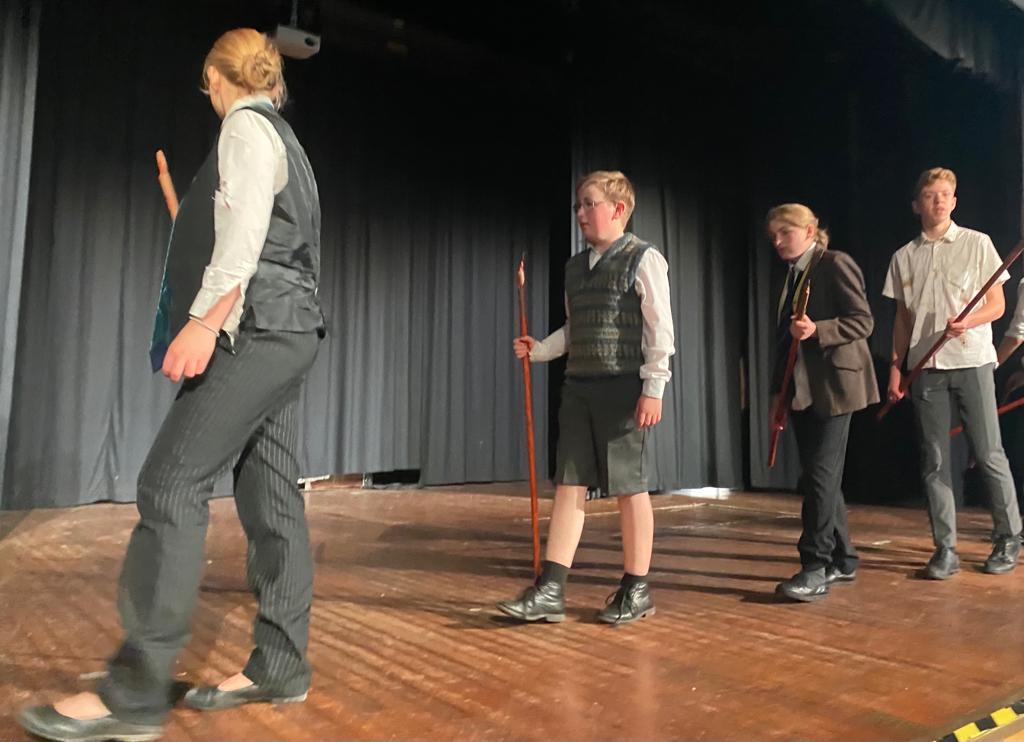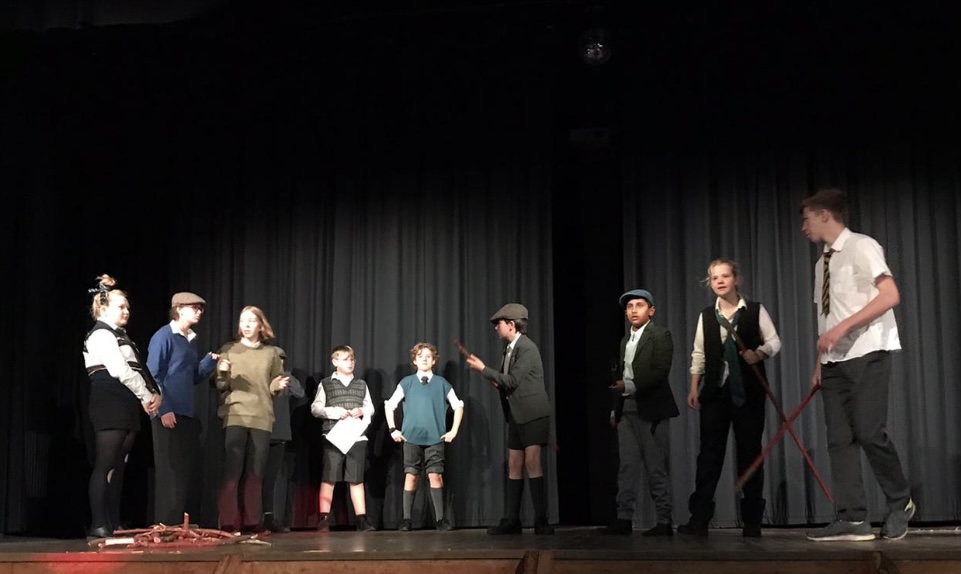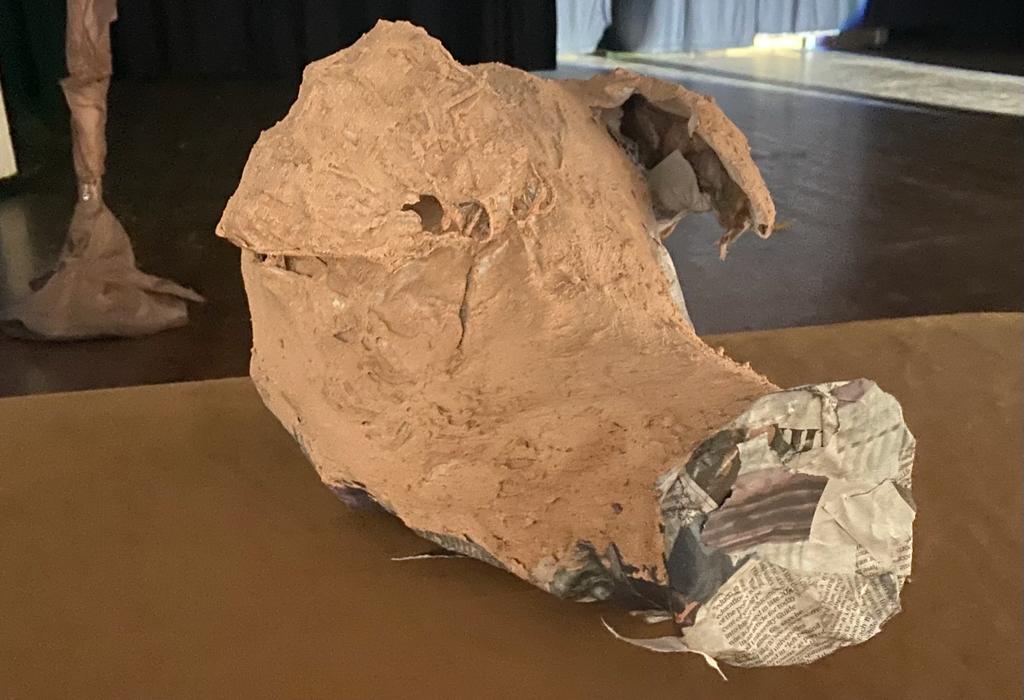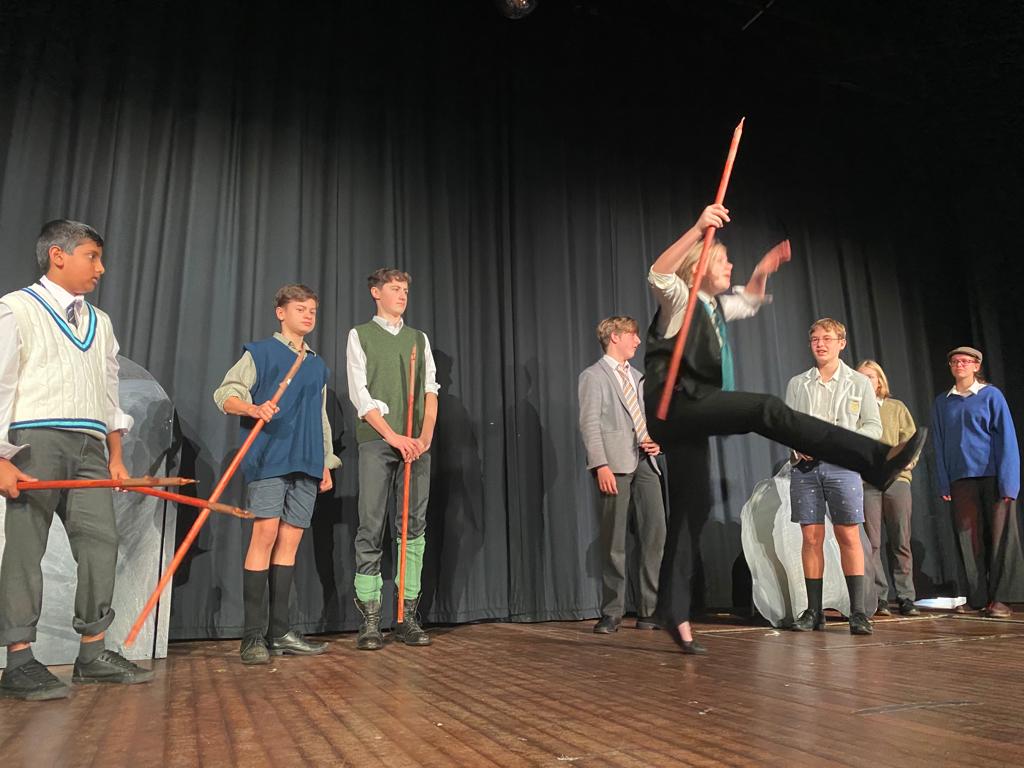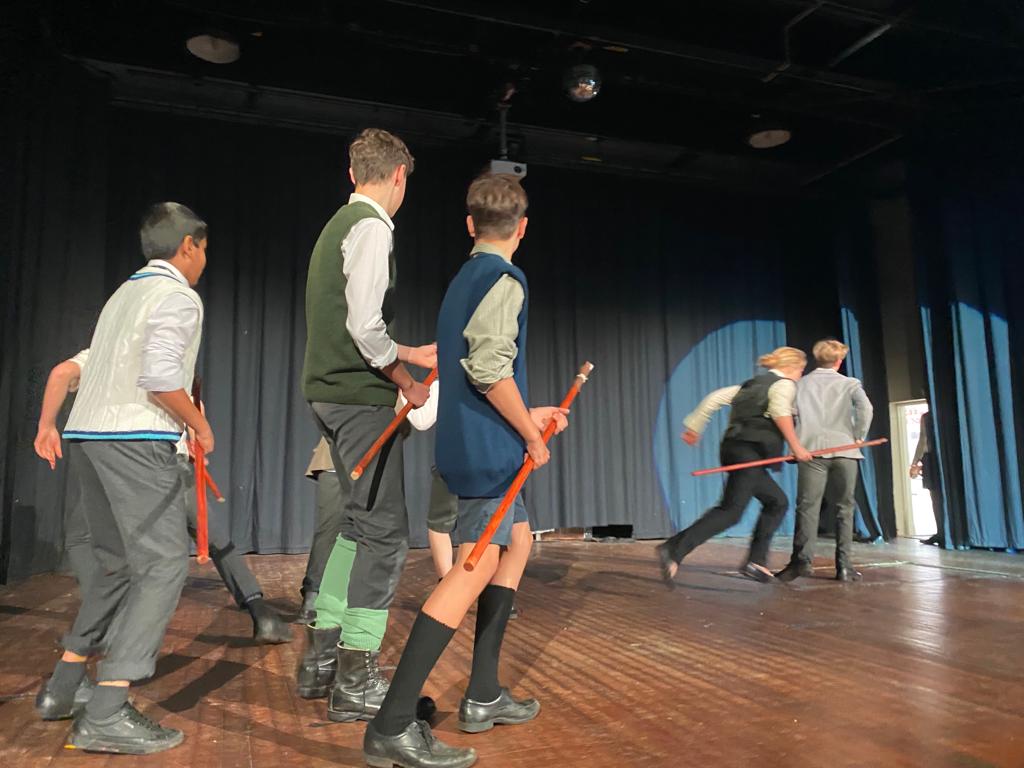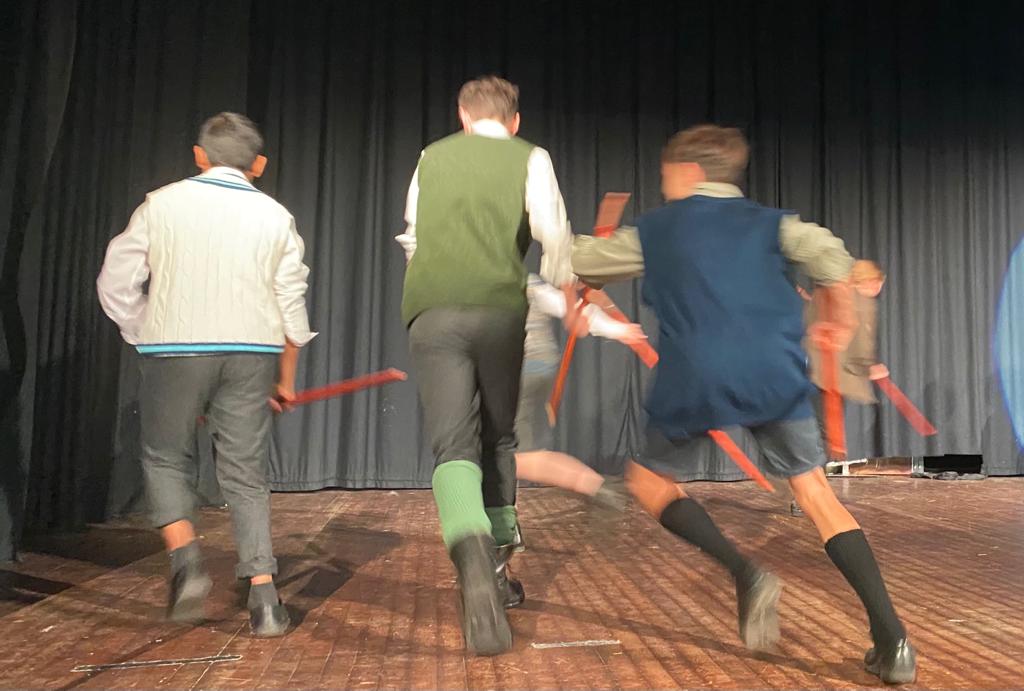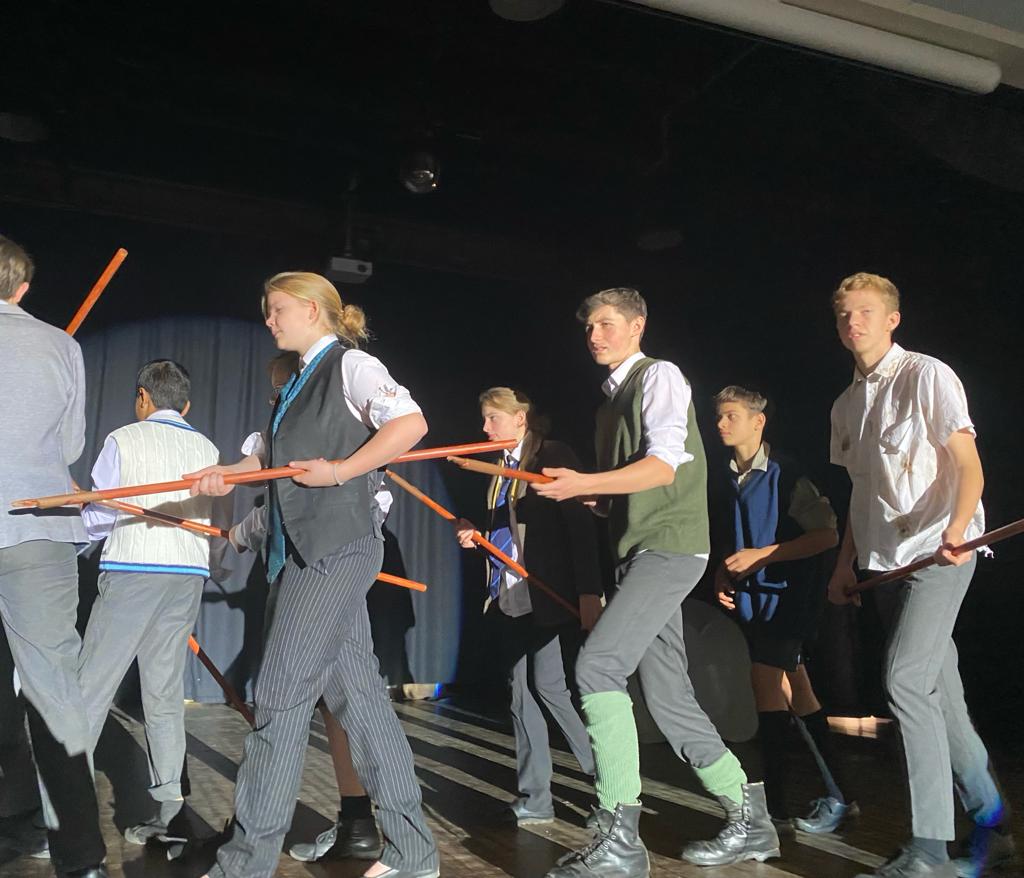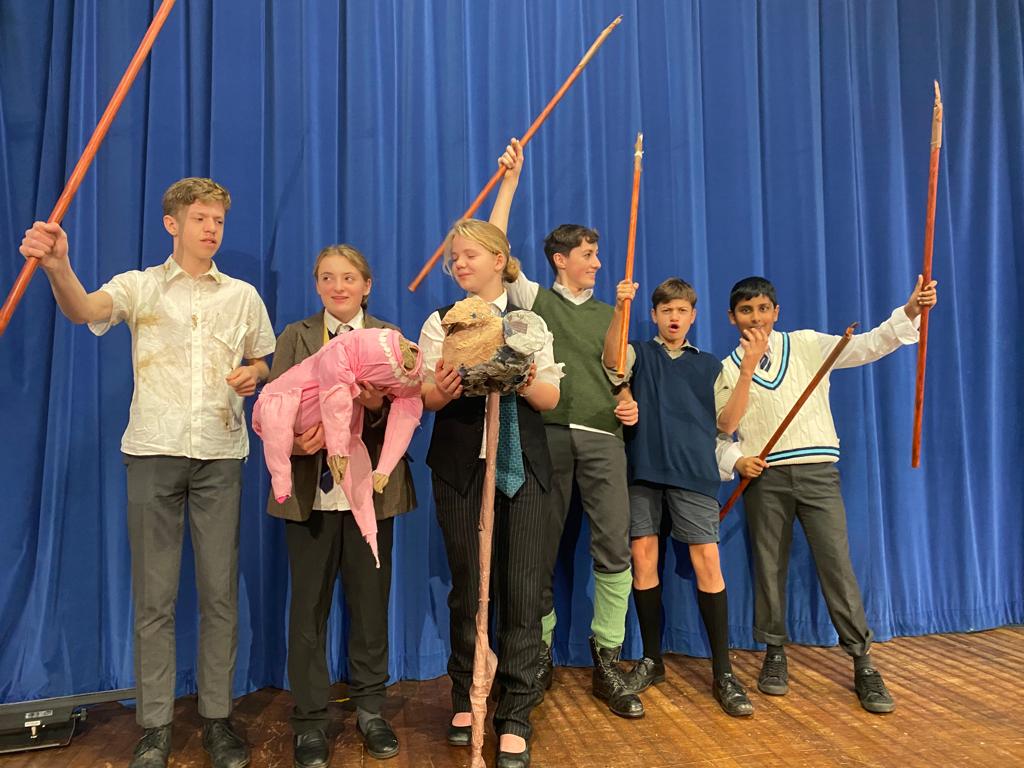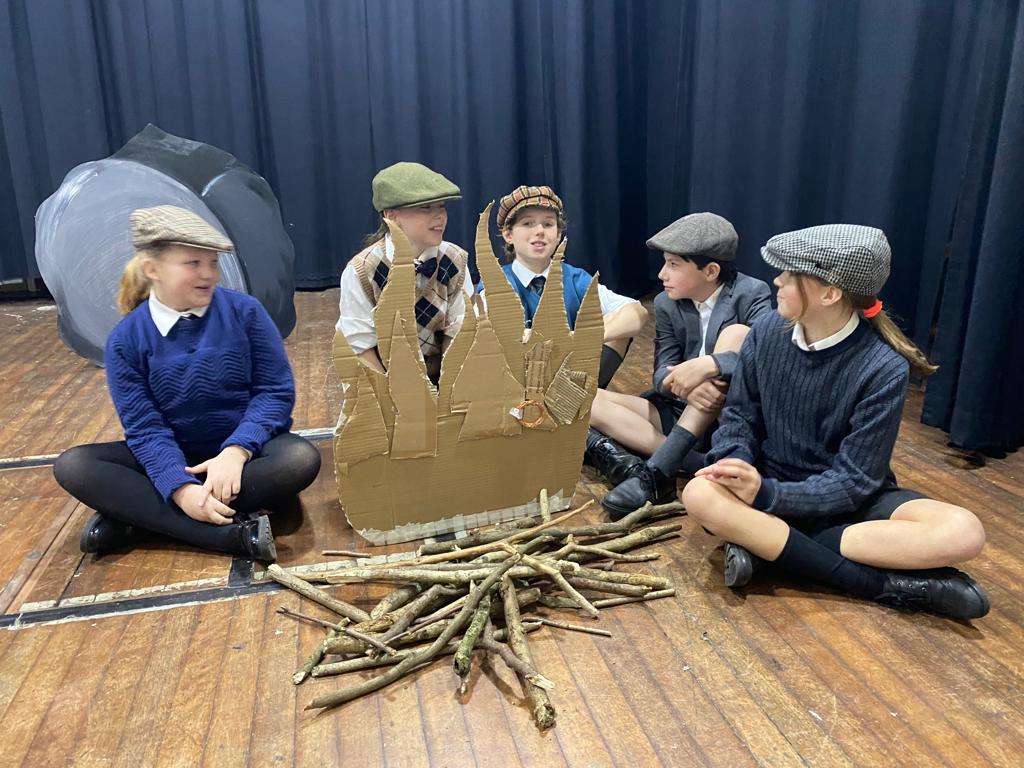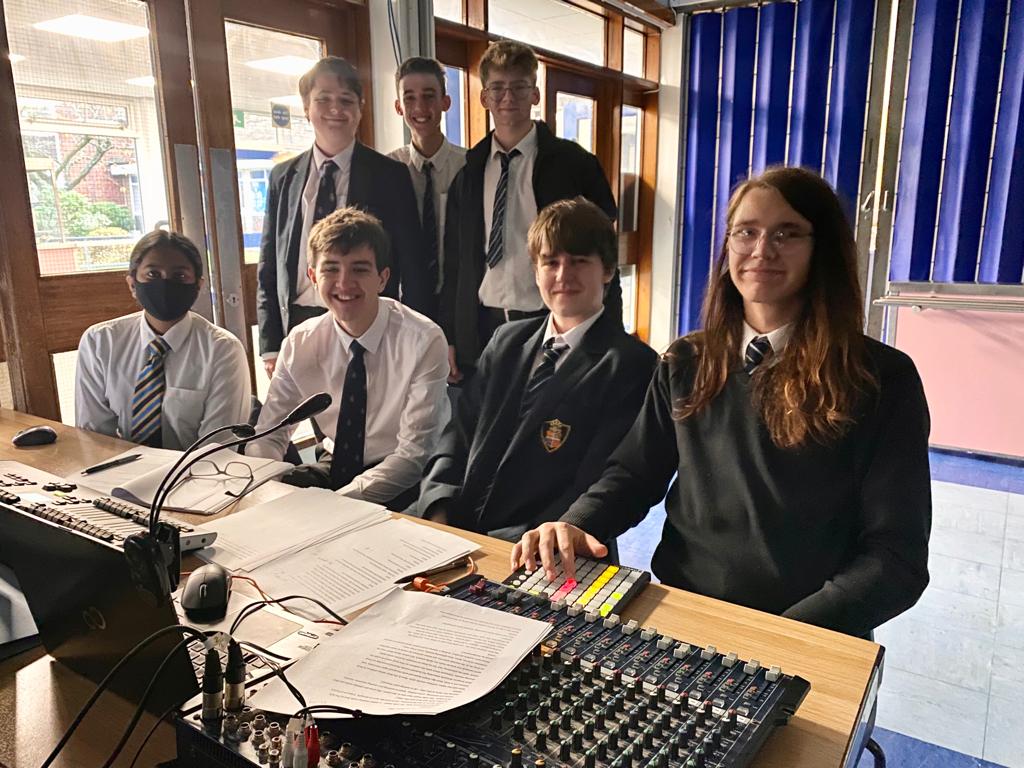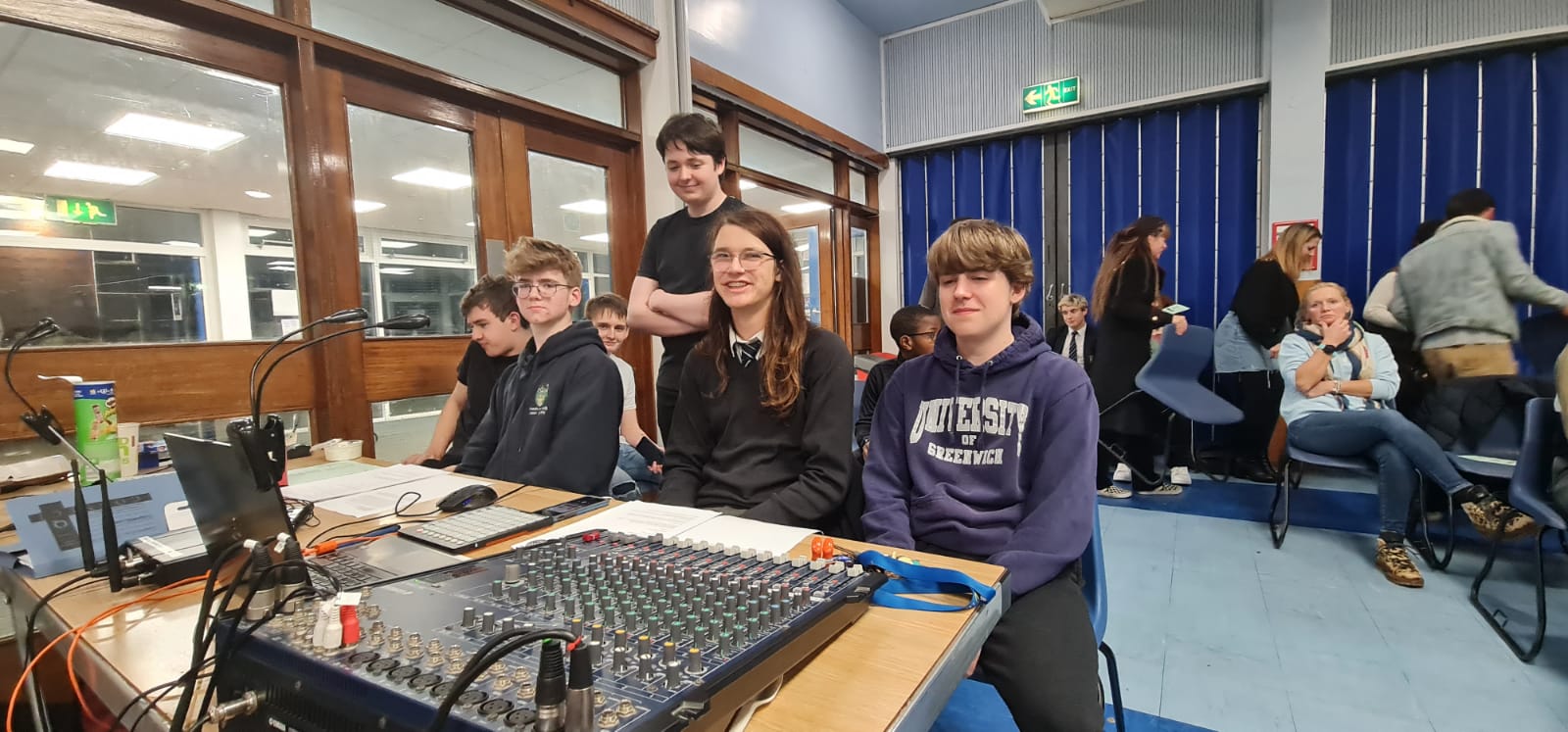HOUSE DRAMA: Bravo! Everyone take a huge bow
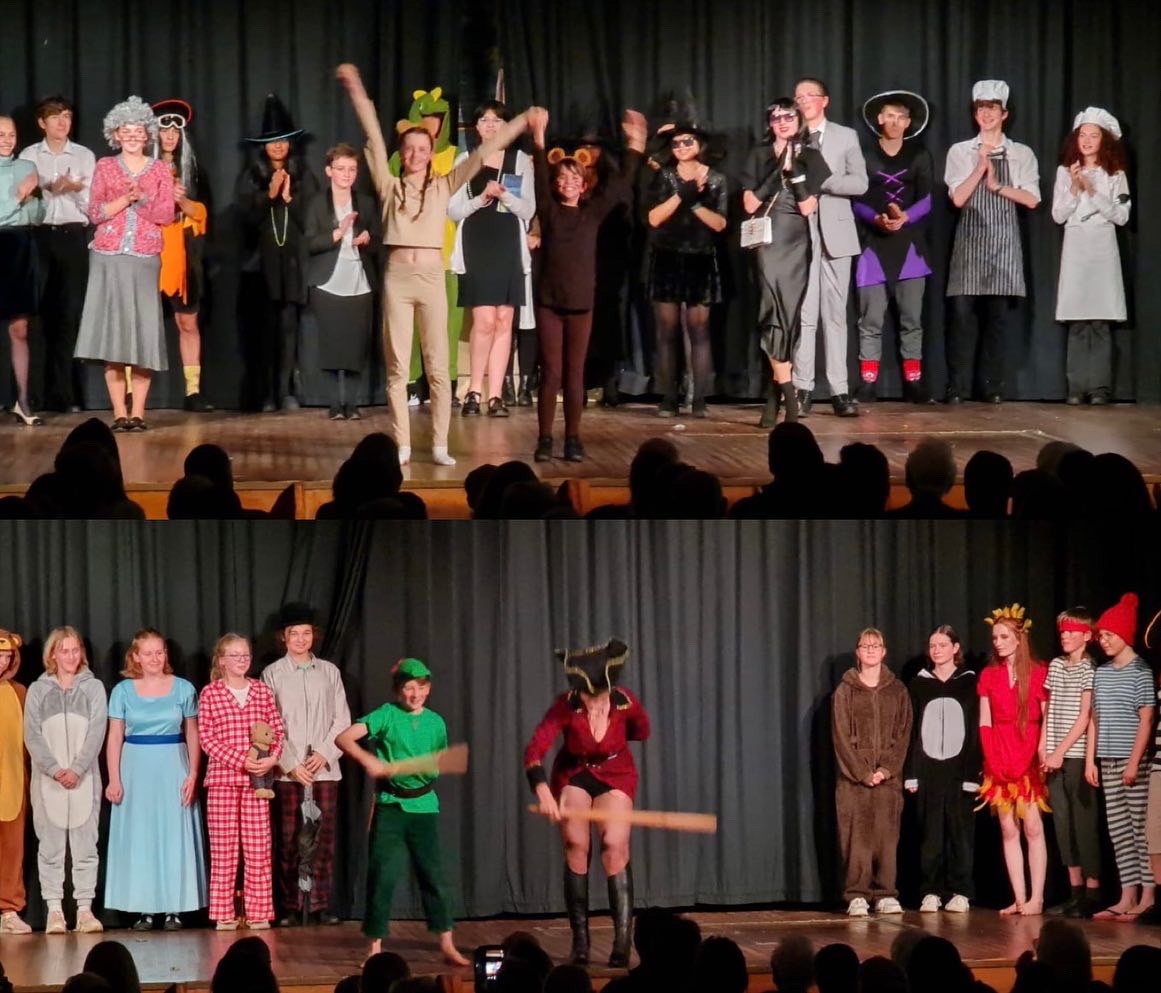
Students clearly relished their return to performing live on stage after lockdown, treating us to four fantastic performances over two nights. TERRY FELL reviews the productions, with photographer TRISTAN PARIS capturing the drama on camera. Judges had a very difficult decision to make, but the results are now in, below...
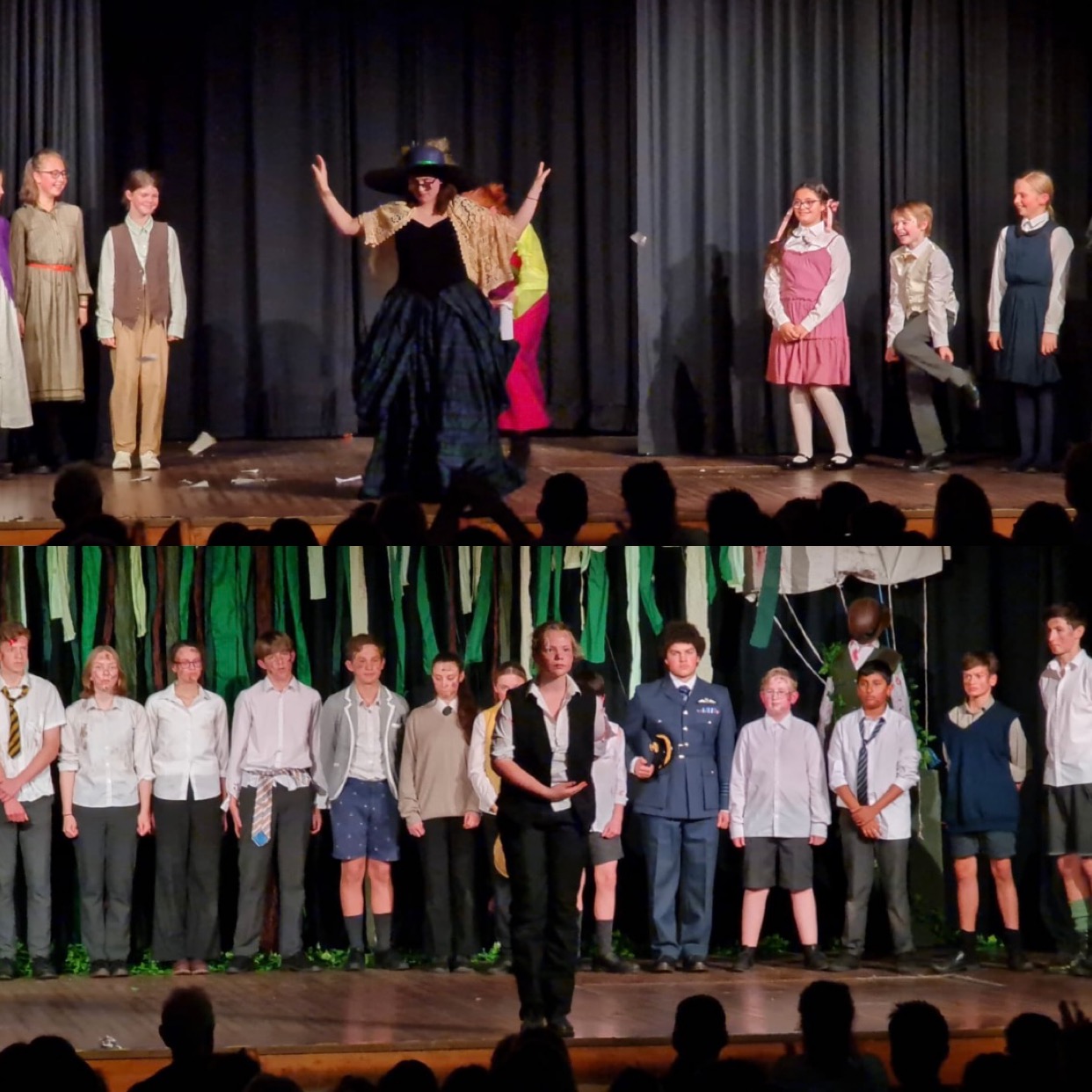
JUDGES’ AWARDS
Best Male Actor Edward Murray (Mr Brown in Nanny Mac)
Best Female Actor Izzy Kirby (Grandmother in Witches)
Judges' Discretionary Award Bobbi Todd (Tinker Bell in Pan for characterisation of emotion)
House Drama Champions 2019 De Grey – ‘Lord of the Flies’
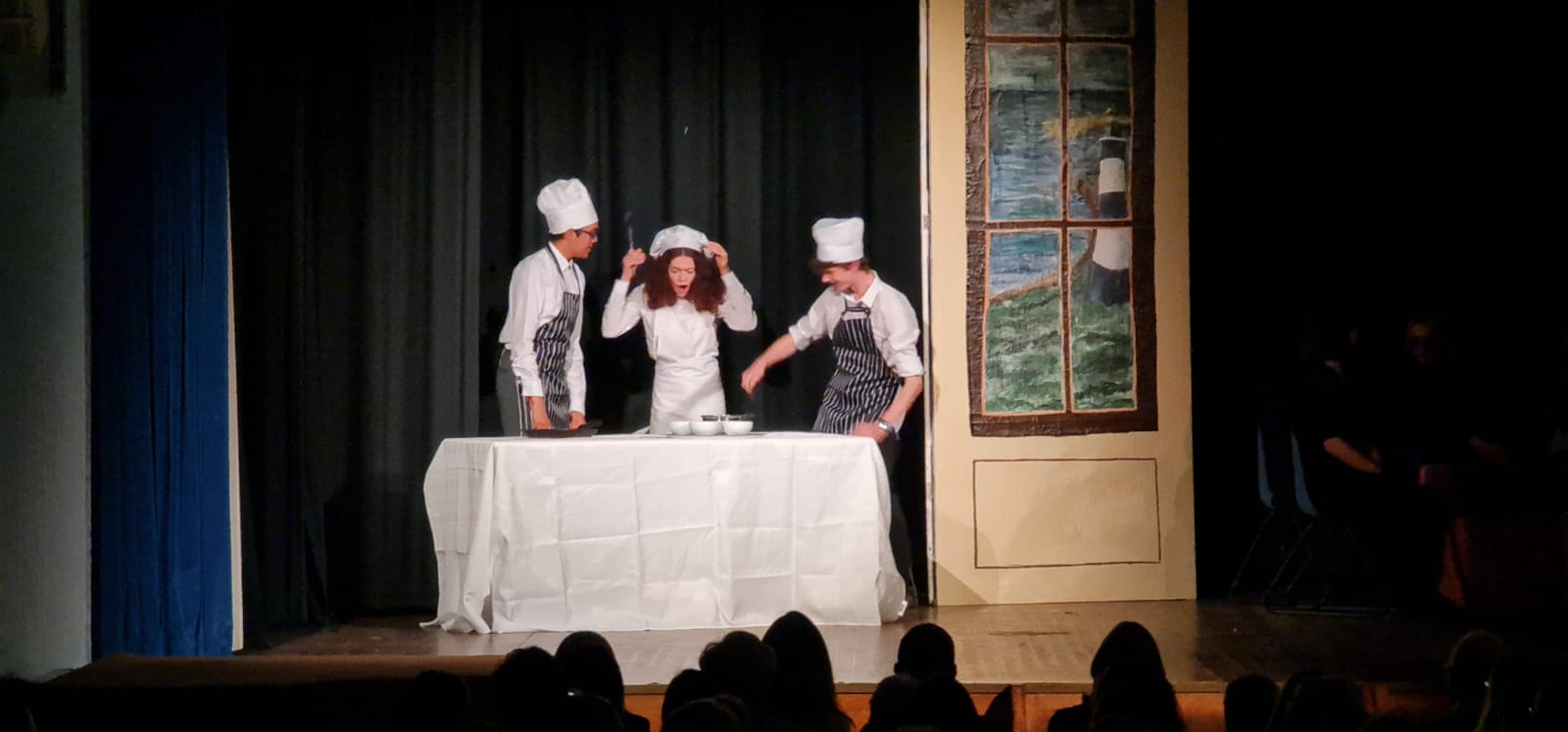
Witches (School House)
IT is easy to forget amidst the chocolate rivers and magnificent foxes that Roald Dahl is often gloriously dark in his writing, and this is beautifully typified in School House’s latest production: ‘The Witches’. Starting with the premise that cruel, child-killing witches walk among us, and ending with the heroic protagonists, Boy and Bruno (played with sparkling skill by Jana Laycock and Libby Lamb) condemned to a short future as mice (provided the cat doesn’t get them), this is a strangely unsettling story. But this is School House who embrace challenge and laugh in the face of the problematic. Make no mistake, this was a terrific start to the competition, and the directors (Alice Milburn, Tehya Sutton and Olivia Edmondson), created a production that crackled with energy and wit.
The witches themselves delivered a terrific ensemble performance, and the melding of the comical and the sinister was typified in the costume design, adorned as they were in a mismatched variety of traditional pointy hats, but with their eyes hidden behind anonymous dark glasses, whilst the literal sniffing out of the children held tones of the nightmarish. There was an infectious sense of enjoyment in their glamour and their wickedness, nicely exemplified by Stephanie Ip as the uber-enthusiastic PA to the Grand High Witch, whilst Francesca Faulks, foregoing her witch uniform in her job as the hotel’s event organiser, offered the neat reminder that ‘real witches dress in ordinary clothes’, and that sometimes evil is found in the everyday. And so to Nia Peedell as the arch-villain intent on destroying the children of England. This was a glorious performance delivered with consummate confidence and flair. A good measure of technical skill is the actor’s ability to use silence in their work, and Nia’s weaponisation of the pause as she removed her shades to inspect her coven of villains was superbly effective. She seemed to dominate the stage at every point, even when we could only hear her voice from the wings. However this production was no one-woman show, and Dahl provides the vital balance to the wicked witches in the form of Boy’s Grandmother, played by Izzy Kirby. Another experienced actress, Izzy delivered the wise and protective matriarch with wonderful control and presence. Sharp as a razor and devastating in her sassiness, she gave her audience the comforting certainty that somehow, in the end, it would all be all right. School House are very fortunate to have such talented actors in their ranks, and we saw the same flair and enthusiasm in the younger leads, Jana and Libby, who were utterly unphased by their RGS stage debuts, and who provided deeply impressive performances and crystal clear delivery. In fact there were wonderful moments from so many of this cast; the lonely ‘watchfrog’ (Will Drinkhall); the mice infested chef team (Owen Robinson, Tess Holloway and David Fernandes) who brought shades of Pixar’s Ratatouille to mind, and the unashamedly hoity-toity Jenkins family (Emily Harris and Max Masey) to mention a few. It is clear that the School House conveyor belt of talent is running well, and we look forward to seeing them continue to shine in future productions.
The set, designed by Ruby Chan, was simple yet very clever, with the lighthouse glimpsed through the window changing from crisp and bright in good weather to gloomy and indistinct as the weather turned – a little detail, yet so effective, and the School House stage crew managed the scene changes with slick professionalism that allowed the sustained pace and energy so vital to the success of this show.
The School House directors must take enormous credit for their vision and handling of a story that demands an immensely fine balance of the comedy and the terror. The early scene as the curtains opened on the young child waking suddenly from the nightmare in which she lost her parents was set against the calming pragmatism of Grandmother. The creepy countdown and the claustrophobic intensity of the witches closing in on the unsuspecting (and eternally hungry) Bruno was lightened by the ensuing scene when he discovered his paws for the first time, and the chilling cruelty of the Grand High Witch was tempered by the humour of her larger than life characterisation, and her sheer revelry in her own villainy. The transformation scenes were well handled too, with the use of strobe, blackout and quick costume change allowing Bruno and Boy to turn into mice in a flash, and the reveal in both cases brought its own warm humour. The use of the composite stage was also a clever choice, again facilitating that relentless pace.
As an audience, we felt from the first moments when the spotlight lit Grandmother in her armchair, that we were in safe hands, and that this was a cast and crew clearly loving their work.
Bravo School – this production was quite simply magical!
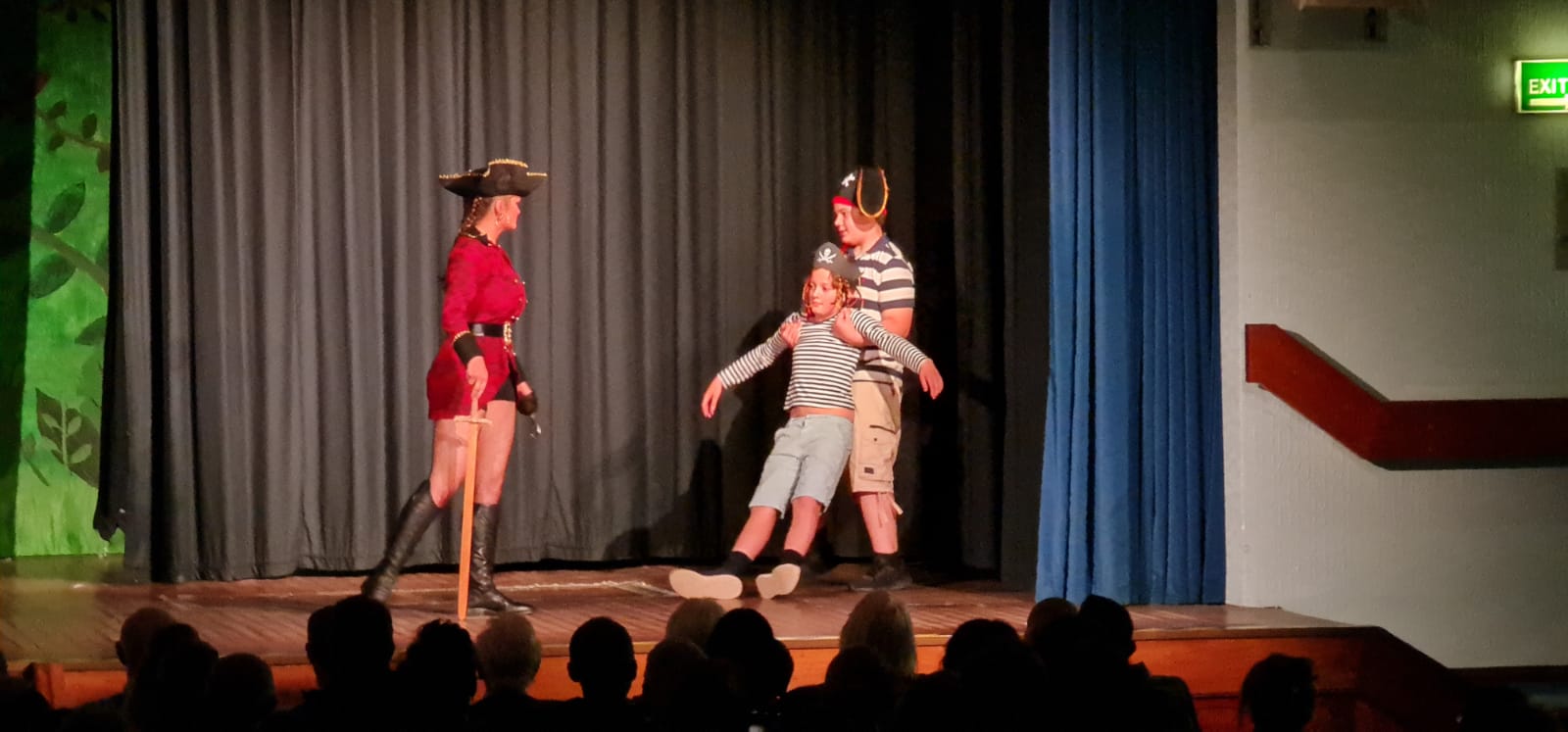
Pan (Porteus House)
J.M.BARRIE’S iconic story explores the sometimes blurred edges between childhood fantasy and reality, and it requires a deft handling and sense of vision in order to successfully bring this nuanced and highly complex tale to life, especially in only 45 minutes. Fortunately, Zoe Williams, and her Porteus production team of Henrietta Jarvis and Amy Burgess had just that vision, and this was a gorgeous production that took us to the heart of that dreamy borderland.
A large and talented cast were very well led by two debutants to the RGS stage in Peter (Maxwell Alderson) and Hook (Amelia Moody) and one old hand in Wendy, played by Tilli Lee. The loss of last year’s drama to Covid meant that Maxwell has had to wait a full year to announce himself onstage, but it has been well worth the wait. He lit the stage with his energy and presence, and both his physical and vocal performance were compelling, from the moment he ghosted through a narrow window pane to his final joyous departure with his new companion. Complementing the innocence of Pan, Amelia Moody’s Hook was a study in complexity. By turns brutal, wistful, cruel and reflective, this was a mesmerising exploration of character, and whilst the traditional bombastic comedic villainy of James T Cook was there for all to see, there was also a vulnerability in this performance that required great skill to convey. Tilly’s Wendy was likewise delivered with great panache, and the apparently seamless drift deeper and deeper into the role of mother to Peter and the boys was fascinating to watch, particularly as Wendy starts to realise that her feelings for the oblivious Peter go beyond the maternal. This central trio were supported by a series of wonderful performances from across the cast. Bobbi Todd as Tinker Bell was scintillating: another debut performer, who acted a silent role, and yet whose communication of the fire and fury within her through her movement, gesture and posture was just incredible. Jamie Pritchard and Amelia Briggs as Wendy’s siblings were bright and funny, and Beatrice Jarvis played Tiger Lily with just the right solemn defiance to counter the cruel indifference of the pirate crew. The two ensemble groups of Lost Boys and Pirates were beautifully engaged in their roles, with the fight scenes a particular highlight, and each and every actor in these groups played their own part with a relish and conviction that were fundamental to the production’s success. Tootles (Laura Parsons) was particularly engaging as she wrestled with her desire for an identity within the group, whilst Olympia Dunn shone in her role as the loveable Smee, delivering the clarity and the humour that bring out the best in Hook. This production played with different generations of the Darling girls, and Ella Grace Foster narrated the story beautifully in her role as the older Wendy, whilst Martha Robinson’s cameo as Wendy’s daughter Jane was performed with exemplary confidence and skill. Charismatic too were the Darling children’s parents, played by India Wilkinson and Rex Turner – expect much from these actors in future productions. There were a couple of other memorable cameos to mention, in Tina Todd’s bright and multi-plumed depiction of the Neverbird that comes to Peter’s rescue, and Henrietta Jarvis stepping in with consummate dedication to fill in for a missing actor as the canine guardian Nana.
These actors played against a clever set centred on the window to the Darling’s nursery, through which Tink and Peter slipped into their lives. The dynamic switches to the ‘Wendy house’, the rock at the Mermaid Lagoon and the deck of the Jolly Roger were swift and accomplished, and avoided the house drama quicksand of clunky and slow scene changes. Peter’s shadow transformation was beautifully realised using spotlights, and little details like the Neverbird’s nest (a straw encrusted inflatable pool-ring) and the balloon that takes Wendy to safety, which seemed to conjure itself into existence at the edge of our vision, were very clever indeed. However perhaps the greatest technical triumph of this production was the costuming, which allowed the actors to glow against the dark set curtains, and which gifted each exchange or ensemble piece a vividness and clarity that were just superb. Nowhere was this better seen that in the scenes with Peter and Tink, with the emerald green costumes which resonated with all of our expectations, and allowed us to concentrate on the detail of the acting.
This is a story that is hard to pin down: Peter is at times delusional, insufferably arrogant, incredibly noble and often amnesiac, whilst the detached chronology can be particularly disconcerting. However what the Porteus team ultimately showed was that the verge between reality and fantasy is a truly wonderful place, both perilous and yet also very safe, and a place which the young at heart embrace and cherish.
This, Porteus, was a very great adventure!
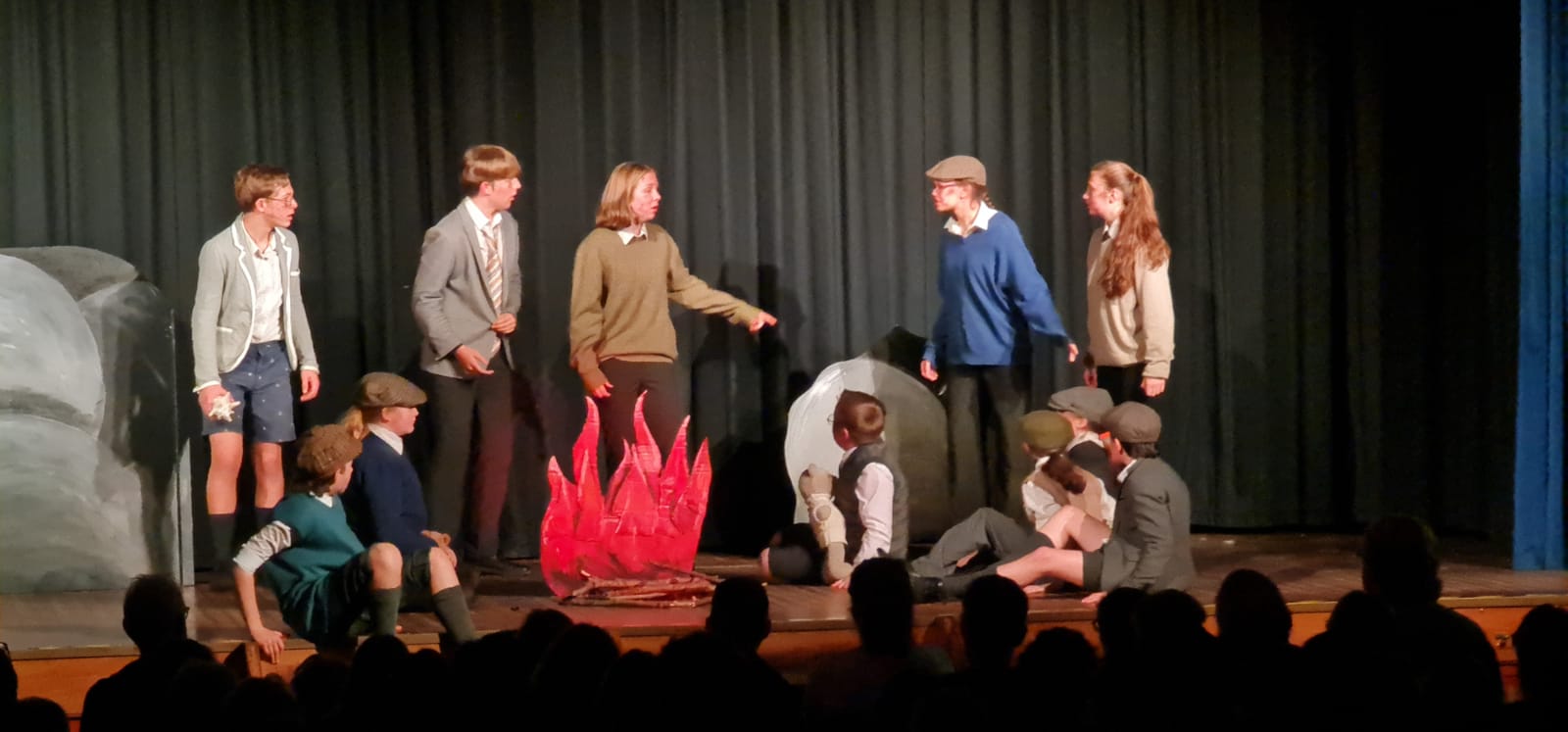
Lord of the Flies (De Grey House)
IT is interesting that whilst all four of this year’s productions featured embattled children, three of them in tribes of one sort or another, De Grey chose (as they often have in the past) to take the path less travelled by, and to produce far and away the bleakest and most crushing of the four of this year’s offerings. Golding’s text studies the terrifyingly swift breakdown of society when a group of children are marooned on a desert island without adult supervision. What starts as an adventure ends in savage murder, and the De Grey directorial team of Bertie Wood, Daisy Hynd, Alex Dale and Maddie Penny took on the challenge of doing justice to this complex and at times heartbreaking story with unflinching commitment to Golding’s message about the fragility of our civilisation.
The play rests upon the volatile rivalry between the two main leads, Ralph (Alex Sanderson) who represents responsibility and the hope of rescue, and Jack (Nancy Manners) who demands power over the group and who embraces violence and short term gain in order to take control. Both of these young actors were superb. Alex’s growing frustration and then horror was beautifully judged, and tinged with the pathos of the dawning realisation that his father will not be coming to rescue him. Nancy, meanwhile, was breathtakingly convincing in her anarchic role, and the steely presence that she exhibited on stage reflects a performer with a deep and exciting talent. The third lead, and the conscience of the play, is Piggy, played with verve and control by Felix Denby. In fearlessly confronting the excesses of Jack and his hunters despite his own vulnerability, Piggy stands for the waning influence of the outside world, and so his murder at the hands of the hunters, acted with a rising sense of panic that was just gut-wrenching, is the dark heart of the play. These three bright stars were very well supported by a young ensemble cast that delivered terrific performances. Notable were Caitlin Brownlee, whose growing terror was almost palpable; Charlotte Wood as the dreamer Simon, whose murder was a horrifying example of mob mentality in action, and Noah Coghlan as Percival, whose childish terror was deeply moving. But the power and grip of this claustrophobic production demanded that every single one of these De Grey actors performed with commitment and conviction, and they did so without exception. Impressive also was the performance of Sam Cann as the Royal Navy Captain at the end of the play, supported by the doughty Bertie Wood in his final House Drama performance. The sudden booming adult voice from the back of the Hall, and the uniformed presence on the stage had the effect, as it is meant to, of breaking the spell cast by the new lords of the island, and suddenly shrinking the warriors and murderers back into the young children they are, and leaving the audience to grapple with that duality. This is powerful, scary stuff and De Grey delivered it with aplomb.
The set was also an extremely effective contributor to the mood and atmosphere of the play. Great jungle fronds drooped against the backdrop, whilst tropical ferns rose to meet them, and the sounds of cicadas and night frogs added another layer of realism. The grisly remnant of the parachutist hung reproachfully in the background, adding to the dark intensity that consumed the audience, and the clever device of the flip-up fire, flaring with a red spotlight and reinforced by the crackling sound effects was a terrific piece of dramatic invention. There was an attention to detail that was remarkable and which spoke of real planning and care from the directorial team, as well as the set and prop designers Neive Zenner and Sofia Sumpter. The body of the slaughtered pig was a very nice touch, whilst the pig’s head itself was a work of art, to the extent that it seemed to take on a manic life of its own, turning on its spike to glare at the audience, before dropping to the floor. It says much for the power of the production that even the mishaps add to its spell. The costuming was simple but again highly effective, with the children becoming ever more tousled and dirty as time went on, only to be contrasted with the crisp uniforms of the officers in the final scene.
In adapting this play, Alex Dale skilfully kept the heart of the story driving through, whilst reducing it to a 45 minute format, which is no mean feat, and the directors used the stage with admirable simplicity to switch from beach to mountain; jungle to clifftop, allowing the pace and flow that would be damaged by pauses and gaps. The neat use of the mid curtains allowed the reveal of the heart of the jungle and the beast itself, and the arrival of the officers through the audience preserved the precious illusion of the stage as the entire island.
This was an ambitious, serious and risky story to take on. Without the intensity produced by the combination of acting, set and technical detail it could so easily have fallen short; but it didn’t, and it was grimly, brutally brilliant.
Outstanding work, De Grey.
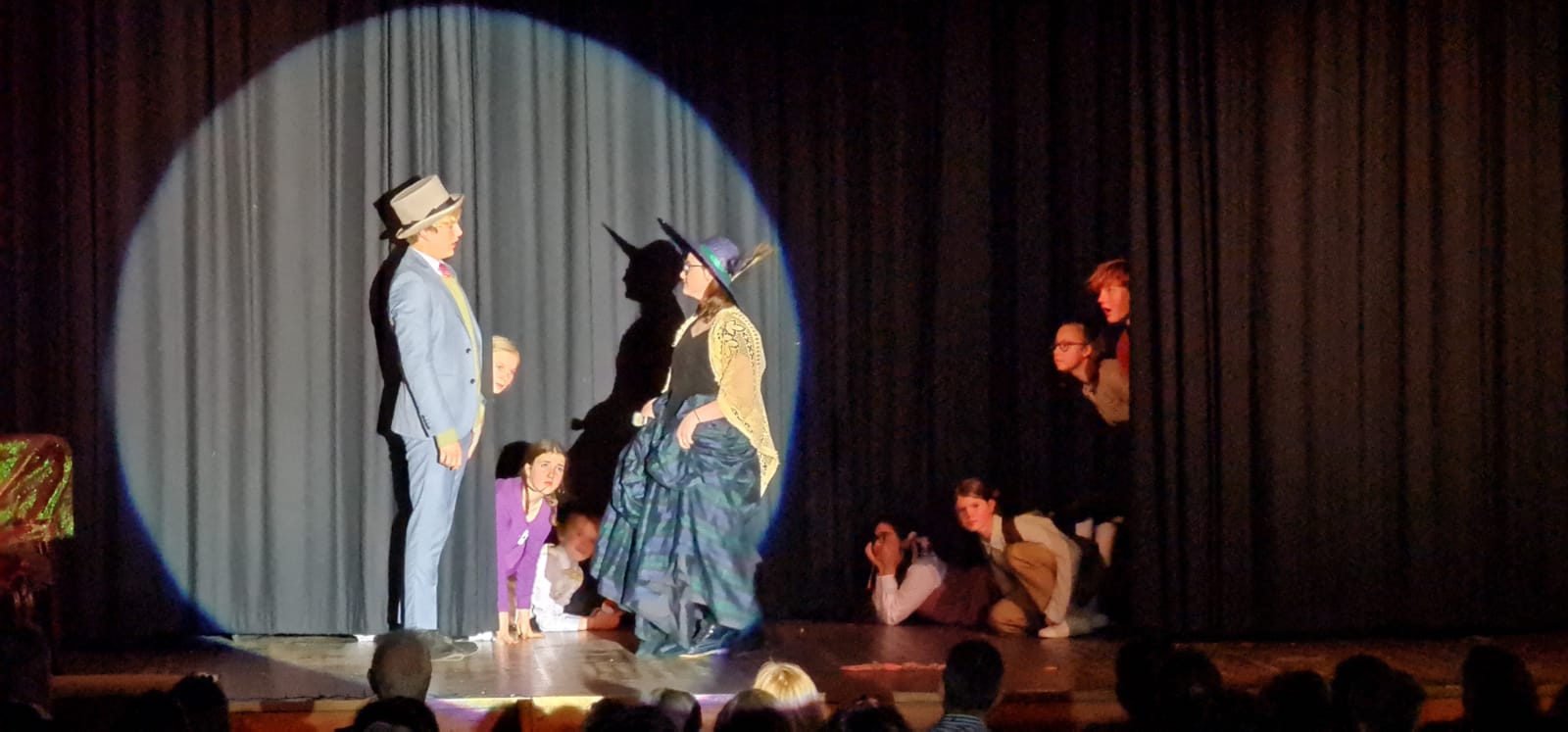
Nanny Mac (Hutton)
IF ever a House Drama evening needed laughter and lightness to finish, this was the evening, and Hutton obliged with glittering jubilance.
This nicely scripted adaptation of the film version offers a gallery of engaging and funny characters, each with chance for their own little ‘steal the show’ moments, and indeed this was one of the strengths of the play identified by the directors (Molly Acton, Immy McMurray, Eloise Forsythe and Posie Abrahams):”it doesn’t have one main character, allowing all our characters a fair part.”
This spirit of shared endeavour and enjoyment was clearly and obviously the DNA of thisHutton production, and the sheer energy and enthusiasm of the cast speaks to the impressive influence that their directorial team have had on them.
The play started with glorious chaos as the horde of children of the widowed Mr Brown (Edward Murray) stormed the stage and turned it into a maelstrom of domestic destruction, with sausages flying this way, apples that way, and potatoes stuck to the roof. Each of these seven actors (Will Wood, Isobella Watson, Anna Thody, Gabbi Higginbotham, Natasha Pointon, James McNamara and Karen Tadrous) delivered memorable performances with crisp lines, great acting off one another and real confidence. Eric’s theory that their new Nanny is indeed a witch was beautifully delivered, whilst Aggie’s wicked use of the giant spider was inspired. Most impressive was that most of these actors were making their House Drama debuts, and so have many years of future performances to come. They were led by an experienced campaigner in Will Wood, whose portrayal of the troubled eldest son was acted with real engagement and conviction, and the relationship with his father, the still grieving Mr Brown, was nicely tempestuous. For his part, Edward conveyed with consummate skill the nuance of the father who is both out of his depth, and yet desperate to do anything, no matter how onerous, to protect his young family. In particular his horrified interplay with the deliciously monstrous Mrs Quickly, played with deep relish by Juliet Morrice, was simply hilarious. Juliet brought both cruelty and avarice to her role, tearing up the stage in thundering fury, and allowing the beautiful contrast with the calm and gentle Evangeline (Katy Thody).
Another wonderful tour de force was Aunt Adelaide, acted by the scene stealing Helena McMurray who seemed to get all the best lines, and to deliver them with peerless comic timing. And as the directors intended, this was a feature of this production. Each character got their chance, from the spoon-twirling skill of ‘stu chef’ Samarth Dasarathi, to Emmett Dalton’s vicar, ponderously trundling his lectern to the fore. The title part of Nanny McPhee herself was played by Hannah Preece, and the tangible calm and presence that she brought to the bright-lit chaos was a deeply effective counterpoint to the mayhem of the Brown tribe. She controlled her pace and the rhythm of her performance with terrific judgement and skill, and so she became the still, quiet eye of the storm around her. The use of her magical stick was cleverly accentuated by sound effect and light, and in a first for House Drama, flickering fairly lights flared from the darkness whenever she used her power.
At the heart of this story is love; the love of the father for his children; the affection of the siblings for one another; the intrinsic love of the child carer for her charges, and central to the happy ending that this story delivered for us, the unspoken love between Mr Brown and Evangeline. Katy Thody is another House Drama debutant, but her portrayal of the kind scullery maid and her glorious transformation under the tutelage of Aunt Adelaide suggests that she will be a leading light for Hutton House for the next few years, and the moment of the declaration of love had the audience celebrating aloud.
The Hutton directors created something very special here. The magnificent costuming, slick and efficient use of the set, inspired casting and the very accomplished directing that glued this inexperienced and diverse cast together into such a strong, confident and convincing team is no small matter of skill and determination, and they must be extremely proud of their work. Little moments of magic attest to this: the sudden freezes of the rampaging cast; Mr Brown’s quiet despair; the beautiful vignette with the children peering round the parted mid curtains to eavesdrop on the conversation; the callous throwing away of the beloved teddy and the transformation of Evangeline – each worth its weight in dramatic gold. This production was a joy to the spirit, and a worthy ending to a fantastic competition.
Well done Hutton. You were just awesome.
We hope you enjoy our extensive photo gallery, capturing both the rehearsals and the live performances, below
